
Affordable Sailboats You Can Build at Home

Last Updated by
Daniel Wade
September 13, 2023
Key Takeaways
- There are many sailboats that anyone can build from home depending on tastes
- Budget will be the biggest deciding factor on a majority of the process
- Consider kits that come with most of what you need or choose ones that are all-inclusive
- Design complexities and new materials may make the building time process longer
- Plan the best you can ahead of time to save money and your working hours
Buying a sailboat can be expensive, but building your own can save you money. So what are sailboats you can build from home?
Sailboats that you can build from home will likely be a small boat under 20 feet. These could be from many different boat suppliers such as B&B Yachts, Brooks Boat Designs, and Chase Small Craft. Boat plans will vary based on your budget and how much time you have on your hands.
Based on my previous experience, building your own boat will take much longer than if a professional were to do it. You also have to be able to study plans, consider various sailboat designs, and have tons of supplies such as fiberglass tape or fiberglass cloth. On top of that, you will also have to be good with your hands.
Table of contents

Top 10 Affordable Sailboats Anyone Can Build at Home
Building your own pocket cruiser or other styles from boat plans is an impressive feat, as this will need dedicated time and money to assure your boat sails safely. Boat building takes a lot of patience as well, especially since this will not be completed in a fast manner.
Finding boat plans and materials that fit your budget will be key to being able to complete the project. The time it takes to complete these projects will vary on your overall experience and needs. Below are 10 of the most affordable sailboats that you can build in the comfort of your home.
B&B Yachts

B&B Yachts have 14 different boat plans you can choose from to find the boat of your desires. Their shop is located along the Bay River in North Carolina where they construct all of the kits and have a 100 foot dock to show off your project once you complete it.
One popular model to check out is their Core Sound 15, as it is the perfect size for those wanting to build a modest size boat for a handful of people on board. Their website features some videos of completed projects and the plans or kits for purchase.
- 14 different models to choose from plus some dinghies
- Various monohull and multihull options
- Friendly customer service with attractive prices
- Might be too many options for some that are indecisive
- Not ideal for those wanting to have a motor sailer
Brooks Boat Designs

Brooks Boat Designs has a handful of options to consider for your next sailboat building project. They are located in Brookline, Maine and give the option to buy the kits or have them build one from scratch for you. They have plenty of knowledge, so do not be shy to ask about modifications or custom features you are looking for.
Depending on your specifics, they can attempt to accommodate some of their plans to help fit your desired outcome. By checking out their site, you can see many examples of their construction in progress and what the boats will look like when completed.
- Offers a variety of kits
- Plans vary around $50 and up, while materials will obviously add more costs
- Some plans can be rowing boats that can convert to sailboats
- Might take a while to hear back from them, as their contact section is a little outdated
- Their plans may not accommodate a ton of extras for your taste
Chase Small Craft

Chase Small Craft offers a simple process for building boats. Their kits are equipped with everything you need and will help save you time than just buying the materials outright and other parts you could need. This is arguably one of the best bang for buck instances if you want to save time and money searching for pieces to your boat.
They are located in Saco, Maine and will ship everything to your home from there. All the necessary materials are included and all you need are the proper tools and working space.
- All-inclusive kits with what you need
- Tons of knowledge on their site for boat building
- Easy process to order and customize
- Complete kits can range over $20,000 for larger boats
- Kits may take up to eight weeks to ship out
Chesapeake Light Craft

You can expect high-quality boat kits from Chesapeake Light Craft . They feature 18 different sailboat kits that vary from eight to 20 feet in length. This should be more than enough to find one for you if you are newer to boat building.
They also have a wide variety of other kits in addition to the sailboat, in the event that you wanted to order a small kayak or paddleboard in addition to your sailboat. The prices vary considerably when considering a small or larger boat, so check the complete list of options to in order to potentially fit your needs.
- Plenty of sailboat offerings to choose from
- Different beautiful hull form options to consider
- Easy to build and perfect for sailing
- Only has basic materials needed for kit, so you may need to purchase other items
- Has epoxy shipping fee no matter if you pick up item
Dudley Dix Yacht Design
Dudley Dix Yacht Design has an extensive list of plywood and single skin sailing boat options. They have plenty of sail plans and kits to consider depending on your goals. These follow a classic look for sailboats, which are aesthetically pleasing.
If you are wanting one to accommodate a small family, they have more than plenty to look through. The cost is not as bad compared to others, but keep in mind that you may need to throw in your own supplies or specific tools to get the job done.
- Plans start at $30 and range up to $7,500 or more for kits
- More than enough of options to consider
- Affordable variety of sailboat offerings
- Might be too many options for those new to sailing
- Most are wood without the use of aluminum or steel
Farrier Marine

If you are in search of a multihull to build, then Farrier Marine is what you need. They offer a unique folding catamaran that is trailerable and give you the option to build it yourself. This not only makes it an appealing option, but anyone can take this multihull boat wherever they want with ease.
It features a thorough construction guide once you receive all of the materials. These also come with stainless steel fasteners and an aluminum mast for high-quality materials. Pricing will vary since you must request which model type you are considering.
- Ability to build a unique catamaran
- In-depth construction guide to help
- Easily handled and trailerable
- Price may be too high
- Limited offerings since only a few multihull options
Glen-L Marine Designs

Building a boat from Glen-L Marine Designs can save you time and money. They feature an easy system to order and receive the kits, as well as an in-depth guide to building them. This is an appealing option compared to most boat kit sellers.
The beauty about Glen-L is that anyone can build these from scratch, so you do not have to be the best boat builder in the world to get it done. They offer guides and helpful insights from their team to point you in the right direction. Plans vary around $15, while kits can range well over $1,000 depending on boat size.
- Nearly 50 designs to choose from
- Complete guide to help anyone build it
- Plenty of price points depending on size
- Might be overwhelming with the amount of options
- Could take a while to get parts since they are popular
John Welsford Boat Designs

John Welsford Boat Designs invites new and veteran boat builders that want a taste of quality small wooden boats. The boat plans are designed to meet your specifications and are catered to your desires.
There are seven sailboat designs to choose from so you do not feel overwhelmed in the process. However, they do not sell kits all the time, so you would need to have the materials or be on the lookout for the best prices when they are available.
- Seven sailboat plans with different sizes
- Quality boat builder and supporting community
- In-depth knowledge provided to you when you order
- Might be too small of boat size
- Kits are not always available
Iain Oughtred
There are plenty of options on the wooden boat store, but you should narrow down your search for Iain Oughtred’s line of sailboat kits and plans. There are 25 different plans to choose from, which should accommodate most everyone looking to build their own boat.
While they do offer some kits, they do not routinely offer sailboat kits. You would need to purchase all of the materials if you are considering one of their sail plans. Keep this in mind if you are considering, as you would need to hunt down the parts yourself.
- 25 different sailboat plans to look through
- Various sizes to contemplate for you sailing needs
- Prices will vary but are not bad compared to market
- No sailboat kits, only plans
- Newer boat builders might find too many options unappealing
Paul Gartside Boat Builder and Designer
Gartside Boats is a boat builder company based in Long Island, New York that showcases a variety of boats from traditional and newer methods of boat building. Within that variety, they have boat plans meant for six to 50 feet in length.
With an abundance of options, you will need to contact them regarding prices and any customizable options. Kits may vary as well, as they typically design in-house and build for you.
- Experienced boat designer that can accommodate with custom plans
- Many options are trailerable
- Can have plans for up to a 50 foot boat
- You will need to contact them for prices
- Customized options may make process more complicated for new boat builders
How Much Does it Cost to Build a Sailboat at Home?
As you have likely already done so, the math between building your own boat and buying one may be a huge difference. Likewise, you may even enjoy the challenge of taking an older boat that is gutted and restoring with parts from a kit to build one new again.
But how much does it cost exactly to build a boat from the comfort of your own garage or workshop? The prices are going to vary dramatically depending on your situation and material needed to get the job done. In addition, the time that it takes to complete this will also vary.
Sail plans are rather inexpensive if you are aiming to build a small boat. These plans allow you to see the workings of the boat design and what you need to build the boat.
Without these plans, you will not know the exact details of the design and it can cause major issues with the boat’s hull or other areas of the boat. Think of these as the backbone or instructions of the boat’s infancy before being built.
Price Per Square Foot
You should assume to pay anywhere between $300 to $600 per square foot if you are interested in building a boat. Buying a kit outright can be a good way to save time, but oftentimes these do not come with everything you need.
Instead, you should try to source as much of the materials at the best price as possible. Thinking ahead is part of the process and you might be able to score a deal at a lumber yard or hardware store for parts.
Boat Designs Matter
The design of the boat will be much different from one boat to the next, regardless if they are the same size in length. If you are pondering boats that range anywhere between 16 and 20 feet, you should factor in the shape of the hull, any rigging, and various appendages.
Prices tend to increase when there are more complexities within the designs. If you are considering a kit with more details than others, you will also have to pay more for the designs on that as well.
Kits Can Differ
It is important to understand that all kits are not going to be the same. As you gander at sailboat kits online to stitch together, you need to thoroughly look over to see if you have everything you need before buying.
It would also be at your advantage to ask the seller if any additional parts or supplies are needed. This may change your dynamic on the kit buying process and you may pass up one for another if it has everything you need. An all-inclusive kit may cost several hundred, if not thousands, of dollars more to have the convenience of everything in the bundle.
Construction Approaches
Some boat plans may require you to have certain tools to get the job done. This means special saws or planers, which the average person simply does not have.
Purchasing specialty tools might be expensive upfront and hard to find depending on what it is. Your best bet would be to check locally for others trying to sell their tools or consider a boat plan that does not require extensive tools to finish the job.
How Long Does it Take to Build a Sailboat?
An easy to build sailboat could take a while to build from scratch. Many different variances come into play that are difficult to pinpoint for everyone. But how long is that exactly and how will your experience play into this?
A fun project to sail in the wind could take you several months to well over a year depending on the boat plan and how big your boat is going to be. In addition, the materials all need to be accounted for prior to starting in the event a hardware store does not have them in stock.
Time Varies
The time that passes for simple boat designs on small sailing vessels can be done in a few weeks. This is assuming you have everything you need and work non-stop around the clock.
Certain complex situations may make the process long, such as the difficulty of working with some materials. If you are a skilled laborer, it may take you half the time compared to a novice. The amount of time it can take will vary on your availability and skill level.
Planning ahead will undoubtedly offer the most time-saving features. It also helps if you can tackle parts of the project at your own pace.
Complexity of Design
The design of the boat may make the construction process longer. For example, it may take you longer to build a catamaran compared to a similar lengthed monohull.
More complex designs might require more materials, therefore making the process a bit longer to complete. Furthermore, you will also need more experience working with difficult designs and that will affect you more as a newbie.
Be sure to manage your expectations well and do not allow yourself to become too stressed over this fun project. If you can, seek expert boat building advice from a local builder or the company you purchased sail plans through.
Quality Materials
The quality of the materials will matter significantly when building a boat and will greatly affect the time it takes to construct it. Handling fiberglass or carbon fiber might require specialty tools, while wood also demands a certain level of craftsmanship.
If you are not skilled at working with the material at hand, it might affect the quality of the build and you may have to go back to fix mistakes. This will definitely add more time to your project, because mistakes are bound to happen with your first project.
To save time, consider adding the tools and materials throughout the year or as often as your budget allows. You may want to try testing your skills on fiberglass or other materials to get a feel for how to work with it.
Related Articles
I've personally had thousands of questions about sailing and sailboats over the years. As I learn and experience sailing, and the community, I share the answers that work and make sense to me, here on Life of Sailing.
by this author
Best Sailboats
Learn About Sailboats
Most Recent

Best Small Sailboat Ornaments
September 12, 2023

Best Small Sailboats With Standing Headroom
December 28, 2023
Important Legal Info
Lifeofsailing.com is a participant in the Amazon Services LLC Associates Program, an affiliate advertising program designed to provide a means for sites to earn advertising fees by advertising and linking to Amazon. This site also participates in other affiliate programs and is compensated for referring traffic and business to these companies.
Similar Posts

Discover the Magic of Hydrofoil Sailboats
December 11, 2023

Best Bluewater Sailboats Under $50K

Hunter Sailboats: Are They Built for Bluewater Cruising?
August 29, 2023
Popular Posts

Best Liveaboard Catamaran Sailboats

Can a Novice Sail Around the World?
Elizabeth O'Malley
June 15, 2022

4 Best Electric Outboard Motors

How Long Did It Take The Vikings To Sail To England?

10 Best Sailboat Brands (And Why)
December 20, 2023

7 Best Places To Liveaboard A Sailboat
Get the best sailing content.
Top Rated Posts
Lifeofsailing.com is a participant in the Amazon Services LLC Associates Program, an affiliate advertising program designed to provide a means for sites to earn advertising fees by advertising and linking to Amazon. This site also participates in other affiliate programs and is compensated for referring traffic and business to these companies. (866) 342-SAIL
© 2024 Life of Sailing Email: [email protected] Address: 11816 Inwood Rd #3024 Dallas, TX 75244 Disclaimer Privacy Policy
- For Sale/Wanted
- Readers Tips
- Your Yarns.
- Restoration
- Miscellaneous
- DIY Boat Yards
- Boat Building
- Cabin Cruisers
- Free Boat Plans
- Begin Boating
- Boating Terms
- Ropes and Rigs
- Just for Fun
- Celestial Navigation
- Passage Planning
- VHF Marine Radio
- Diagonal Scale
Sailboat Plans
Free Sailboat Plans
A selection of some of the Free Sailboat Plans (pdf) that were published in magazines such as “Popular Mechanics”, "Popular Science" and the "Boat Builder Handbook".
If you need help with lofting out the plans click here for an article here which should help.
- Open Dayboats/Dinghys
- Rowing Boats
Open/Dayboat, Free Sailboat Plans
Everyone who digs boating has heard of the Hobie Cat, the sleek little catamaran that burst on the scene and captured the attention of all the fast-action sailors.
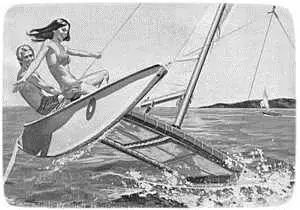
Marked by asymmetrical hulls and special trampoline supports, the Hobie can reach speeds above 20 mph and perform with a rare agility.
But it has one drawback.
It costs mucho dinero.
Thus, we introduce the Hobby Kat, sailboat plans, a build-it-yourself version of the “Hobie” that should cost from half to a third of the commercial version. If you have the moola, of course, go for a Hobie and have the time of your life on the water.
If not, try our Hobby
The homebuilt is not quite the same.
But she sails sweetly and fast—qualities which have made the “Hobie” popular
Even in a light air she’ll slip through the water at a fast clip.
She has no centreboards, leeboards or keel, and needs none.
The inside of each hull has built-in lift, like an airplane wing, so that as the boat heels and one hull digs in the boat is pulled back to windward.
Click Here for the Plans
She can run in very shallow water and the rudders kick up for beaching.
You can carry her on a trailer or even disassemble her.
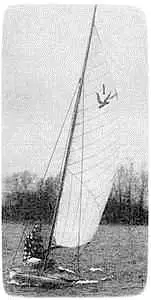
Many a “stink pot” addict will take a second look at Tern because she planes in modest breezes, is easy to handle, and her streamlined prow arid pod-shaped, “inland scow” type hull offer slight water resistance. Then too, there’s a charm about the tiller of a sailer that’s not matched by the wheel of a motor-powered boat. Part of it is the challenge of making the most of nature’s free-wheeling breezes. Even with her 72sq.ft of sail, this Free Sailboat Plan is remarkably stable, and packs as many as four persons aboard
For thousands of inland lakes, Tern is the answer to sailing water sport, she is rugged and easy to launch
And she’s remarkably easy to build.
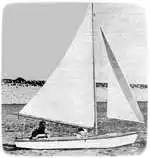
Falcon is a small, speedy, sporty sailboat which handles well. Tests on the original Falcon showed that she could easily out-distance boats of comparable size such as the one design class Snipe and Comet sailers.
And she will pace neck and neck with 18 footers with considerably greater sail spread.
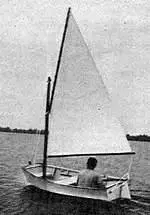
This strong, beamy, eight-foot pram may be sailed either cat-rigged or sloop-rigged.
The dagger-board may be adjusted forward to balance the helm when sailing with the addition of a jib sail.
Oars or a small outboard motor may also be used to power this versatile Free Sailboat Plans.
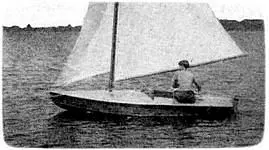
Dart” is a small two or three person sailing craft, designed for use on protected waters such as bays. lakes, rivers or wherever sheltered waters are found. Its construction will repay the builder handsomely and provide a fast sailing craft, light in weight, easily transportable and cheap to construct with all difficult joinery eliminated
It provides thrilling and economical sport.
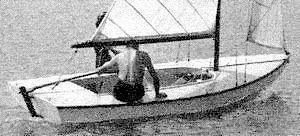
The 'Crescent', designed by C. T. Allen, is the ideal sailboat for day sailing on a small lake, river, or protected waters of a bay.
Centreboard design (Fig. 2) reduces Crescent's draft, so Shallow is not a problem.
Its broad beam of over 5½ft. makes it an ideal family boat because there is room for a cockpit large enough to accommodate four adults or two adults and three kids, and side and forward decks big enough to stretch out on when sun bathing.
"Jewel" is a 16' Crescent Sailboat being built by Mike Allen from the free sailboat plans by C.T .Allen in the 1958 "Boat Builders Handbook". And what a superb job Mike is doing check out his photos here .
Click Here for the Free version of the Plans
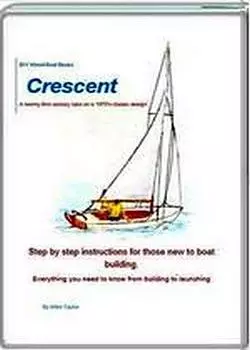
Sailing enthusiasts and backyard boat builders are not likely to find free boat plans for a sailing pram that can be built faster, lighter, stronger, or less expensively than Graefin-10. Two men can begin work on a Friday evening and have a smart, lively 10-ft. 85-pound sailboat in the water by Sunday evening (it’s been done).
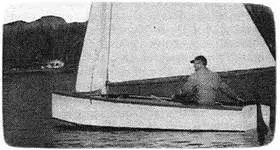
Zephyr Is a refinement of a type of boat developed by the English for use in the rough open waters of the English Channel. Not only is it fast under sail, but it can stand up under punishment. And it’s light enough to be easily loaded atop an auto or light trailer.
Breeze-Baby
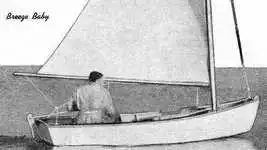
Skimming off a brisk wind or with the wind abeam, Breeze-Baby actually planes with one person aboard. Despite her rowboat lines that make her easy to build, she handles easily under her simple sail, an ideal first boat. Simple lines are adapted to plywood construction that’s strong, light and that keeps Breeze-Baby’s bilges dry
You can take her with you atop your car or on a lightweight trailer for summer fun wherever you vacation or get in a week-end’s sailing.
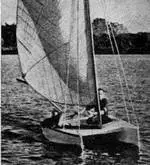
Cat’s Paw is easy to build because of the straight-sided hulls. The sheer line is flat and that simplifies building the form. Bow and stern are straight, so there’s no cockeyed bevel to fit and fuss with
She Is an Ideal boat to learn or practice sailing in because she will forgive so many mistakes.
Cabin Cruiser, Free Sailboat Plans
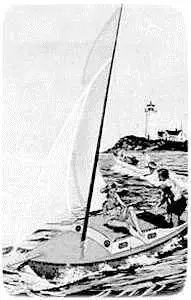
Previous posts
See What Others Have Posted

Recent Articles
Wooden Boat Events 2024
Apr 14, 24 05:15 AM
- Boat Plan Books
- Boatbuilding Tips
- Glass Cloth
- Stitch and Glue
- Strip Plank
You might like these

Plywood and Veneer Guide for Marine use.
A guide to plywood for boat building and why you should use the best marine grade you can afford.
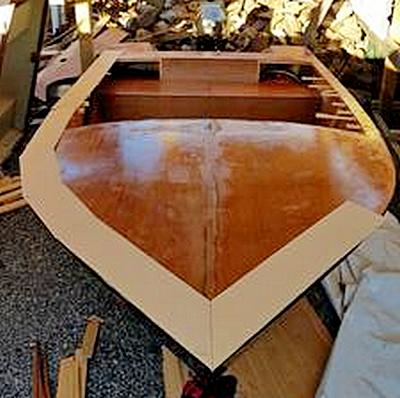
DIY Woodboat Building Questions
Woodboat building questions a Forum for wooden boat building, plans, lumber, caulking compounds and other boat building problems.

Boat Books for Wooden Boat Builders
Boat Books a series of boat books based on some of the 1960's, classic, Free Boat Plans that were published in magazines such as "Popular Mechanics", "Popular Science" and the "Boat Builder Handbook".

Build a Boat, tips for the DIY Wooden Boat Builder.
How to Build a Boat, Wooden Boat Building methods for the DIY, backyard, self-builders explained, carvel, lapstrake and plywood
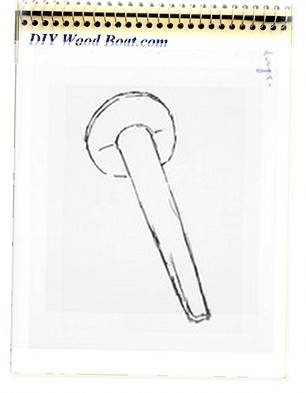
Clench Nails, Fastening for Small Wooden Boats.
How to use Clench Nails, these provide a fast reliable method for fastening small wooden boats.

Wood Screws for Boat Building and Repair.
Wood Screws are the most widely used and versatile fasteners used on wooden boats. Which type to use and how to use them

Timber, Lumber for Boat Building.
A brief description of the most common Timber used for building Wooden Boats how to choose wood for your project boat

Timber Properties
A brief guide to timber properties and wood, characteristics such as strength, stiffness and elasticity for choosing lumber for wooden boat building and restoration.
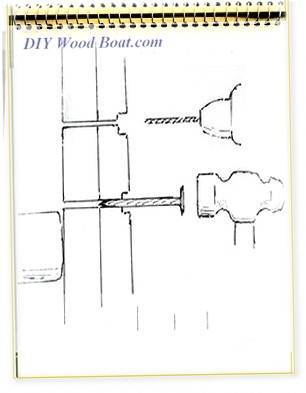
Rivets and Copper Rove Wood Boat Fastenings.
How to use Copper Rivets and Roves construction guide to fasteners on your wooden boat.

Ring Nails for Marine Fastening.
Ring Nails sometimes call Gripfast or ring shank, silicon bronze boat nails are renowned for their holding power. but how to get them out?

Free Motorboat Plans
Free Motorboat Plans for the backyard home builder, build your own speed boat, cabin cruiser, runabout or utility boat using these simple plywood designs.
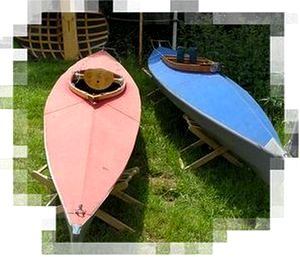
Wooden Boat Kits.
Wooden boat building is easy and inexpensive with wooden boat kits. From row boats and kayaks to sailing cruisers, boat to be proud of

Supplies for Wooden Boat building and Maintenance
Supplies for Wooden Boat Building and restoration, how to choose the materials and marine chandlery for your project.

DIY Woodboat Questions
Woodboat questions and answers forum for all Wooden Boat owners, advice and opinions on all aspects of wooden boat building, restoration and maintenance.

Small Boats, Made of Wood
What Everybody ought to know about building Small Boats, guidance and tips for self-building or restoring.
14’ 1956 Chris Craft, side rail how should it be attached?
Apr 12, 24 03:38 AM
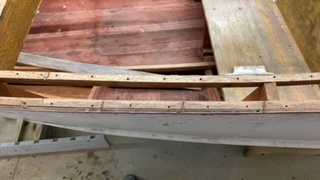
How to laminate plywood on the hull
Apr 10, 24 03:46 AM
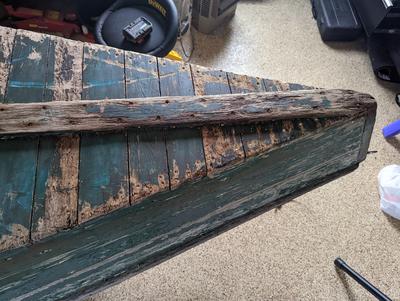
Woodboat Restoration questions forum
Woodboat restoration questions Forum, get advice about your Wooden Boat problems in a free, no frills, no need to sign up forum

Epoxy Resin for DIY Wooden Boat Building.
A guide to the epoxy resins and sustainable enrtopy resins to use when building wooden boats with marine plywood.

Wood Rot Repair and Treatment
Wood rot in wooden boats, how to treat, repair and replace rotten timbers in a wooden boat
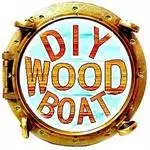
Privacy Policy
Advertising Policy
Cookie Policy

I am perfectly aware that the majority of Wooden Boat aficionados are sensible folk. However, I need to point out that I am an amateur wooden boat enthusiast simply writing in order to try to help other amateur wooden boat enthusiasts. And while I take every care to ensure that the information in DIY Wood Boat.com is correct, anyone acting on the information on this website does so at their own risk.

- No products in the cart.
Build your own sail boat with Hartley Boat Plans. Hartley sail boats are the benchmark in reliable and sea worthy trailer sailers, in fact the name trailer sailer was coined by these amazing craft. Many of these build plans also have a printed study pack available to help you through your project.
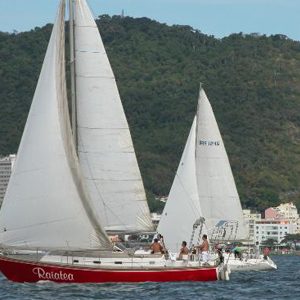
Cape Bay 45
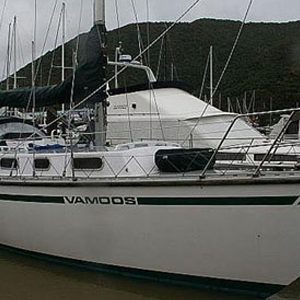
Cape Otway 37
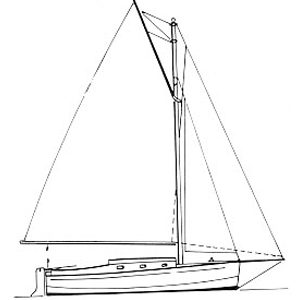
Chuckles 18
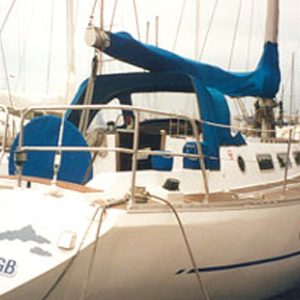
Dateline 51
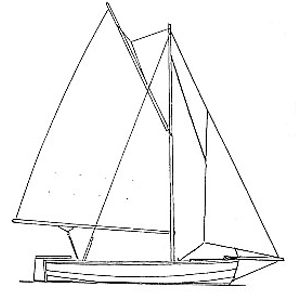
Eastcoaster 16

Easthaven 34
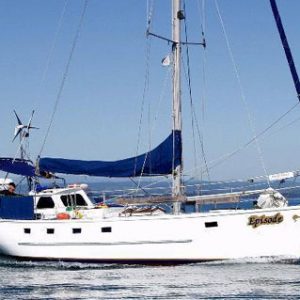
Hartley 16ft (5m) Trailer Sailer
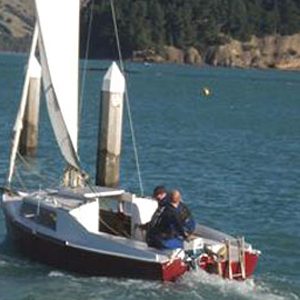
Hartley 30 (Plywood Version)
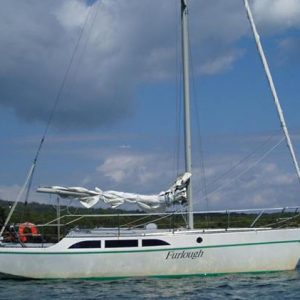
Hartley 30 (Steel Version)
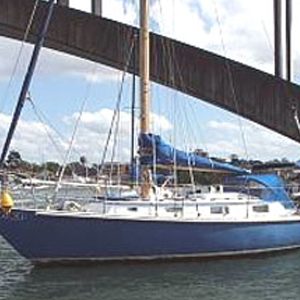
Royal Suva 52
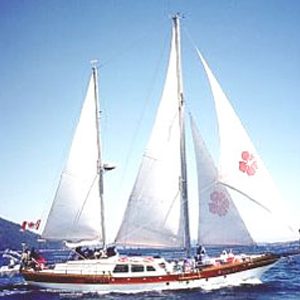
Samson ‘C-Baron’ 55
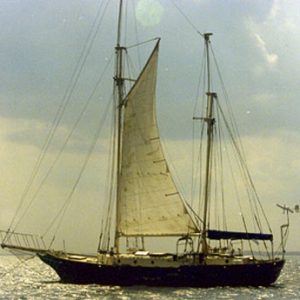
Samson ‘C-Breeze’ 45
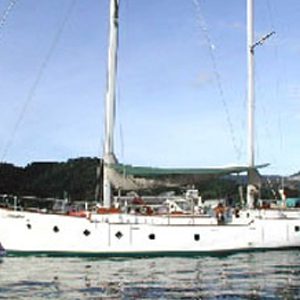
Samson ‘C-Deuce’ 45

Samson ‘C-Fever’ 62

Samson ‘C-Lord’ 53
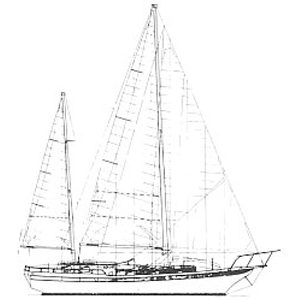
Samson ‘C-Quence’ 36
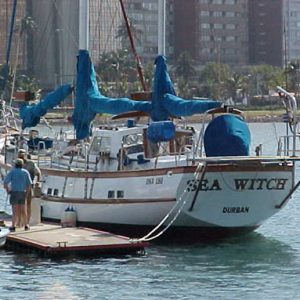
Samson ‘C-Witch’ 63
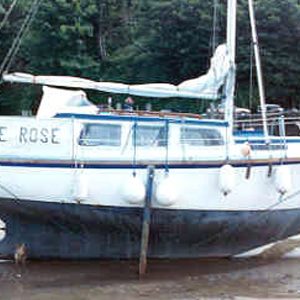
Tahitian 27
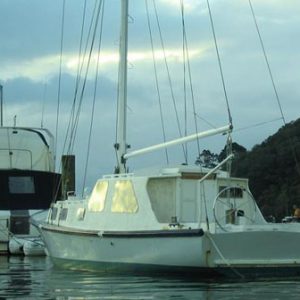
Tahitian 33

Tahitian 38
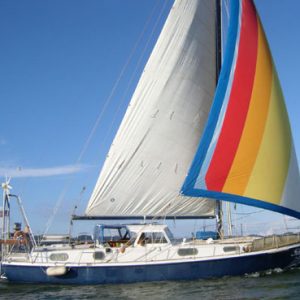
Tahitian 45-50
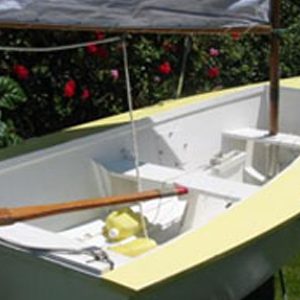
Westhaven 32

Step-By-Step Guide: How to Build a Wooden Sailboat – Complete DIY Tutorial
Alex Morgan
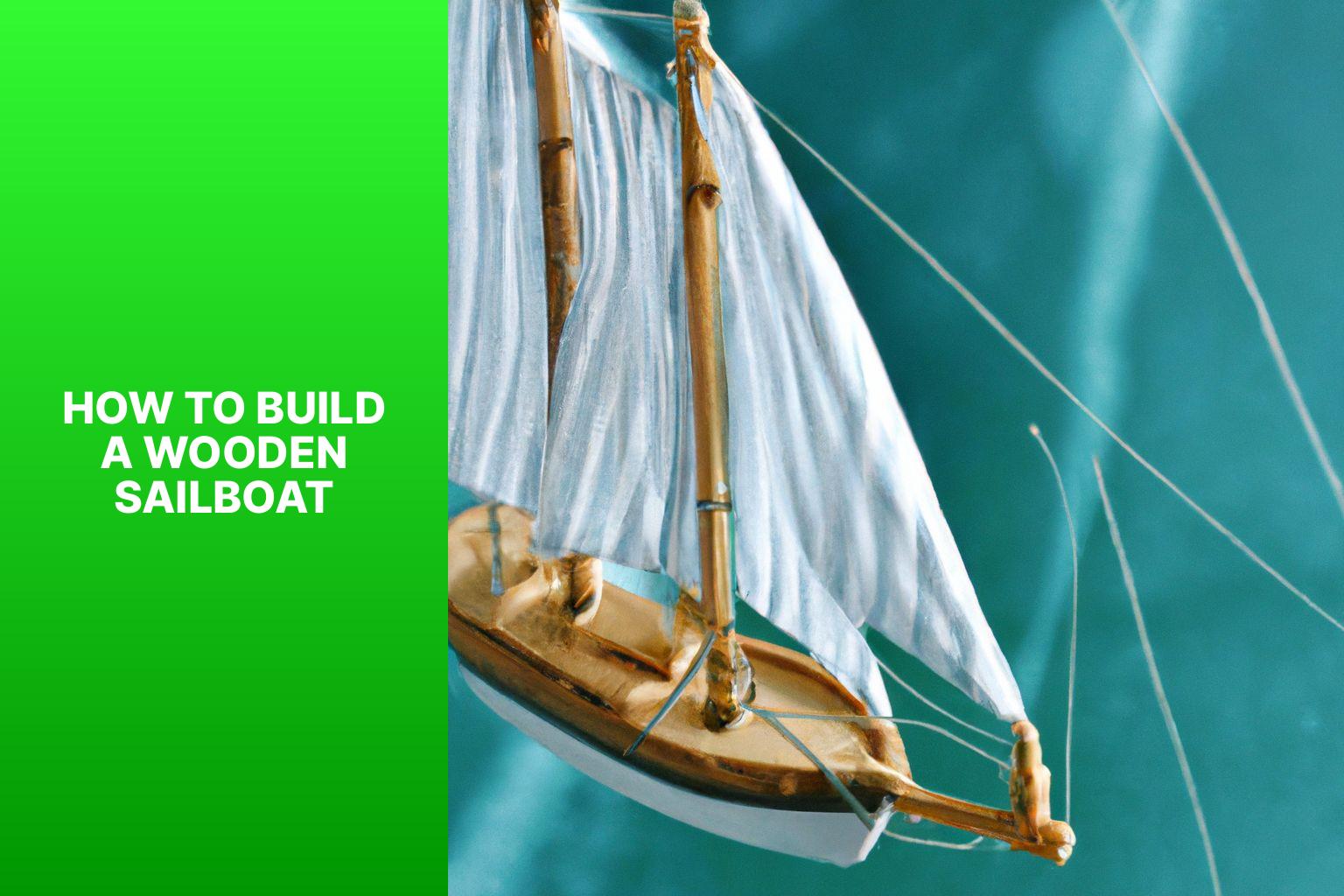
Building a wooden sailboat is a rewarding and fulfilling endeavor that allows you to create your own vessel for sailing adventures. Whether you’re a seasoned sailor or a woodworking enthusiast, constructing a wooden sailboat requires careful planning, attention to detail, and a love for craftsmanship. This comprehensive guide will take you through the step-by-step process of building a wooden sailboat, from choosing the right design and gathering the necessary materials to assembling the framework, building the deck and cabin, and installing the sails and rigging. We will also discuss the finishing touches and regular maintenance required to keep your wooden sailboat in optimal condition for years of enjoyment on the water. Let’s dive into the world of wooden sailboat construction and embark on this exciting journey together.
Key takeaways:
Key takeaway:
- Choosing the right design and plans is crucial: Research different sailboat designs and select suitable plans based on your skill level to ensure a successful project.
- Gather the necessary materials and tools: Pay attention to wood selection and preparation, as well as acquiring the tools and equipment needed for building your wooden sailboat.
- Attention to detail in the construction process is important: Prepare and assemble the framework carefully, focusing on lofting, laying out the keel, constructing the ribs, and the hull structure to ensure a sturdy and reliable sailboat.
Choosing the Right Design and Plans
When it comes to building a wooden sailboat, one of the crucial steps is choosing the right design and plans. In this section, we’ll take a deep dive into the world of sailboat designs and explore the vast array of options available. From researching different sailboat designs to selecting plans that match your skill level, we’ll guide you through the exciting process of bringing your wooden sailboat dream to life. So, hop aboard and let’s set sail on this exhilarating journey of craftsmanship and adventure.
Researching Different Sailboat Designs
When conducting research on sailboat designs, it is important to take into account a variety of factors in order to select the most suitable design. One of the primary considerations is whether you prefer a monohull or a multihull sailboat. Monohulls are more commonly found and offer superior performance when sailing upwind, whereas multihulls provide both stability and speed.
Another aspect to consider is your level of sailing experience. If you are a beginner, it is advisable to seek out designs that are easier to handle and forgiving. On the other hand, experienced sailors may gravitate towards performance-oriented designs that are ideal for racing or long-distance cruising.
It is crucial to think about how you intend to use the sailboat. Are you looking for a day sailer , a cruiser , or a racing boat ? Each design comes with its own set of distinctive features and characteristics.
Determining the appropriate size of the sailboat is another crucial step, which should be based on the number of people and activities you plan to have on board. You must also decide whether you prefer an open cockpit or an enclosed cabin .
To find the perfect sailboat design that aligns with your sailing goals and preferences, it is imperative to thoroughly research various options and take into consideration all of these factors. By doing so, you will be able to make an informed decision and select the ideal sailboat design.
Selecting Suitable Plans for Your Skill Level
When it comes to building a wooden sailboat, it is crucial to select suitable plans that match your skill level. This is important as it ensures that you have the necessary knowledge and expertise to effectively complete the construction. In order to help you with this, here is a table that outlines the different skill levels and the corresponding plans:
Choosing the right plans for your skill level is essential as it enables you to navigate the construction process smoothly, avoid any complications, and ultimately achieve the desired result. It is crucial to honestly evaluate your woodworking skills and then select plans that align with your abilities. Keep in mind that building a wooden sailboat demands patience , attention to detail , and a willingness to learn and improve your woodworking skills.
As a pro tip, if you are a beginner, it is advisable to start with simpler plans and gradually work your way up to more complex projects. This allows you to gain experience and confidence in your woodworking abilities over time. So always remember to select suitable plans for your skill level and enjoy the process of building your wooden sailboat.
Gathering the Necessary Materials and Tools
When it comes to building a wooden sailboat, gathering the necessary materials and tools is key . In this section, we’ll dive into the exciting world of selecting and preparing the right wood for your sailboat, as well as the essential tools and equipment you’ll need to bring your project to life. So, start sharpening your creativity and let’s sail away into the realm of wooden boat construction!
Wood Selection and Preparation
Incorporating the provided keywords naturally in the provided text:
1. Conduct research on the different types of wood used in boatbuilding, such as mahogany , teak , or oak . This will help you make an informed decision regarding the most suitable wood for your sailboat.
2. Determine the specific requirements of your sailboat design in order to guide your wood selection process. Each design may have different needs and preferences when it comes to the type of wood to be used.
3. Take into consideration the durability and resistance to rot of the wood options available. This is crucial to ensure the longevity and overall quality of your sailboat. Choosing a wood that can withstand exposure to water and other elements is essential.
4. Look for straight , dry , and defect-free wood. This will contribute to the structural integrity of your sailboat. Any defects or irregularities in the wood may compromise its strength and performance.
5. Calculate the amount of wood needed based on the specific design and measurements of your sailboat. This will help you estimate the quantity of wood required for the construction process.
6. Mill or cut the wood into the required dimensions and shapes as outlined in the sailboat design. This step is crucial for achieving the desired structure and appearance of your sailboat.
7. Prior to assembly, it is important to sand the wood surfaces thoroughly. This will remove any rough edges or splinters, ensuring a smooth and safe finish.
8. Apply a protective coating or sealant to the wood in order to prevent water damage. This will help preserve the wood and extend its lifespan .
By following these steps, you can ensure that the wood selected and prepared for your sailboat construction is suitable and of high quality.
Tools and Equipment Needed for the Project
When embarking on the construction of a wooden sailboat, it is crucial to have the appropriate tools and equipment to ensure successful completion.
To accurately measure and obtain precise alignment and dimensions, essential measuring tools such as a tape measure , combination square , and level are indispensable.
For shaping wooden components, cutting tools like a circular saw or table saw , jigsaw , and hand saw are necessary.
Joinery tools, including a chisel set , mallet or hammer , and drill with different-sized bits, are vital for smoothly joining parts together.
To achieve a polished finish, sanding and finishing tools such as sandpaper with varying grits, sanding blocks , and a random orbital sander are crucial.
Additionally, brushes and rollers are required for the application of finishes.
When it comes to safety, it is imperative to prioritize the use of safety goggles , ear protection , a dust mask , and work gloves to ensure personal protection during the construction process.
When selecting tools and equipment, it is essential to invest in high-quality items that are specifically designed for the tasks involved in wooden sailboat building.
By doing so, not only will efficiency be maximized, but the overall quality of the finished boat will also be greatly enhanced.
Preparing and Assembling the Framework
As we delve into the world of building a wooden sailboat, we now find ourselves in the exciting phase of preparing and assembling the framework. In this section, we’ll discover the essential steps that go into setting up the lofting and laying out the keel , as well as the intricacies of constructing the ribs and hull structure. Get ready to immerse yourself in the hands-on process of bringing this magnificent vessel to life!
Setting Up the Lofting and Laying Out the Keel
To properly set up the lofting and lay out the keel for a wooden sailboat, it is important to follow these steps in a systematic manner:
- Firstly, prepare the lofting area by clearing a large, flat space where the plans and measurements will be placed.
- Next, securely attach the keel stock to the lofting platform, making sure it is both level and aligned with the boat’s centerline.
- Using battens, rulers, and pencils, transfer the measurements and lines from the boat plans onto the lofting platform.
- Ensure the accuracy of the waterlines, buttock lines, and other reference lines on the lofting platform by drawing them according to the measurements provided in the boat plans.
- Utilizing the dimensions indicated in the plans, measure and mark the positions of the keel, stem, and transom on the lofting platform.
- Thoroughly examine and adjust all lines and measurements to guarantee their accuracy.
- Identify the locations where any additional frames, bulkheads, or structural elements will connect to the keel, by marking them accordingly.
- Prior to proceeding, double-check all marks and measurements to ensure their accuracy.
The process of setting up the lofting and laying out the keel is an integral step in the construction of a wooden sailboat. It serves as the foundation and reference points for the boat’s overall structure. It is crucial to pay close attention to detail and maintain accuracy throughout the build. By following these steps, you will be on your way to constructing your very own wooden sailboat.
Constructing the Ribs and Hull Structure
When constructing the ribs and hull structure of a wooden sailboat, follow these steps:
– Measure and cut the ribs: Use the plans as a guide to mark and cut the dimensions on the wood. Cut the ribs accurately.
– Attach the ribs to the keel: Position and attach the cut ribs evenly along the keel using marine epoxy and screws.
– Install chines and stringers: Attach the chines to the bottom edge of the boat and install the stringers along the sides for strength.
– Attach the planking: Cut and fit planks to cover the rib and stringer structure, securing them tightly.
– Reinforce the joints: Apply epoxy and fiberglass tape over the joints to strengthen the structure.
– Shape the hull: Use tools to shape and smooth the hull, paying attention to fairing for optimal hydrodynamics.
– Apply a protective finish: Coat the hull and ribs with marine-grade varnish or epoxy for durability.
– Perform a thorough inspection: Check for defects, cracks, or imperfections and make necessary repairs before moving forward.
The process of constructing wooden sailboats has evolved over time, combining traditional techniques with modern materials and tools. Craftsmanship, attention to detail, and an understanding of wood’s properties are still essential in constructing the ribs and hull structure. This blend of artistry and engineering ensures sailboats can withstand the demands of the sea while providing a smooth and enjoyable sailing experience.
Building the Deck and Cabin
Let’s dive into the exciting world of building a wooden sailboat! In this section, we’ll focus on the crucial element of constructing the deck and cabin. Get ready to explore the process of creating the deck framework and adding those essential interior features . From laying the foundation to crafting a cozy cabin space , we’ll uncover the key steps and considerations for bringing your wooden sailboat to life. So, grab your tools and let’s set sail on this exhilarating construction journey !
Creating the Deck Framework
When creating the deck framework for a wooden sailboat, follow these steps:
- Measure and mark the desired deck size and shape on the boat’s frame.
- Cut and shape the wooden planks or panels to match the marked measurements.
- Align the planks or panels horizontally across the frame, ensuring they are straight and evenly spaced.
- Secure the planks or panels to the frame using screws or nails, ensuring tight fastening.
- Add additional support beams or joists underneath the deck for added strength and stability.
- Sand the deck surface to create a smooth and even finish.
- Apply a weather-resistant sealant or paint to protect the deck from moisture and UV damage.
- Install necessary features or fixtures on the deck, such as hatches, cleats or railings.
Pro-tip: Enhance the deck’s strength and durability by adding epoxy or marine adhesive between the joints before securing the planks or panels.
Installing the Cabin and Interior Features
When building a wooden sailboat, it is important to pay attention to every step, including the installation of the cabin and interior features. To install these features, follow the following steps:
1. First, measure and cut the materials for the cabin walls, floor, and ceiling.
2. Next, securely fit the cabin walls in place.
3. Then, attach the floorboards to the cabin base using screws or nails.
4. Align and install the cabin ceiling.
5. If desired, add insulation for extra comfort.
6. Attach interior features such as cabinets, storage compartments, and seating areas.
7. Install windows and hatches to allow for natural light and ventilation.
8. Properly wire the cabin for electricity, ensuring that lights and outlets are installed and functioning.
9. Finish the interior by sanding and applying a protective coat of varnish or paint.
10. Ensure that all installations meet safety standards.
Precision and attention to detail are key when installing the cabin and interior features of a wooden sailboat. By carefully measuring, cutting, and fitting each component, you can ensure a secure fit. It is important to optimize the layout and functionality of the interior features to create a comfortable living space with ample storage. The addition of windows and hatches will enhance comfort and enjoyment by providing natural light and ventilation . If electricity is needed, proper wiring is essential to ensure necessary lighting and power outlets. Finishing the interior with a protective coat of varnish or paint will not only enhance aesthetics but also provide durability.
Remember, the goal is to create a cozy retreat for sailors, so it is important to put in the necessary effort to install the cabin and interior features correctly.
Installing the Sails and Rigging
Set sail with confidence as we dive into the exciting world of installing the sails and rigging for your wooden sailboat. Discover the key considerations in choosing the perfect sails and master the art of setting up and adjusting the rigging. With expert tips and tricks , this section will equip you with the knowledge to navigate the waters with ease and experience the thrill of sailing your wooden masterpiece .
Choosing the Right Sails
When choosing sails for your wooden sailboat, consider the following factors:
– Type of sailing: Determine if you plan to cruise , race , or do both. Different sails are designed for specific purposes.
– Boat size: The size of your sailboat determines the size and number of sails you need. Larger boats require bigger sails , while smaller boats may need fewer and smaller sails .
– Wind conditions: Consider the typical wind conditions in your sailing areas. Different sails perform better in light winds , heavy winds , or various wind conditions.
– Sail material: The material of the sails affects durability and performance. Material choices include Dacron , laminate , and nylon . Each material has different trade-offs between longevity, performance, and cost.
– Reefing options: If you sail in varied or unpredictable wind conditions, choose sails with reefing options. Reefing allows you to adjust the sail area for stronger winds, improving control and safety.
– Manufacturer reputation: Research sail manufacturers for their reputation and reliability. Read reviews, seek recommendations, and consider warranty and customer support.
By considering these factors, you can make an informed decision when choosing sails for your wooden sailboat. Remember, the right sails greatly impact your sailing experience, so take your time and choose wisely.
Setting Up and Adjusting the Rigging
When setting up and adjusting the rigging of a wooden sailboat, it is important to follow these steps to ensure proper and safe rigging.
To start, attach the mast to the deck using a mast step or mast partner for stability and support. This will provide the foundation for the rigging.
Next, secure the standing rigging , which includes the shrouds and stays , to the mast. This will help distribute the forces from the sails and ensure the stability of the mast.
Connect the forestay to the bow of the sailboat. This will keep the mast in line and control the position of the headsail.
To counteract forces from the headsail and maintain rigging tension, attach the backstay to the stern of the boat.
Use turnbuckles or rigging screws to adjust the tension in the standing rigging. This will ensure proper alignment and support of the mast.
Install the running rigging , including halyards and sheets , to control the position and tension of the sails.
Before and during sailing, it is important to regularly check the tension in the rigging to ensure performance and safety.
Make any necessary adjustments to the rigging during sailing in order to optimize the shape of the sails and enhance the performance of the boat.
By following these steps, you will be able to properly set up and adjust the rigging of your wooden sailboat, allowing for safe and enjoyable sailing experiences.
Finishing Touches and Maintenance
When it comes to completing your wooden sailboat and keeping it in top shape, this section has got you covered. We’ll dive into the art of applying exquisite finishes to the hull and deck, giving your sailboat a stunning appearance. And don’t worry, we won’t neglect the nitty-gritty details of regular maintenance and care, ensuring your wooden vessel remains seaworthy for years to come. So, let’s get ready to add those finishing touches and keep your sailboat sailing smoothly !
Applying Finishes to the Hull and Deck
When building a wooden sailboat, applying finishes to the hull and deck is crucial for durability and aesthetic appeal. Here are the steps to follow:
1. Prepare the surfaces: Sand down rough spots, fill in cracks and imperfections, and ensure a smooth and clean surface.
2. Choose the right finish: Consider the type of wood and desired look. Varnish provides a glossy and traditional appearance, while paint offers different colors and styles.
3. Apply the primer: Enhance adherence and create an even surface for the final coat by applying a primer.
4. Apply the finish: Use a brush or roller to apply the chosen finish coat to the hull and deck. Follow the manufacturer’s instructions for drying times and application techniques.
5. Allow for drying and curing: Follow the manufacturer’s instructions for drying and curing to ensure the finish is fully set and provides maximum protection.
6. Inspect and touch up: After drying, inspect the hull and deck for missed spots or imperfections. Touch up any areas that require additional finish for a seamless and polished look.
By following these steps and applying finishes properly, you can protect and enhance the hull and deck of your wooden sailboat, ensuring it looks beautiful and lasts for many years.
Regular Maintenance and Care for Your Wooden Sailboat
Regular maintenance and care for your wooden sailboat is crucial for its longevity and performance. Here are the steps to follow:
1. Inspect the hull and deck for damage like cracks or rot. Promptly repair any issues to prevent further damage.
2. Clean the boat regularly with mild detergent and freshwater to remove dirt, salt, and grime that can accumulate over time.
3. Apply a protective coating to the hull and deck using marine-grade varnish or paint to prevent water penetration and protect against UV damage.
4. Check the rigging and sails for wear or damage. Replace worn-out lines or rigging components for safe sailing.
5. Inspect wooden components such as the mast, boom, and rudder for rot or decay. Replace or repair as necessary to maintain structural integrity.
6. Keep the interior of the sailboat clean and dry to prevent mold and mildew growth. Use a dehumidifier if needed.
7. Regularly check and maintain the boat’s systems , including electrical, plumbing, and navigation equipment. Address any issues promptly.
8. Store the wooden sailboat in a suitable location, such as a covered boat dock or boatyard, when not in use. Protect it from extreme weather conditions.
Pro-tip: Establish a regular maintenance schedule and keep a detailed record of all maintenance and repairs. This will help you stay organized and ensure your wooden sailboat remains in optimal condition.
Some Facts About How To Build A Wooden Sailboat:
- ✅ Building a wooden sailboat can take approximately 100 hours over a span of 3 months. (Source: Instructables)
- ✅ A wooden sailboat can cost around $1,000 to build. (Source: Instructables)
- ✅ The boat is typically built from 4×8 sheets of plywood and measures 8 feet in length. (Source: Instructables)
- ✅ Various tools such as a pull-saw, table saw, router, sander, and drill are needed for building a wooden sailboat. (Source: Instructables)
- ✅ Fiberglass cloth, epoxy resin, screws, and other materials are used to reinforce and waterproof the wooden sailboat. (Source: Instructables)
Frequently Asked Questions
1. how long does it take to build a wooden sailboat.
Building a wooden sailboat typically takes about 100 hours spread over approximately 3 months.
2. What materials are needed to build a wooden sailboat?
To build a wooden sailboat, you will need 4×8 sheets of plywood, epoxy resin, oak plywood, various tools (such as a pull-saw, table saw, router, etc.), fiberglass cloth, screws, fasteners, and other supplies like glue, clamps, and mixing cups.
3. How much does it cost to build a wooden sailboat?
The estimated cost of building a wooden sailboat is around $1,000, including the materials and tools needed for the project.
4. Can I learn to build a wooden sailboat if I have no prior experience?
Yes, building skills can be learned gradually, and mistakes can be avoided along the way. With patience and guidance from boat building plans, even beginners can successfully build a wooden sailboat.
5. How long is the wooden sailboat described in the reference?
The wooden sailboat described in the reference is an 8-foot long pram, featuring classic lines and made from 4×8 sheets of plywood.
6. Can I launch the wooden sailboat in any body of water?
Yes, the wooden sailboat is designed to be light enough to fit in a small pickup truck or be rolled to a local lake on a dolly, making it suitable for various bodies of water.
About the author
Leave a Reply Cancel reply
Your email address will not be published. Required fields are marked *
Save my name, email, and website in this browser for the next time I comment.
Latest posts

The history of sailing – from ancient times to modern adventures
History of Sailing Sailing is a time-honored tradition that has evolved over millennia, from its humble beginnings as a means of transportation to a beloved modern-day recreational activity. The history of sailing is a fascinating journey that spans cultures and centuries, rich in innovation and adventure. In this article, we’ll explore the remarkable evolution of…

Sailing Solo: Adventures and Challenges of Single-Handed Sailing
Solo Sailing Sailing has always been a pursuit of freedom, adventure, and self-discovery. While sailing with a crew is a fantastic experience, there’s a unique allure to sailing solo – just you, the wind, and the open sea. Single-handed sailing, as it’s often called, is a journey of self-reliance, resilience, and the ultimate test of…

Sustainable Sailing: Eco-Friendly Practices on the boat
Eco Friendly Sailing Sailing is an exhilarating and timeless way to explore the beauty of the open water, but it’s important to remember that our oceans and environment need our protection. Sustainable sailing, which involves eco-friendly practices and mindful decision-making, allows sailors to enjoy their adventures while minimizing their impact on the environment. In this…
How to Build a Wood Sailboat

Introduction: How to Build a Wood Sailboat
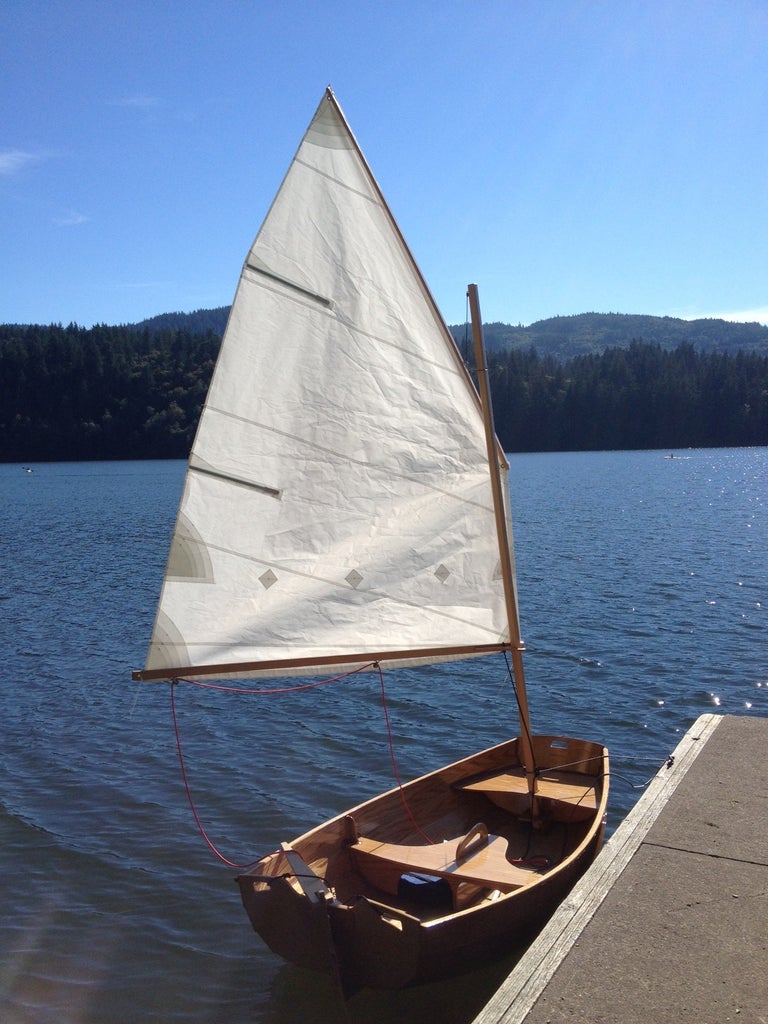
I've been wanting to combine my two favorite hobbies - woodworking and sailing for a long time, so I thought I'd build a boat. It's got classic lines and looks so dazzling in the sunshine that people constantly stop me at the boat ramp to ask me about it. There's something unbelievably rewarding about building something like this from scratch. This is definitely a boat that is much better built than bought . Here's how I did it.
The boat takes about 100 hours to build. I did it over 3 months, working a little bit just about every day and full days when my schedule permitted.
It will take about $1,000 in total to build if you buy everything at full retail cost (not including tools you might need to buy), but you can spread that across the length of the project. For example, you only need to buy one $30 sheet of plywood at a time, take it home, draw out the parts (loft) that fit on just that sheet and cut them out. That will take a couple of hours right there. Some boating supply stores (chandleries) might let you setup an account which might give you a discount if you tell them you're building a boat.
All of the skills needed to build a sailboat can be learned slowly, one step at a time. For example, if you've never fiber-glassed plywood before, just practice on a small piece first to get your confidence up. This was my first boat build, so I did a lot of learn as you go . Not only am I going to show you the right way to successfully build your own sailboat, but I'm going to share with you the mistakes I made along the way to hopefully save you from repeating them.
The end result will be a very attractive little 8 foot long pram, that is easily made out of 4x8 sheets of plywood that is light enough to put in the back of a small pickup truck or roll down to the local lake on the optional dolly. Anything longer would require you to either make a scarf joint (which is a bit tricky) or buy longer sheets of plywood (which is considerably more expensive).
What you will need:
Boat building plans
8 panels of 1/4" oak plywood 4'x8'
Pencil, Sharpie, ruler, tape measure, yard stick, etc.
Long flexible straight edge
Box of 1" brad nails
2 gallons of epoxy resin
1 gallon of epoxy hardener - SLOW
1 quart silica thickener
5 quarts wood flour thickener
1" masking tape
Japanese pull-saw
Table saw (helps, but optional)
Round-over router bit
Flush trim router bit
Palm/random orbital sander
220 sanding discs
Combination square
Drill bit set
Drill bit extension
Basic hand tools
Small diameter wire or zip ties
Wire cutter
12 C-clamps - 3"
Mixing cups, mixing sticks, rubber/nitrile gloves
16' x 60" of 6oz fiberglass cloth
2" plastic spreader
Gallon of waterproof glue
Glue roller
Silicone bronze screws
Stainless steel fasteners
Small blocks
Gudgeon & pintle - dinghy size
Patience - large
Elbow grease - large
For more detailed explanations on each step and more specific info/reviews on the materials and parts used, check out my boat build blog: www.Midnight-Maker.com
Step 1: Cutting Out the Parts...
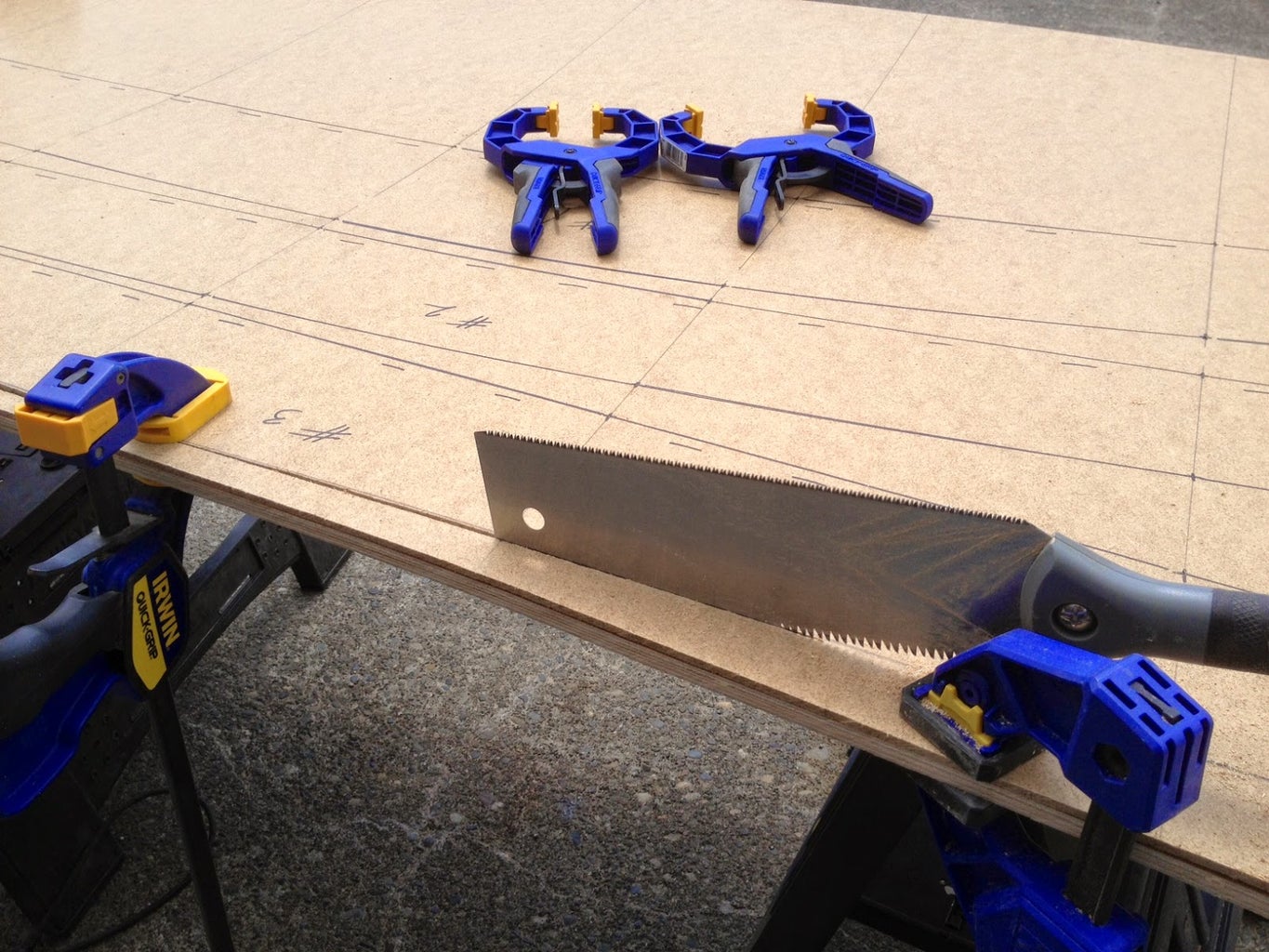
First, you'll need boat building plans. I purchased some very nice ones from a popular boat building website because I had a specific style in mind to build, a "pram". It's a Norwegian design with lots of buoyancy in the bow and building a pointy boat is a little more difficult. There are a bunch of free boat building plans (search "dinghy") online. Also, I wanted my boat parts to fit in a standard (read cheap) 4'x8' sheet of plywood. It also had to be light enough for me to load/unload/move myself. This boat weighs in at about 70 pounds. When on the custom dolly I built, it's very easy to move from the parking lot to the lake.
Next, you'll need to draw out the parts of the boat full-sized onto the plywood (lofting). I actually did this step on hardboard/masonite because I wanted to make templates of all the parts in case I ever wanted to build another one.
This step requires you to be very meticulous. Carefully transfer the measurements (offsets). They may or may not look correct because it's very non-intuitive to look at curved boat parts that are laying flat. Some parts actually bend the opposite way you think they should. To make the curves, I nailed a bunch of 1" brads into the panel and used a long, flexible straight edge (yard stick, etc.) bent to follow the curve, then I traced the curve with pencil/Sharpie. Once I removed the brads, I had perfectly smooth curves. Keep in mind that with the side panels that are symmetrical to both sides of the boat, only draw out one version and cut two stacked sheets at a time. This ensures the boat will not be lop-sided. Make sure to immobilize the two sheets together with screws outside of the boat parts or use double-sided tape/clamps, etc. to keep the parts registered properly.
Using a Japanese pull-saw allows you to control the cuts very carefully and it can follow the graceful curves. They cut on the pull stroke which means they're very easy to control. Make sure you leave a bit of your cut line, meaning cut just outside the line. This allows you a bit of a safety margin and you can always sand to the line to sweeten it up. This is where the elbow grease really kicks in. It takes hours to cut out the hull panels by hand, but it's worth it. I tried cutting the first part out with the jigsaw and it wandered all over the place and quickly cut inside the line before I knew it. Also, a jig saw blade can lean to one side which could mean two panels might not be the exact same shape. Using hand tools is a classic way to do woodworking and is a very gratifying process. With hand tools, things happen slow enough for you to be in total control, whereas power tools can quickly do unexpected damage. With the understanding that you're building a classic boat, using hand tools wherever possible is part of the philosophy.
The plans I bought were in metric and called for 6mm (1/4") and 9mm (3/8") plywood, but I wanted to make everything out of 1/4" plywood so the thicker parts in the plans were glued together with two layers of 1/4" (so at 1/2" they were a bit thicker than designed). I actually liked this because it made the boat feel sturdier and of course it was cheaper that way. The trade-off was that the boat would be a bit heavier.
For any of the parts that need to be doubled-up/laminated (e.g. the transoms), now is a good time to do that. Make sure you use "waterproof" glue instead of "weatherproof" glue like I did...
Spread a thin layer of glue over one of the "bad" sides (plywood usually has a good side and a bad side, glue bad sides together so good sides show on both outside faces), making sure it's completely covered (I used a special glue roller), then carefully place the other half on top. Align all of the edges together, then clamp them in place. Now put heavy things carefully on top to press the parts together. The glue should be dry in about 6 hours.
NOTE: It's considerably easier and safer to do any woodworking processes to the parts before you assemble the boat. This way, you can safely clamp pieces to the work bench and cut out handle holes, etc. Since my boat is a "lapstrake" design, I had to route a rabbet (groove located on the edge) carefully on the bottom edge of each side panel. This creates a shoulder for the parts to sit on, positively locating them while you're stitching the panels together. Likewise, the grab handles in the transoms are much easier to cut out before putting the boat together.
Also keep in mind that any mistake will be considerably more painful the further you are along in the build. For example, if I biff cutting out the grab handle holes while they're just loose pieces rather than when they're a permanent part of the boat, it's much easier to recover - just make another transom. If you had to patch a hole in the boat, it would be difficult and possibly never look perfect. No pressure...
Step 2: Assembling the Hull...
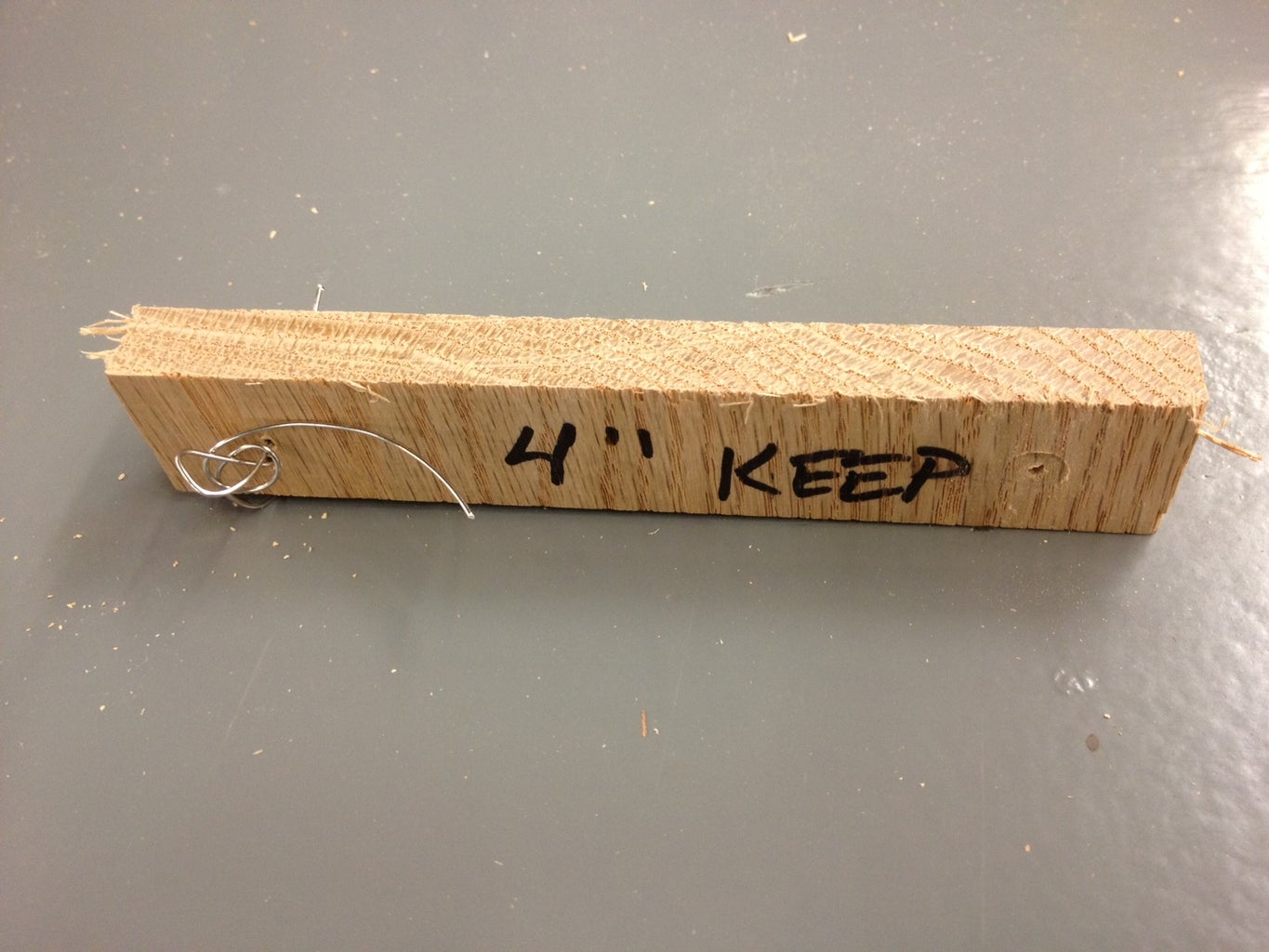
Once you have the bottom and sides cut out, you can start to "stitch and glue" the hull together. This is a technique used usually for smaller boats to be able to pull the hull form together without the need to build a frame or mold (which can take almost as long and as much wood as the boat itself).
I built a gauge stick to make sure my holes were perfectly spaced at 4" at 1/2" in from the plywood edge. It was 1" wide so either edge was the required 1/2" from the centerline. I worked my way down one side of each of each mated seam and drilled all those holes at once while the panels could lay flat on the bench. Make sure to use a backer block to prevent tear out on the back side, even with such a small drill bit.
With one mating panel drilled with a 1/16" drill bit, hold the mating panel in it's relative position. I used some spare twine to wrangle my panels into the proper orientation as I was marking them. Make a pencil mark where the mating hole should be, remove the pre-drilled panel and drill the second set of holes 1/2" in from the edge. This makes sure there's enough strength to hold the boat together.
The first pass on the stitches is just to get the hull together structurally. You can always go back and make the stitches fancier/tighter and tweak the position of the panels.
The stitches go from the inside out. Cut 6" lengths of wire and bend them into long, narrow U's that are the width of the distance between the holes. Stick the ends through the holes and carefully twist the tails together on the outside of the hull, making sure not to damage the plywood. If you're using zip ties, then the holes you drill will need to be bigger and you'll have to start on the outside, go in, turn around, then back out, then "zip".
Make sure your panels' rabbet shoulders are resting securely on the mating panel and carefully tighten all the stitches. For my boat, once I had two panels stitched to the bottom panel on each side, it was time to attach the transoms (ends). Once all of the exterior parts are stitched together, you should have something that looks like a boat. It will be a little rickety at this stage, but that's okay.
NOTE: In the photos I took of my build, you'll notice that the transom doublers (reinforcers) aren't in place. That was because I was following the instruction manual, but I think that was a mistake, so I highly recommend laminating (gluing) the doublers to the transoms before you stitch the boat together.
Step 3: Reinforcing the Hull Joints...
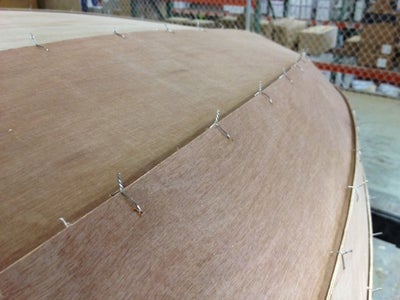
Now that the hull is stitched together, flip it over upside down. You'll be surprised at how stiff it is, considering how difficult it was to wrangle all those panels into position. Be careful, there's lots of poky wire ends sticking out all over the place.
I used a technique called "tabbing", meaning I made small, structural tabs from thickened epoxy that fit between the stitches, then I removed the stitches and made one long, larger fillet to connect the hull panels together.
Make sure your panels are perfectly aligned and tightened. I used a nipper to lop off most of the tails so they wouldn't get in the way, but that left very sharp spikes.
Make sure your boat is square. Take diagonal measurements from corner to corner, make sure the boat parts are parallel to each other, etc. because if there's a twist in your boat, the next step will make it permanent, which will affect the boat's performance.
Now mix up a batch of epoxy and silica thickener according to the manufacturer's directions (meaning each type of epoxy has a different resin to hardener ratio) until it's between the consistency of thick ketchup, but runnier than peanut butter (make sure to mix the 2 parts of epoxy together first very well before adding a thickener). Too thick and it won't fill the void, too thin and it'll run down inside the boat. Both are bad. I used a small syringe to inject the mix into the V intersection between the panels and checked underneath/inside to see if there were any runs.
Once the epoxy has partially set, use a glove wet with denatured alcohol to smooth out the "tabs" so they fit inside the V groove and don't extend above the intersection between the panels. This will give you good practice for the seams that will show on the finished boat. Be careful of the wire spikes.
Repeat this process for every seam on the hull. Let it cure overnight.
Once the tabs have cured, carefully remove the stitches. If the wire seems to be epoxied permanently to the hull, heat the wire with a lighter. That will soften the epoxy enough to pull the wire out. Be careful not to scorch the boat (you don't want a Viking funeral). Now repeat the thickened epoxy process for each overlap, except this time each seam will need to be one long, smooth joint. Let it cure overnight. This goes a long way in making the boat hull structural.
Step 4: Fiberglassing the Hull...

Now that you've got a permanent hull shape, it's time to make it waterproof and rugged. Fiberglass and resin over plywood is a tried and true Do It Yourself boat building technique which makes it strong and light.
Mask off the bottom panel and roll out your fiberglass cloth. Smooth the cloth out very carefully so as not to snag or tweak the fibers' orientation. Mix up an unthickened batch of epoxy (it will be the consistency of syrup). Starting at the stern, pour a small puddle of epoxy and spread it out nice and thin. You should be able to squeeze most of the epoxy out of the cloth, leaving only saturated cloth with no dry spots (which will appear white) but the weave should still be showing (meaning no extra epoxy is pooling). You should easily be able to see the wood grain through the cloth now.
Let the epoxy partially cure and using a razor, slice the dry fiberglass cloth away on the taped seam. Then remove the masking tape. Let the epoxy cure overnight.
Flip the hull over and mix up a batch of epoxy that is the consistency of peanut butter. I masked off the joint, but this step is optional, but keep in mind that it will be visible if you plan on finishing the interior bright (varnished wood). It's not as critical if you're painting the interior. With a plastic spreader, carefully make a large radius transition (fillet) between the bottom panel and the first side panel (garboard). Remove the masking tape when the epoxy mixture is partially cured and carefully scrape/wipe any unwanted mixture. It's much easier to remove now than having to sand it all off later. At this point, it's also a good time to fillet the transoms to the sides using 3/4" radius tabs between stitches and 1" finished fillets after you've removed the stitches. Let the fillets cure overnight.
Now, repeat the entire fiberglassing process on the inside. Except instead of just doing the bottom panel, make sure both the bottom and the garboard are fiberglassed. This is basically the waterline of the boat. The fillet should allow the fiberglass cloth to smoothly make the bend between boards. Remove the excess cloth when partially cured and let sit overnight. Some people fiberglass up onto the transom at this stage which will make the boat stronger, but that means you have to have already filleted the transoms to the bottom.
Step 5: Installing Interior Parts...

The bulkheads get stitched in place just like the panels. They will make the already stiff (and much heavier boat) completely structurally sound and push/pull the sides into their final shape. Then make 3/4" "tab" fillets between the stitches to lock them in place, remove the stitches and make long, smooth 1" fillets. The smaller fillets will get covered by the larger fillets. I used two different modified plastic spreaders to do this step. Each spreader was cut with a box knife and filed/sanded into its final shape.
While you're doing the previous steps, if you're in a time crunch, go ahead and build the daggerboard trunk. It's made of numerous parts that are pre-coated with a couple layers of unthickened epoxy, then glued together with silica-thickened epoxy. This makes it strong and waterproof as it will be below the waterline so must be completely waterproof.
The daggerboard trunk is the most important part of the boat, especially if you're making a sailboat version (this boat can easily just be used as a rowboat). Not only does it support the center seat (thwart), but it has to transfer all of the force from the sail to the water and if you run the boat aground, it takes all the shock loading from the daggerboard.
The daggerboard gets filleted into place like everything else. Make sure it's perfectly on the centerline of the boat as that will affect its sailing characteristics.
Next, let's make the daggerboard slot in the center thwart. I set up a straight edge with a spiral upcutting router bit. Make sure to enlarge the slots at the end of the center thwart so that it can fit around the fillets of the center bulkhead. Now is the time to ease the edges of the center thwart because you'll be sitting on it a lot, so it needs to be comfortable. Because it's so thin, I only routed the top edge of the center thwart that shows and just hand sanded the edge underneath (it's very problematic to use a round-over bit on the second side of a thin board). Paint all of the thwarts with three coats of unthickened epoxy, especially the undersides. Once the woodworking is done, the thwart can be epoxied into place with peanut butter (or you can jump to cutting the daggerboard slot in the bottom of the hull). Make sure the thwart fits snugly in place. Drop dollops of peanut butter on the top edges of the center bulkhead and daggerboard case and spread it out evenly (make sure none gets inside the slot to interfere with the daggerboard). Firmly seat the thwart (pun intended) into the goop and weight it down. Let it cure overnight.
While you've making sawdust, cut out the mast hole (partner) in the forward thwart by drilling holes in the four corners (for the square mast we're going to make), then cut out the sides, file it smooth, then round over the top edge with the router.
Any time after the bulkhead thwart fillets have cured, you can seal the airtank chambers. Paint the bottom, sides, inside of the bulkhead and transom up to the level where the thwart will be.
Step 6: Rail & Sailboat Parts...

There are several processes in this boat building instructable that can be done concurrently. While you're waiting for the epoxy on one part to cure, you can be doing woodworking or epoxying another part. This step illustrates that point. While you're waiting for the epoxy on the rub rail (outwale) to cure, you can be fabricating the sailboat accessories (e.g. daggerboard, rudder, tiller, spars, etc.).
In order for the outwale to be thick/strong enough to be effective, you'll need to laminate it in two strips on each side. You can't bend a single piece that thick around the curvature of the hull without either breaking the wood or softening it by steaming it which is a complicated process.
Take a strip that's half the final thickness and a little longer than the boat edge (I made mine a bit beefier), mix up some peanut butter with the colloidal silica and carefully spread it on the inside of the strip. Starting at the stern, clamp it in place, perfectly align it with the top edge of the plywood. Now you have a long, springy lever to bend the wood strip along the compound curve. It dips both vertically (shear), and bows out at the widest part of the boat (beam), then back in toward the bow. At least every foot, clamp it as you go, moving forward. More is better. Toward the bow, the strip will get stiffer as it gets shorter. Once clamped in place, scrape/wipe off all the squeeze-out. It's much easier to remove now than after it hardens. Let it sit overnight. You'll have to repeat this three more times, meaning this step takes four days (if you're using "slow" epoxy hardener).
During those four days that you're dealing with the outwale, you can make major progress on the sailboat parts. They're completely separate from the hull. If you're just making a rowboat, then you can skip making these parts.
The daggerboard and rudder are cut out and laminated. Then a bevel is ground onto the leading and trailing edges to make it slice through the water more efficiently. Then they're covered in layers of epoxy. The mast step is assembled. This has to be very strong because all of the force of the sail is transmitted to the boat through the mast step and the mast is a very long lever arm. The rudder cheek plates and tiller also have to be assembled similarly to the daggerboard case.
NOTE: Whenever there's a hole to be drilled into any part of the boat, you must take additional steps to make sure the water doesn't penetrate and damage the wood. The correct procedure is to drill an over-sized hole, completely fill that hole with epoxy (I usually put a piece of masking tape on the back side to act as a dam), then once the epoxy cures, re-drill in the center of the epoxy plug the correct hole size. That makes each hole in the boat possibly a 2 day process, so plan accordingly. You can also use 5 minute epoxy to knock out a bunch of holes quickly, but be careful, they're not kidding. This stuff gets rock hard very quickly and will permanently glue anything touching. This is exactly how you drill the hole for the pivot point for the rudder/cheek plate assembly. If the pin is 1/4", then drill 1/2" hole and fill that with epoxy. Now the 1/4" hole will fit nicely in the center and be completely waterproof.
Since all the parts need several coats of unthickened epoxy and they just about all have holes in them, I hung them up with some twine and painted them on all sides, one layer at a time, for several days. Make sure the rudder doesn't get too thick to fit inside the cheek plates.
Step 7: Making the Spars...
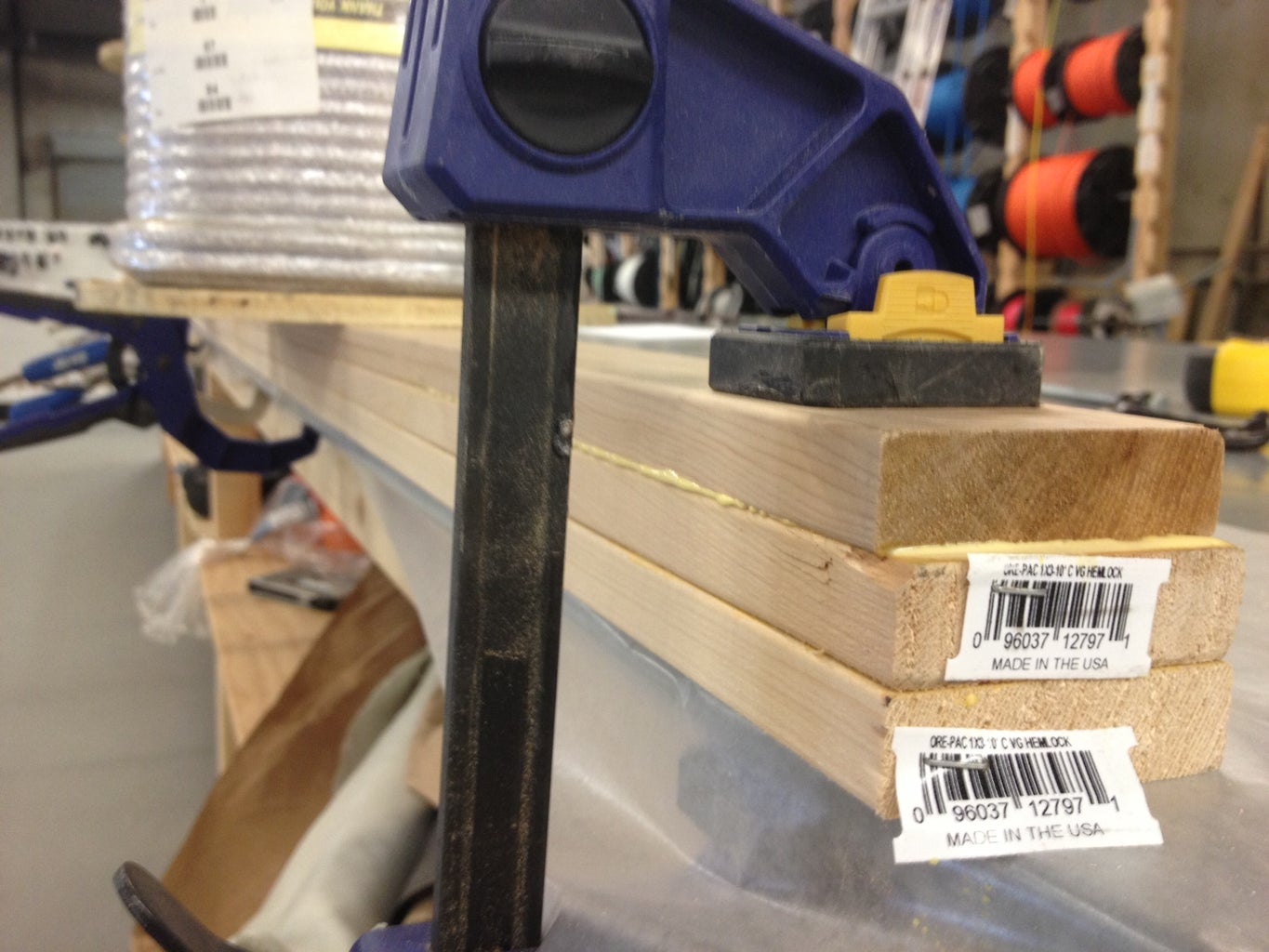
More sailboat parts you can make while waiting for other parts to cure are the spars, the structural parts that support the sail. The mast is another glue up. I used 3 - 1x3's of hemlock. A relatively soft wood, but with a nice tight grain with no knots. A mast would break at a knot, regardless of how strong the wood is. Using the waterproof glue, align the pieces as perfectly as you can then clamp up the assembly and let dry overnight. Then run it through a table saw to get the final dimensions. Use a router and a round-over bit to ease the edges. Cut to length and sand the sharp corners. It should fit easily, but snugly into the forward thwart.
The boom (bottom of sail) is a little more complicated. Cut out the gooseneck (boom pivot point) by using a hole saw first, making sure to clamp it securely to the workbench, then cut out the profile. This gets attached to another piece of 1x3 hemlock, after it's been cut to length and the edges have been rounded over.
The yard (top of sail) is easy. Just cut to length and round over the edges. Drill and fill any holes in the spars at this time. You'll need at least one hole on each end to lash the sail grommets to.
This time, everything gets covered with several coats of varnish, epoxy is not necessary. The varnish protects the wood from water and UV damage.
The reason we had to make at least the mast at this point is because we'll need it in the next step to establish the location of the mast step.
Step 8: Finishing Up the Interior & Exterior...

Once the outwales are successfully attached, trim them flush with the face of the transom(s). While you're at it, use a flush cut saw (with no sawtooth offset to mar the wood) to trim the sides flush with the transom. This will show you how well your injected silica mix worked earlier. Now you're ready to install the mast step.
The mast step must be precisely located on the floor (sole) of the boat to give the mast the proper angle (rake). This is very important because it directly affects the boat's ability to sail upwind. Using your mast, insert it into the forward thwart (partner) and into the mast step. With the mast at a 3° angle (mostly vertical but with a small, yet noticeable and graceful tilt toward the stern of the boat), trace the location of the mast step. Use a combination square to make sure it's perfectly aligned side to side (athwartship). You can now set the mast aside. Drill and fill holes in the bottom of the boat so that you can securely screw the mast step from the outside of the hull. The mast base must also be epoxied to the sole with peanut butter. After it's screwed into place but before the epoxy cures, make sure to test fit the mast again and verify the rake angle is correct. It would be a little messy at this point if you had to tweak it, but at least you wouldn't have to cut it off.
Now comes the most unpleasant part of the whole build. On your hands and knees, make a 1" radius fillet on the underside of every part in the boat. I didn't worry about making these pretty, just structural and water tight (these create the flotation tanks that keep the boat from sinking if you capsize). Let that cure overnight.
Next is the scariest part of the build, making the slot in the hull for the daggerboard. Using a drill bit extension, from the inside of the boat, reach down through the daggerboard case and drill a hole at each end of the slot through the bottom of the boat (make sure to use a backer board). Drill a couple holes in between, then take a jigsaw and connect the dots. This weakens the hull enough so that the router won't tear out any extra wood. Note, this step can easily be done prior to affixing the center thwart. Using a flush trim/laminate router bit, let the bearing run around the inside of the daggerboard case. This will make the hole in the hull perfectly match the slot. This is important because you don't want a shoulder on the inside for the daggerboard to hit and you don't want to damage the waterproof lining of the case. Last, ease the sharp edge of the daggerboard slot with the router and a small radius round-over bit.
The skeg must be cut to fit the curve of the hull (rocker), then using silicone bronze screws, attach it to the hull using the same drill and fill/peanut butter techniques. Make sure to snap a chalk line on the centerline of the boat for reference. Then make a 1" fillet where it meets the hull which will support the skeg and make it strong. The skeg keeps the boat tracking straight in the water. I optionally used some fiberglass cloth to cover the skeg and overlap onto the bottom to make the entire assembly stronger and more waterproof. The skeg will take the brunt of the abuse when launching, beaching, loading and unloading, etc. I also installed a stainless steel rubstrake on the aft end of the skeg with this in mind. In wooden boat building, silicone bronze screws are often used because they won't corrode when encapsulated like stainless steel screws can.
Install the skids parallel to the skeg. These are solid pieces of hardwood because they will also take a lot of abuse when the boat is sitting on shore, protecting the thin hull from rocks, etc. They get installed the same way as the skeg, although it's a little tough to bend the wood along the rocker. Scrape off the excess peanut butter once they're screwed in place.
I also installed the optional outboard motor pad at this point because I plan to use an electric trolling motor on the back to quietly putter around the lake in the evenings to relax with the family after work.
That should be the last parts that go into making the boat!
Step 9: Finishing the Hull...

Now comes the last dash to the finish line. One of the more tedious steps is that you now have to sand the entire boat. I actually built the entire boat inside, but for the sanding stage, I took her outside. Several hours of sanding all of the fillets nice and smooth. Everything will show in the finished product whether you paint the boat or leave it "bright" (unpainted). If you've been careful about cleaning up the peanut butter as you go, you should be able to sand the boat with mostly 220 grit. Be careful not to sand through the thin veneer of the plywood. After the sanding is done (make sure to use a dust mask), vacuum the entire boat and then wipe it down with a tack cloth to remove any dust. I also reversed the hose on the shop vac and used it to blow the sawdust off since I was outside.
Next, you must coat the entire interior and exterior with 3-4 coats of unthickened epoxy. This makes the entire boat waterproof. It will also give you an idea of how beautiful the wood will look when varnished. This is why a lot of boat builders decide to leave their boats bright so the beauty of the wood shows through.
Mix up 1 cup batches of unthickened epoxy and pour out large puddles onto the surface. Taking a foam roller, distribute the epoxy in a smooth coat. Now take a wide foam brush and gently smooth (tip) the rolled out surface. This should remove any lap marks or bubbles. Move along to the next area, making sure to not touch the wet parts. Also, make sure no dust or bugs get on your finish or it'll mean even more sanding later.
Start with the exterior first. It'll be much easier to get good by practicing on the convex surfaces. The interior is more tricky because you want to prevent sags and pooling by only applying very thin coats.
Make sure to check with the manufacturer's directions during this step in case you have to deal with "blushing", a thin layer that can sometimes form on the surface of epoxy when it cures. This could cause your layers to not stick to each other. If your epoxy does blush, it's easy to just wipe the entire boat down with a rag soaked in acetone after each coat has cured. Some people sand between coats of epoxy. This is how you would make an extremely smooth/shiny finish, so if you want your boat to be museum quality, invest the effort. I'm planning on banging my boat around so opted out of an extreme, fancy, mirror finish.
I was originally going to paint the exterior of the hull, which would require priming and painting, but I'm leaving it bright for the time being. The good news is that you can always paint later if you change your mind, but if you paint it and change your mind, it's tough to go back. There aren't a lot of pics of this step, which took a couple of days because there wasn't much visible progress after that first coat went on. At this point, any surface that's not painted should be varnished using the same "roll and tip" method as the epoxy, with the optional sanding between coats. Note that epoxy has no UV resistance, so to keep your boat from getting sunburned, you must either paint or varnish every surface. Giving a boat a "museum quality" paint and/or varnish finish can literally take as long as building the boat.
Step 10: Making the Sail...

Another step you can do while other parts are curing is make the sail. This particular design uses a "lug" sail, a classic looking sail for small boats with wood masts. It increases the sail area (therefore the force generated by the wind) without it having to be as tall as a modern sailboat mast made of aluminum. There is a kit from an online sailmaking company that you can get for a reasonable price. The Dacron cloth panels are all cut out by a CNC machine, so they fit perfectly together. I used a regular, domestic sewing machine, not an industrial one. The only time I had trouble was when sewing through all 7 layers at the reinforcement patches. When I got to those parts, I had to manually push down on the foot of the sewing machine with a flat-bladed screwdriver (minus) to help push the needle through the Dacron. We jokingly call Philips head screwdrivers "plus".
The panels/parts all come labeled. The directions were a bit confusing because they suggest you make sub-assemblies after the fact to make wrangling the large sail easier but they mention it after you've already sewn the large panels together. It's important to understand what parts go together while the panels are still small and more manageable. For example, the batten pockets are tricky enough to build on a single panel, much less the finished sail. Building the sail was about as difficult for me as building the boat, but it was worth it.
The lug sail gets reinforcement patches on all four corners where you attach it to the spars (bend), and there's also a reefing point for when the wind starts to pick up (freshen). Modern sails have three corners (Marconi rig).
I opted for the less expensive white Dacron sail kit, but there's also a classic red (tanbark) colored kit that's $100 more expensive. Before I sewed a single stitch, I carefully traced every part of the sail kit onto painter's tarp poly film so I can always use the templates to build another sail, all I need to do is buy the tanbark cloth.
Step 11: Rigging Your Sailboat...

This seems to be the trickiest part for most people, probably because there are numerous ways it can be successfully rigged, depending on your experience, preferences or criteria. It's confusing because you have to know what the finished setup will look like in your mind while you're staring at a pile of ropes. I chose a setup that allows the most room in the cockpit for a full-sized adult, so the mainsheet is led forward of the skipper's position. This keeps the skipper's attention forward so they're looking where they're going. I have another boat where the mainsheet is behind the skipper and it takes some practice getting used to.
The lines I made up (rope becomes a line when you give it a job description) were the halyard (hauls the sail up), the mainsheet (adjusts the angle of the sail to the wind = trim) and a traveler bridle (where the mainsheet attaches to the boat). I got fancy and spliced all my ends, but you can just as well use a bowline knot.
I installed a cheek block at the top of the mast instead of the large diameter hole in the directions. I wanted the halyard to run as smoothly as possible when setting the sail. Then I installed a pair of cleats at the base of the mast, one for the halyard and one for the downhaul (cunningham). With both of these lines pulling in opposite directions, it locks the sail in place, flat, so it effectivley acts like a wing. The main halyard attaches to the gaff with a snap onto a padeye. This allows easy on/easy off when rigging at the boat ramp. I also used a small loop (parrel) around the mast and through the eye to keep the gaff located close to the mast. I looped the downhaul over the boom and down to the cleat to try to keep the gooseneck from twisting. Note, except for the blocks, just about all of the hardware used on rigging a boat this size can come in stainless steel or brass/bronze, depending on the look you're going for. If you plan on installing oarlocks to row the boat, this decision becomes even more important to the final look of the boat.
For the mainsheet, I made a short bridle between the handles on the transom with a small eye tied in the center. This allows a place for the snap on the end of the mainsheet to attach to. I could've just as easily allowed the snap to slide, which would give the bridle the function of a traveler, but would affect its pointing ability (sail upwind). The mainsheet is then run to a block on the end of the boom, then to another block in the middle of the boom. This leaves the main cockpit area unobstructed with running rigging. Make sure your mainsheet is long enough for your boom to swing forward of 90° to the boat, with enough to still come back to the cockpit for the skipper to control. A stop knot at the end of the mainsheet will keep the mainsheet from getting away from you and give you something to grip.
The rudder pivot hardware (gudgeons and pintles) must be installed perfectly vertical and on the exact centerline of the boat so that she will sail well. Drill and fill the necessary holes for this hardware. Be careful with the spacing. It's designed to be easily installed and uninstalled while underway.
With this particular rigging layout, when under sail, the skipper must constantly keep the mainsheet in hand, which is a good idea anyway for safety reasons (if you get hit by a gust of wind = puff, you won't get blown over = capsize). The tension on the mainsheet is easily manageable for any size skipper. On larger boats, the mainsheet is held by a fiddle block with a cam cleat, which is not necessary for a boat this size. With that being said, a possible future upgrade would be to install a block and a camcleat somewhere on the centerline of the boat so that more advanced sailors wouldn't need to constantly have to oppose the tension on the mainsheet. Of course the trade-off would be the hardware would probably be somewhere you might want to sit.
Another upgrade I figured out after actually taking her sailing would be to rig up a bungee/shock cord system that will hold the daggerboard both in an up and down position. With the current setup, the centerboard is held down by gravity and must be pulled out of the slot when beaching.
Step 12: Go SAILING!
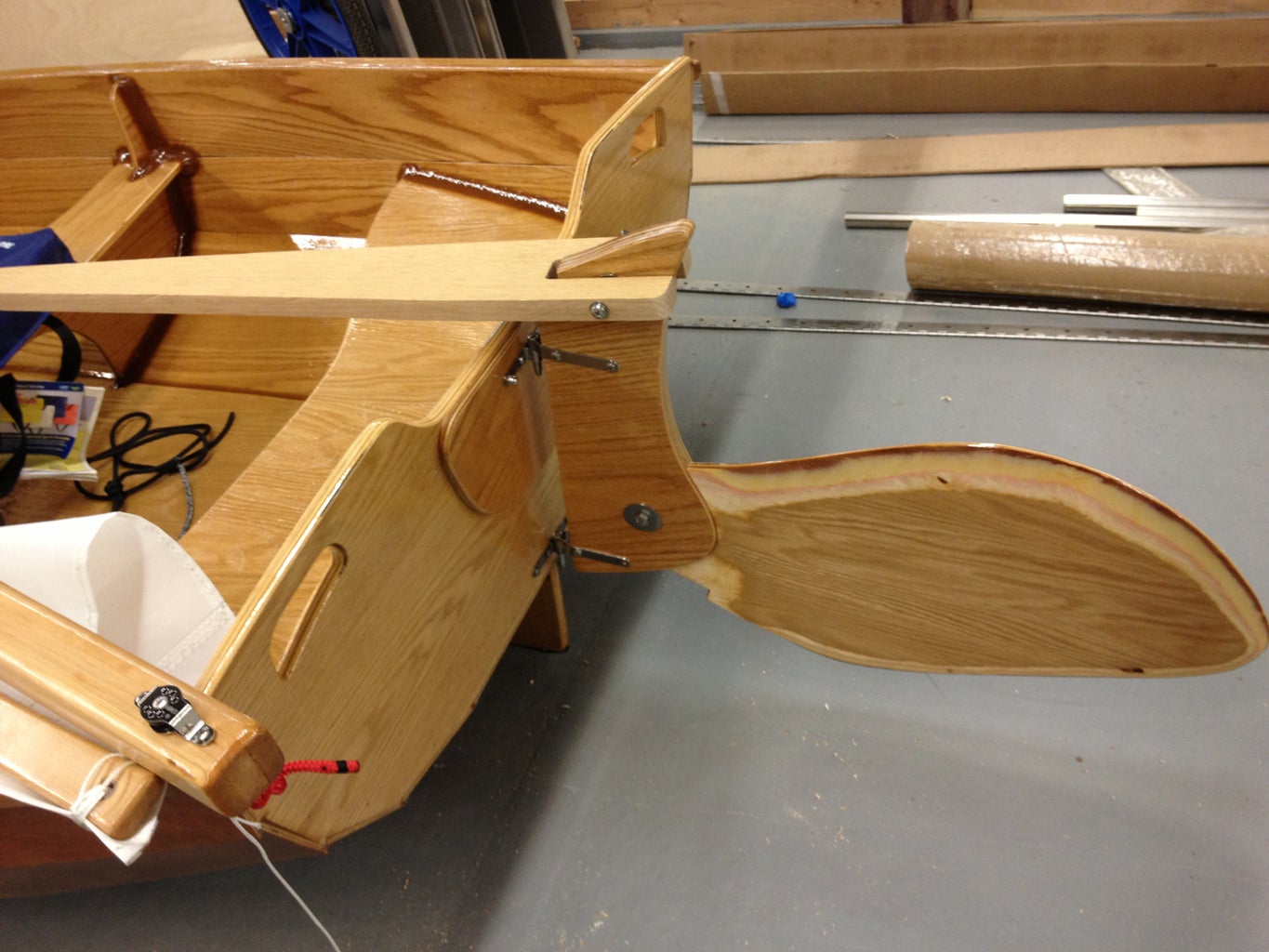
Because I wanted to be able to go sailing by myself if needed, I made a dolly out of 2x4's and large pneumatic tires (which makes the dolly float). The dolly fits securely between the center and aft thwarts when driving out to the lake. The sides on the dolly lock against the skids on the bottom of the boat so it can't twist. Roll the sail up with the spars and wrap it with the main halyard. At the designed length, the mast doesn't fit inside the boat, but it seems a bit long, so some people have cut the mast down enough so that it fits inside the boat.
Out at the lake, unload the boat, slide the dolly underneath and you're ready to roll down to the ramp. At the launch, roll the boat out into the water until it floats off the dolly, toss the dolly off to the side out of everybody else's way. Drop the daggerboard into the slot and install the rudder assembly. Facing into the wind (important), stick the mast into the receiver hole (partner), tie off the downhaul (cunningham) and hoist the sail until the downhaul is tight, then cleat off the main halyard. Reave the mainsheet (run the line through the blocks) and you're ready to go sailing.
I've found that this boat sails very well. The lug sail makes it very easy to sail upwind (weather helm), it's a little more tender for a large adult, more so than a boat with a hard chine, like an El Toro/Optimist but it's a lot more graceful looking. The payload is very reasonable for a boat this size. My wife and son can easily (and safely) go sailing with me and I don't even need anyone's help to get it rigged and launched. All in all, this is one of the best projects I've every built. I hope you too can discover the joy of building your own boat and then take her sailing. Remember, in sailing, the wind is free, but nothing else is...
This is my very first Instructable after many years of referencing this excellent site to build numerous cool projects (you should see my next post). Anyway, I hope you enjoy it and please feel free to ask any questions you may have and I'll do my best to answer them. I'm planning on building a larger boat in the near future so stay tuned...

Participated in the Wood Contest

Participated in the On a Budget Contest
Recommendations

Made with AI - Autodesk Design & Make - Student Contest

Make it Resilient

Green Future Student Design Challenge

Practical Boat Owner
- Digital edition

Home-built boat: From design research to launch
- Chris Comerie
- June 13, 2023
Chris Comerie uses retirement to fulfil a teenage boatbuild ambition, resulting in a trailable gaff-slooped pocket cruiser

Bunty B anchored off Brodick Castle, Isle of Arran. Credit: Chris Comerie Credit: Chris Comerie
You may wonder why a home-built boat was preferable to the hundreds of vessels both new and used out there in the marketplace.
But, for me this was more than just about getting a boat to go sailing.
My father was a keen boatman and owned a small sailing yacht while he was posted with the Royal Air Force in Egypt during World War II.

Bunty B beached at Loch Scresort, the Isle of Rum, the Small Isles. Credit: Chris Comerie
When my brother and I were young, his influence resulted in us always messing about in boats which, in my later teenage years, inspired me to begin building a wooden rowing boat, and of course Dad got involved.
Unfinished business
We found a design in a book borrowed from the local library from which we lofted out the lines on wallpaper stuck together with Sellotape and laid out on the landing at the top of the stairs.
Unfortunately due to my limited finances and space constraints, I never completed the project.

Bunty B moored in Tarbert Harbour, Argyll and Bute. Credit: Chris Comerie
However, years later after serving an apprenticeship as a pattern maker, constructing precision wooden patterns for sand moulding and casting, I set up in business as a self-employed joiner.
After a year or so the owner of a local boatyard and chandlery asked me if I’d like to do some sub-contract work in the boatyard, initially to build two pontoons to allow leisure cruisers to land from the River Trent.
I loved it, and was thrilled when the job was completed and installed. Then as a result of its success, I was further employed carrying out repairs and alterations to all manner of different vessels.
Project boat
During my time there I purchased a run down GRP boat which, subsequently turned into a modest restoration project that for the time being satisfied my desire to get afloat again.
My joinery business grew then developed into a construction company building extensions and carrying out alterations to domestic property.
After 45 years of running my business I retired.
I’m fortunate enough to live in a property with outbuilding space and an equipped joiner’s workshop to boot.

Undergoing construction on the jig. Credit: Chris Comerie
My building site in a barn high in the Cumbrian Fells that used to house cows and sheep, appeared somewhat incongruous to hikers passing by on the public footpath who often referred to me as ‘Noah’, and asked ‘are you expecting a flood?’
But with these facilities to hand, I began to think about the boat that I’d started to build all those years ago.
While I hasten to add that I’m a complete amateur when it comes to building boats, my skills base and background gave me the confidence that I could construct a decent boat.
This time I was determined to finish the job and go sailing. I produced a wish list:
- A visually aesthetically pleasing classic styled sailing boat built in wood.
- To be able to go lake or coastal cruising with a crew of up to three adults.
- A small cabin to enable a few nights away, prepare food and be somewhere to retreat in poor weather.
- Trailer-able, easy to launch and recover.
- An outboard motor discreetly mounted in a centreline well, rather than transom .
- A retractable centreplate that did not compromise cockpit or cabin space.
Design research
After months of systematic research and investigation into modern methods and materials of wooden boat building, I discovered a design by the Brittany-based naval architect François Vivier that really caught my eye.
The Beniguet, a trailer-able classic cabin yacht with a gaff sloop rig was the pocket ship for me.
Ideally I’d have preferred a larger boat but we have a very long, steep and convoluted track leading up to our old farmhouse which was to be the build site, and it would be impossible to manoeuvre anything bigger than the Beniguet out to the road.
I bought a set of Monsieur Vivier’s plans and began work during February 2017.

Home-built boat: Lovely foredeck with bronze fittings. Credit: Chris Comerie
There then followed two years and nine months of intense, absorbing work and study.
Along the way I researched every detail of the structure and the fittings, to satisfy an overwhelming desire to learn and fully understand every single aspect of the design.
During that period the actual hands-on build time consumed 2,770 hours, although I must add that this total could have been greatly reduced by adhering to the original basic design.
From the outset I’d decided to build the boat to a high specification, fully fitted out with a chartplotter , VHF radio , navigation lights , cabin lighting, teak decking , additional reinforcement of the hull and a whole host of other personalisations and additions.
Launch day for my home-built boat
My father’s boat was called Bunty , so I named her Bunty B .
We launched her on Lake Windermere on 2 November 2019 with the family in attendance.
Later that day, following the successful trials, we recovered her and trailed her back home to overwinter undercover in anticipation of future adventures during the following summer season of 2020.
Unfortunately the coronavirus pandemic interfered with those plans.

Very smart: Bunty B is a François Vivier design. Credit: Chris Comerie
I was frustratingly prevented from being able to sail her by the government-imposed lockdown and I had to be patient until restrictions were eased.
It was 29 August 2020 when at last I launched her at Dunstaffnage Marina just north of Oban, and from there I was able to take her to sea for the first time.
Since then I have sailed Bunty B around 1,000 miles, mainly single-handed, exploring the Hebrides off the west coast of Scotland and crossing the Irish Sea to the Isle of Man.
As my experience of handling the boat has grown, I have made further additions, alterations, and fine-tuned the boat, continuing to do so right up to the present day.
I earlier alluded to my desire to build a bigger boat, but the size restrictions imposed upon me by our restricted access have inadvertently proved that there are some significant advantages in having a small day-sailer .
Bunty B is very easy to tow , launch and sail single-handed. These attributes allow you greater flexibility in your choice of cruising grounds.
Provided there is a suitable slipway available, you can go just about anywhere you choose, and of course there are no annual expensive marina or mooring fees to worry about.
The onboard facilities and locker space are more than adequate to allow me to cruise for two weeks or more, with of course the occasional visit to a marina.
Continues below…

How I built a bespoke aluminium powerboat at home
Late in 2015, just as James Oakley was finishing the hull of his home-built aluminium speedboat, he was diagnosed with…

Around the world in a 5.8m boat! Meet the sailor preparing to race a Class Globe 5.80
British sailor Adam Waugh is currently building his 5.8m boat at his home in Northumberland before taking part in the…

How to build a boat: Essential guide to building your first kit boat
You don’t have to be a boatbuilder to learn how to build a boat, argue Roger Nadin and Polly Robinson.…

Build your own Western Skiff – part 1: the first steps
Finally, after months of planning and discussion, the moment of truth had arrived: the first Western Skiff MkII kit, put…
In fact I’m usually away for 10 or more days at a time.
I particularly enjoy the ability to take the ground, just hoist up the centreplate, pop on the drying out legs and, on the ebb tide she’ll sit gently on a secluded sandy beach of your choice.
You can then just walk ashore. Very satisfying.
I have to be honest, overall I found the building of my own boat to be initially quite daunting, and by completion it proved to be an expensive undertaking.
However, you shouldn’t underestimate the benefits you reap from the experience which proved to be totally consuming, enjoyable and fulfilling.
First things first
Before embarking on any project, it’s best to sit quietly with a cup of tea and mull it over.
Well, I must have drunk gallons of tea before embarking on this particular home-built boat project.
I eventually chose a design that would, as close as possible, fulfil my requirements and, importantly, be towable from my build site to the public highway.
Before committing to buy the full plans from François Vivier, I purchased the study plans for just a few pounds which enabled me to check the lines and fully understand the construction.
I contacted the architect directly who proved to be very accommodating with my queries.

The full size pattern of the outline of the hull hitched up ready to set off down the hill. Credit: Chris Comerie
I then attempted to estimate the cost. This was informative but time-consuming due to my lack of knowledge of much of the terminology and where you could buy the materials and myriad of fixtures and fittings required.
Needless to say, on completion of the build I’d underestimated the final cost.
To ascertain if I could tow the boat out to the road from my Cumbrian Fells property, I took detailed measurements and surveyed the pinch points of our access track.
The final bend before the track meets the highway is very tight and in order to be sure that I could manoeuvre the boat around this obstacle, I used the study plans to construct a full sized pattern of the outline of the hull, sporting two bicycle wheels at the estimated centre of balance of the boat.
Then I hooked it up to the tow bar of my pickup truck. I towed the pattern to confirm (or otherwise) that I’d be able to negotiate the convoluted track.
As I approached the suspected problem bend at the bottom of the hill, two of my neighbours suddenly appeared; the track is a public footpath and they were out for a stroll.
The astonished and amused look on their faces was priceless.
The outcome proved that we could get the pattern out to the road, yet despite this there was always a nagging doubt in the back of my mind throughout the build thinking, what if I can’t actually get the boat around that bend?
And so now I’m going to attempt to illustrate 2,770 hours of work carried out over a period of 31 months into a handful of photographs: impossible I know but, I’ll try to touch on some of the key elements of the build.
The build: step by step

1. To get building under way my first job was to construct the jig which had to be very accurate – any imperfections would irretrievably be transferred into the build. Here the overturned jig is being used to provide a large, flat working area for glueing up the planking strakes . Each joint was then sheathed in epoxy saturated glass fibre cloth then faired with epoxy filler. They were then sanded flat and smooth before fitting to the jig.

2. The jig, the correct way up, fitted with the timber supports holding the transverse bulkheads in their correct positions. The backbone has been glued in and the clamps are holding the laminated outer or stem to the inner to allow a perfect fit. The backbone gap is the aperture to carry the lead ballast. I had the 29 sheets of marine plywood CNC cut , though in retrospect I wished that I’d purchased the patterns to mark and cut out the plywood components myself.

3. The ballast aperture follows the hull lines and is designed to be filled with around 80kg of lead. I constructed a plywood mould to follow these lines and dimensions that was divided into five sections then, coated the internal faces with sodium silicate solution as a fire prevention. The plywood strips between the aluminium separators are temporary supports – as each section cooled and set after casting they were removed as the work progressed along the mould.

4. The ballast is securely glued into its cavity by thickened epoxy – ensure there are no voids. A capping hardwood strip is then bedded in epoxy and screwed down to seal the compartment. To prevent chafing when taking the ground, I capped the entire backbone/keel in marine grade stainless steel flat bar.

5. I applied thickened epoxy fillets to all the strake joints, garboard and backbone, the latter was then completely sheathed in epoxy saturated glassfibre cloth and faired with epoxy filler. The entire hull was then faired and sanded down flat and smooth. A sealing coat was applied followed by eight coats of paint.

6. The hull was then turned and set level in readiness for fitting out. All joints between planking, bulkheads, transom , backbone, shelving and any internal fitting out were epoxy filleted, sheathed in glassfibre and faired. I also sheathed in epoxy saturated glassfibre all the planking up to the water level. Epoxy sheathed plywood produces an enormously strong material. I tested this using the waste cut from the engine well aperture, which I securely clamped in the bench vice and beat with a hammer. It amazed me how tough it was – the edge joint between the pieces did not break!

7. Before the decks, coachroof and other inaccessible areas were closed off, I applied the full paint regime. I also fitted the conduits for wiring; this necessitated the increase in some of the timber sections to accommodate it. At this stage, I’d already made the drying out legs and put them to use during the build to stabilise the hull

8. The mast is laminated from four boards of Douglas fir. I had to customise the design to allow cables to pass through to the mast head. This shows my solution using plastic conduit supported at intervals by plywood cradles. The mast was a challenging project: to achieve dead straight true boards and perfect jointing faces over its entire length required care. I assembled and glued it on a hot summer’s day to take advantage of the perfect conditions, which allowed the epoxy to fully penetrate the jointing surfaces and achieve an excellent bond.

9. All of the spars were made from Douglas fir with the exception of the gaff jaws . These were manufactured from laminated ash that required me to make a jig to achieve the desired shape. You can see I’ve also fixed leather sheathing in the base of the jaws to help prevent damage to the mast.

10. The 100kg centreplate also forms part of the ballast total and is manufactured from 25mm-thick 316 marine grade stainless steel. I had the outline shape laser cut. Further machining was carried out on a friend’s milling machine while the drilling, shaping and finishing I did by hand using an angle grinder, a pillar drill and a file. That was hard work, and even harder work fitting it in the boat!

11. I built a lot of detail into Bunty B , for example you can see the inlay in the transverse board on the transom aft deck and the ball on the end of the tiller . All of the timber used for the build was cut from rough sawn boards, machined and prepared in my workshop. The ash tiller and the gaff jaws were manufactured from a tree that I’d felled on our land some years previously. The ball spliced into the end of the tiller is mahogany that I’d reclaimed from some old furniture more than 20 years ago. I use recycled timber where possible. At a later date I removed the paint from the cockpit seats then re-covered them in teak planking.

12. The big day, loading Bunty B onto her new customised trailer. It took two of us the best part of a day to manoeuvre her out and onto the trailer using various jacks, levers and rollers. Similar I suspect, to the methods used by the Egyptians when moving the large stone blocks when building the pyramids!

13. The signal flags are tied to the rigging, gold gilt inlay has been applied to the detail in the rubbing strip at the bows; she’s spick and span, shipshape and Bristol fashion and ready for the launch.
Cost breakdown of a home-built boat
- Purchase of drawings £450
- Plywood & CNC cutting £3,776
- Timber, epoxy, fittings, paints etc £15,122
- Sails and cushions £1,900
- Stainless steel centreplate £1,000
- Radio, plotter, tiller pilot, electronics etc £2,900
- Engine and fuel tank £1,421
- Trailer £2,688
- Total cost £29,257
- Hours (initial build) 2,770
- Plus additions 104
- Total hours 2,874
The teak deck
Despite attempting to steam bend in a jig or, dry bending by applying gradual pressure, I could not coax the teak planking around the tight radius of the side decks.
The only solution I could think of was to purchase some wide boards and cut each plank individually with the appropriate radius.
The supplier of the Burmese teak I managed to obtain for this purpose told me that it had come from the salvage operation in 2011 of a World War I wreck, the SS Pegu .
I found this intriguing and carried out some online research to try and find out what had happened.
The Wrecksite website described how the Pegu was a steam powered cargo ship owned by the Henderson Shipping Company.
She was said to have been torpedoed by a German U-boat (U57) under the command of Carl-Siegfried Ritter von Georg on 8 July 1917.
Unfortunately, the sinking of the ship caused the loss of one life, 22-year-old 4th engineer, Robert Maxwell.
The ship had been carrying general cargo which included a large supply of Burmese teak, from Rangoon to Liverpool.
Apparently this timber was destined to be used for the fortification of heavy gun emplacements in France and Belgium.
The teak then lay on the seabed for more than 90 years before being salvaged.
I believe that in part, the salvaged timber provided a source of material for the repairs to the Cutty Sark project following a serious fire that nearly destroyed the renovation.
Using this fine, historical wood for cladding the deck of Bunty B felt like a privilege.
Enjoyed reading Home-built boat: how I made and launched my own day sailer?
A subscription to Practical Boat Owner magazine costs around 40% less than the cover price .
Print and digital editions are available through Magazines Direct – where you can also find the latest deals .
PBO is packed with information to help you get the most from boat ownership – whether sail or power.
- Take your DIY skills to the next level with trusted advice on boat maintenance and repairs
- Impartial in-depth gear reviews
- Practical cruising tips for making the most of your time afloat
Follow us on Facebook , Instagram and Twitter
- Types of Sailboats
- Parts of a Sailboat
- Cruising Boats
- Small Sailboats
- Design Basics
- Sailboats under 30'
- Sailboats 30'-35
- Sailboats 35'-40'
- Sailboats 40'-45'
- Sailboats 45'-50'
- Sailboats 50'-55'
- Sailboats over 55'
- Masts & Spars
- Knots, Bends & Hitches
- The 12v Energy Equation
- Electronics & Instrumentation
- Build Your Own Boat
- Buying a Used Boat
- Choosing Accessories
- Living on a Boat
- Cruising Offshore
- Sailing in the Caribbean
- Anchoring Skills
- Sailing Authors & Their Writings
- Mary's Journal
- Nautical Terms
- Cruising Sailboats for Sale
- List your Boat for Sale Here!
- Used Sailing Equipment for Sale
- Sell Your Unwanted Gear
- Sailing eBooks: Download them here!
- Your Sailboats
- Your Sailing Stories
- Your Fishing Stories
- Advertising
- What's New?
- Chartering a Sailboat
How to Build a Boat
If you want to know how to build a boat you've come to the right place, because that's what we did, learning as we went. She's called Alacazam , and you can see her in action in the picture above, charging through the Caribbean Sea off Montserrat. And we're going to take you through the entire sailboat construction process...
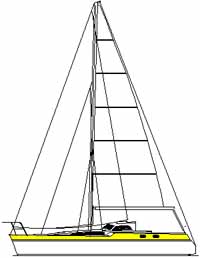
Jumping forward several years...
She was called 'Alacazam' , from the great Nat King Cole's song Orange Coloured Sky, and these are her vital statistics...
- Length overall: 11.5m (37.5 feet)
- Waterline length: 10.6m (34.5 feet)
- Beam: 3.9m (12.5 feet)
- Draft: 2.2m (7 feet)
- Displacement: 7,023kg (7.75 tons)
- Displacement/length ratio: 159
- Sail area/displacement ratio: 18.28
Of course you don't have to start from scratch as we did; there are a few other boat building options available that could save time and maybe cash too.
Whichever option you choose it's a very good idea to think the whole project through from beginning to end, as nothing can cause more disruption and additional cost than changing your mind halfway through a boat construction project.
It's an inescapable fact that cost and size are closely related, but not in a linear fashion as you might assume. If you double the length of the boat you're likely to increase the costs by a factor of four; and not just the build costs, but owning and operating costs too. Just wait until anti-fouling time comes around and you'll see what I mean.
Berthing costs seem to take a hike at around 12m (40ft) overall, and another at 15m (50ft), which was the final compelling factor in sizing our self-build cruising sailboat at 11.5m (38ft) on deck. This allowed for the anchor poking out at one end and the self-steering gear at the other, just in case any marina employee should get overzealous with the tape measure.
But where do you want to start? Here are your three main options:
- Buy an old, tired boat and completely refurbish her, or
- Buy a bare hull and deck moulding for home completion, or
- Start from scratch, and build the hull yourself.
We'll take a look at these three options in turn:
1. Starting With a 'Fixer-Up'
This can be a great option, particularly if you can get your hands on an old but tired pedigree boat with a proven reputation like the Ted Brewer designed Morgan 28 shown here - and you might just get it at an absolute knockdown price.
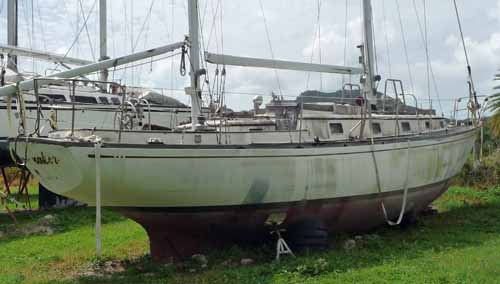
With luck, much of the interior will be salvageable, but you'll probably want to bring the instruments and electronics up to date, replace the rig and all the rigging, install a new engine and stern gear and replace the hatches and much of the deck equipment.
But you really should get a professional surveyor involved before you take up such a project. Explain to him carefully what your intentions are, and ask him to prepare his report with that in mind; it could save you a whole heap of time and money.
2. Starting from a Bare GRP Hull
This approach will get you off to a flying start, particularly if the hull comes with the deck moulding already fitted and the bulkheads bonded in. The problem will be in finding one, as few manufacturers seem to offer this once popular option these days.
3. Starting from Scratch
You need to take a very deep breath before setting off along this route - and believe me, I know, because this is how we built our custom designed sailboat Alacazam .
Unless you're building from an established set of boat plans, you'll be well advised to get a yacht designer involved at the outset.
And one of your first decisions will be the choice of hull material - fibreglass, steel, aluminium, ferro-concrete or wood - but which one, and why?
The Outline Requirements for our 'Ideal Cruising Sailboat'
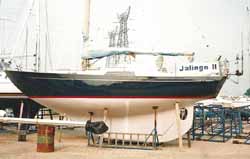
My current boat at the time was a Nicholson 32 Mk10. Jalingo was a narrow hulled, heavy displacement, long keeled cruiser that I'd sailed thousands of miles - much of it singled handed (until I met Mary, who put paid to all of that self indulgence) - off the shores of the UK, France, Spain and Portugal, and to the Mediterranean and back.
Her hull shape and displacement ( Jalingo's , not Mary's) meant that she was comfortable in a seaway and great in a blow, but sluggish in light winds - and that keel meant she was a nightmare to handle in the confines of a marina.
Like all long-distance sailors we had a good idea as to what our 'ideal cruising sailboat' would be. I've always thought that a cutter rigged sloop is the ideal the ideal rig for a cruising boat, with a roller furling jib , a hanked-on staysail (easy to replace with a storm jib when necessary) and a slab-reefing mainsail with lazy jacks , as I don't trust either in-mast furling or in-boom furling .
Additionally she would:~
- have high resistance to capsize;
- be robust and easy to maintain;
- have good performance under sail;
- have a comfortable, easy motion underway;
- be easily manageable by a small crew;
- have sufficient internal volume for comfortable living aboard;
- be affordable to own and operate.
Did we know how to build a boat with these desirable characteristics? No, but we knew a man who did. Enter Andrew Simpson, yacht designer, surveyor and shipwright - and one of my best chums...
The Designer's Proposals for our Ideal Cruising Sailboat
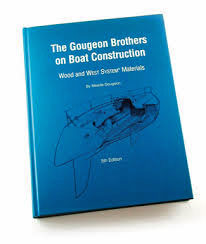
We discussed all this at length, and made a number of sketches of both the interior layout and an efficient, workable cockpit .
Andrew did the number crunching and came up with an outline design for a 38ft (11.5m) cutter rigged wood/epoxy (cedar strip) water-ballasted cruising boat.
"She'll be light, quick, robust and comfortable" he said
"And seaworthy?" we asked
"Eminently so" he replied
"Right" we said, "Let's do it!"
And so we did...
So How Did We Build Alacazam ?
Here's the whole story, in words and pictures.
How to Build a Boat:
- Part 1: The All-Important Preparation
- Part 2: How to Build a Boat Hull in Western Red Cedar
- Part 3: Sheathing the Hull in Woven Glass Rovings
- Part 4: Cutting and Installing the Plywood Bulkheads
- Part 5: Building the Interior Structure
- Part 6: Constructing the Deck and Coach Roof
- Part 7: Moulding the GRP Cabin Top
- Part 8: Fitting the Bulb Keel
- Part 9: Making the Rudder
Next: How to Build a Boat, Part 1
Recent Articles
Wauquiez Gladiateur 33 for Sale
Apr 10, 24 05:40 AM
'Cabo Frio', a Catalina Morgan 43 for sale
Apr 01, 24 08:35 AM
Live Aboard Boats For Sale
Mar 30, 24 07:02 PM

Here's where to:
- Find Used Sailboats for Sale...
- Find Used Sailing Gear for Sale...
- List your Sailboat for Sale...
- List your Used Sailing Gear...
Our eBooks...

A few of our Most Popular Pages...

Copyright © 2024 Dick McClary Sailboat-Cruising.com

Driftboat Wood Kit
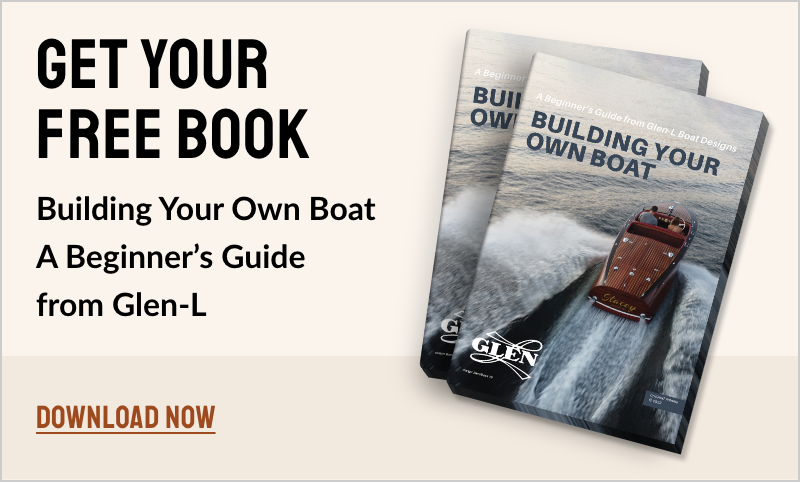
Boatbuilders FORUM
Boat plans, patterns and supplies for the amateur boat builder.
Every year, thousands of amateurs much like yourself build their own boats the proven Glen-L way. Many builders save 50% or more over the price of a factory-built boat. It’s easier than you might think, and it can be a rewarding experience.
Industry experts
Established in 1953
300+ Models
International shipping
Plans & Patterns

All plans come with a 30-Day money back guarantee.

Providing boat Plans & memories Since 1953
For more than 60 years Glen-L has been the world’s premier supplier of boat plans and patterns designed for the amatuer builder. We make it even simpler by offering associated supplies and hardware kits for each design.

More Products

Boatbuilding hardware

Books, DVDs, & Audio

Tools & Raptor® Fastenings

Epoxy and Supplies
Featured designs.

View Plan Details

Cabin Skiff


- Catalina 12.5 Expo
- Catalina 14.2
- Catalina 14.2 Expo
- Catalina 16.5
- Catalina 22 Sport
- Catalina 22 Capri
- Catalina 275 Sport
- Catalina 315
- Catalina 355
- Catalina 385
- Catalina 425
- Catalina 445
MAINSHEET MAGAZINE
- TRUE NORTH YACHTS

A legacy built on precision, innovation and unmistakable American craftsmanship.
Elevate your sailing experience with a touch of true American Luxury.
CHEERS! TO OUR OWNERS, DEALERS & TEAM
A key to our success and longevity is the relationship and communication with our owners, dealers and team. For more than 50 years they have propelled us forward as America’s largest sailboat builder.
We are a Catalina family.
MEET OUR FLEET
We’re not just building sailboats; we’re creating experiences that resonate with the essence of American Luxury. Our fleet is a testament to a legacy built on precision, innovation, and the spirit of adventure, with the unmistakable touch of American craftsmanship.
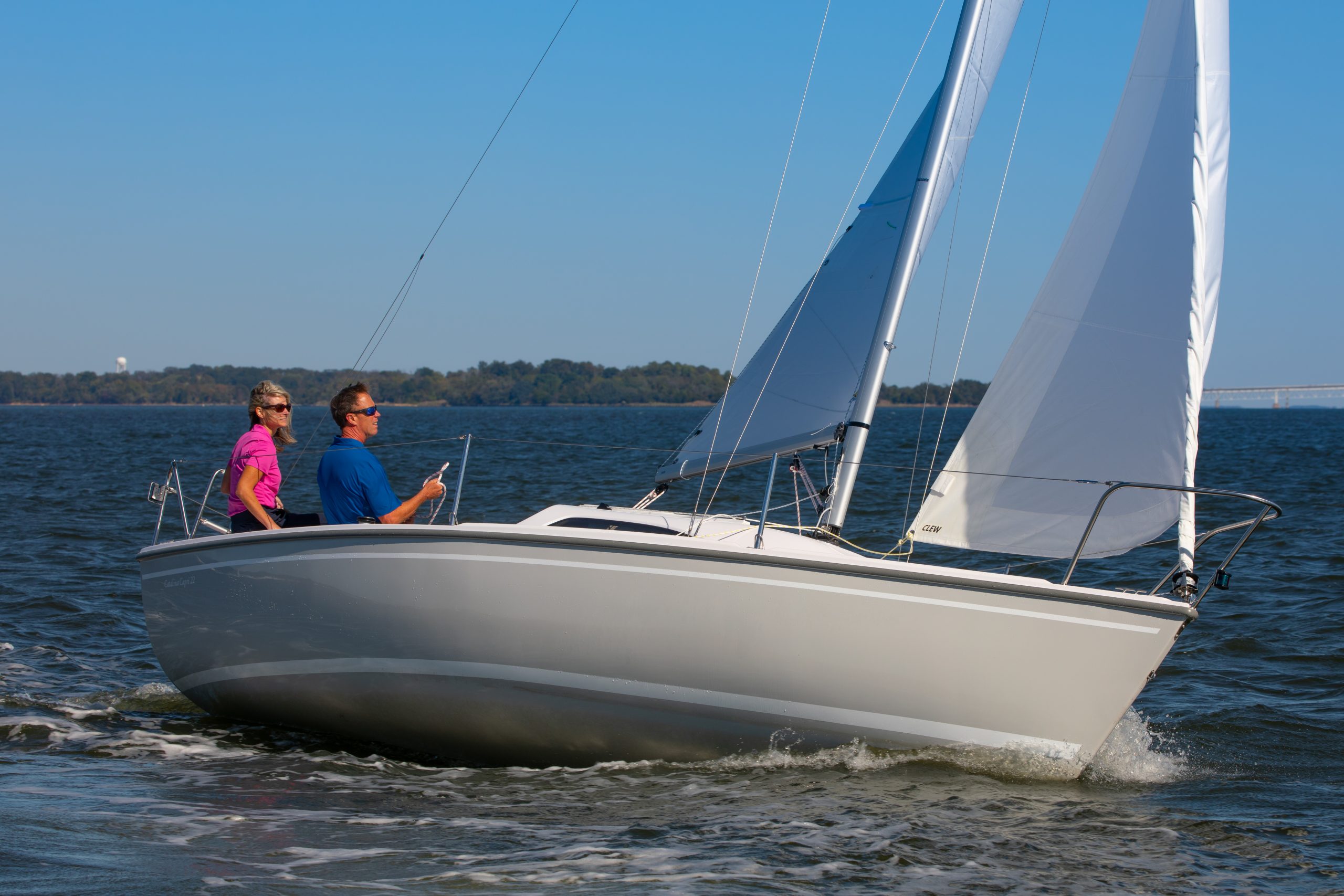
SPORT SERIES
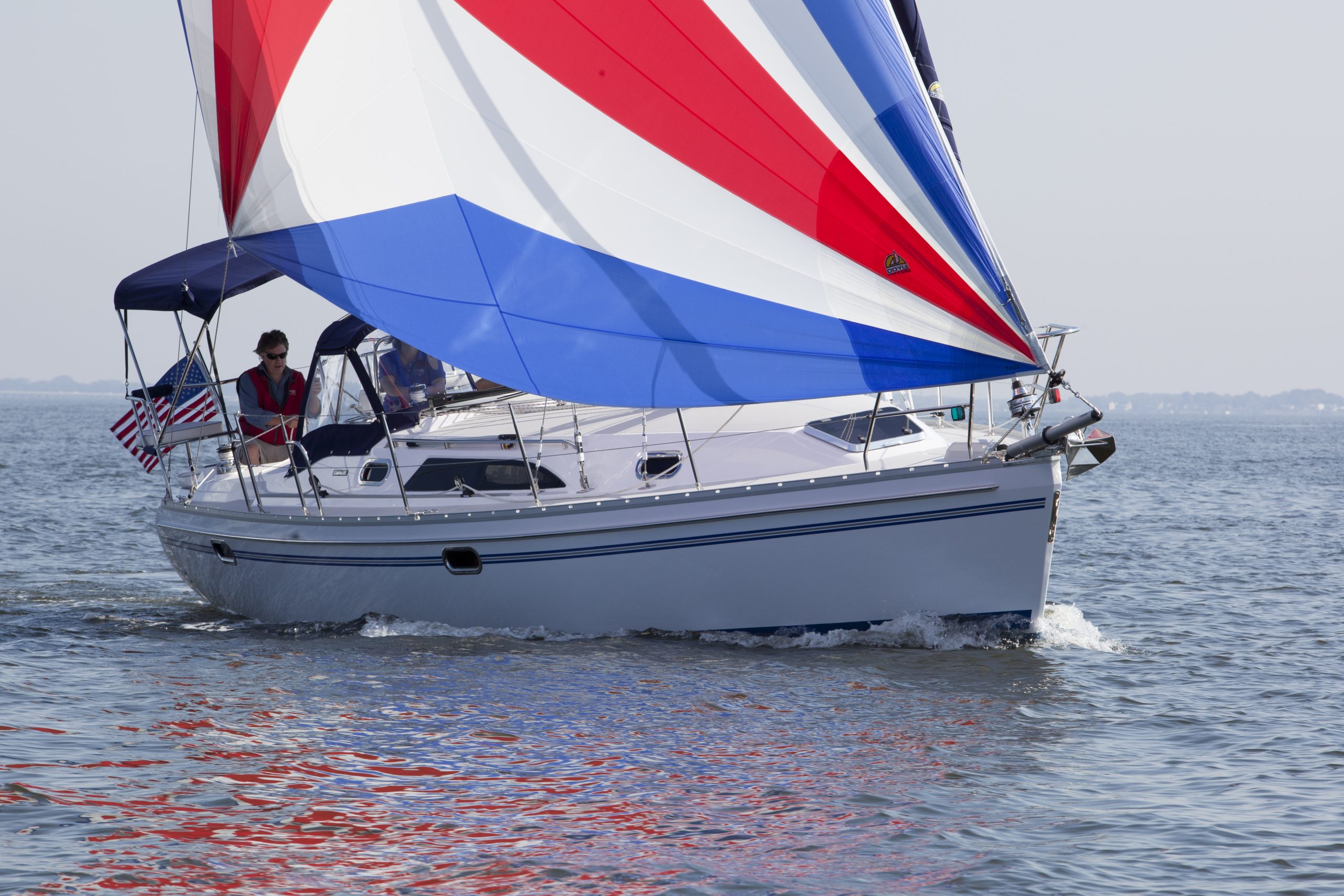
CRUISER SERIES
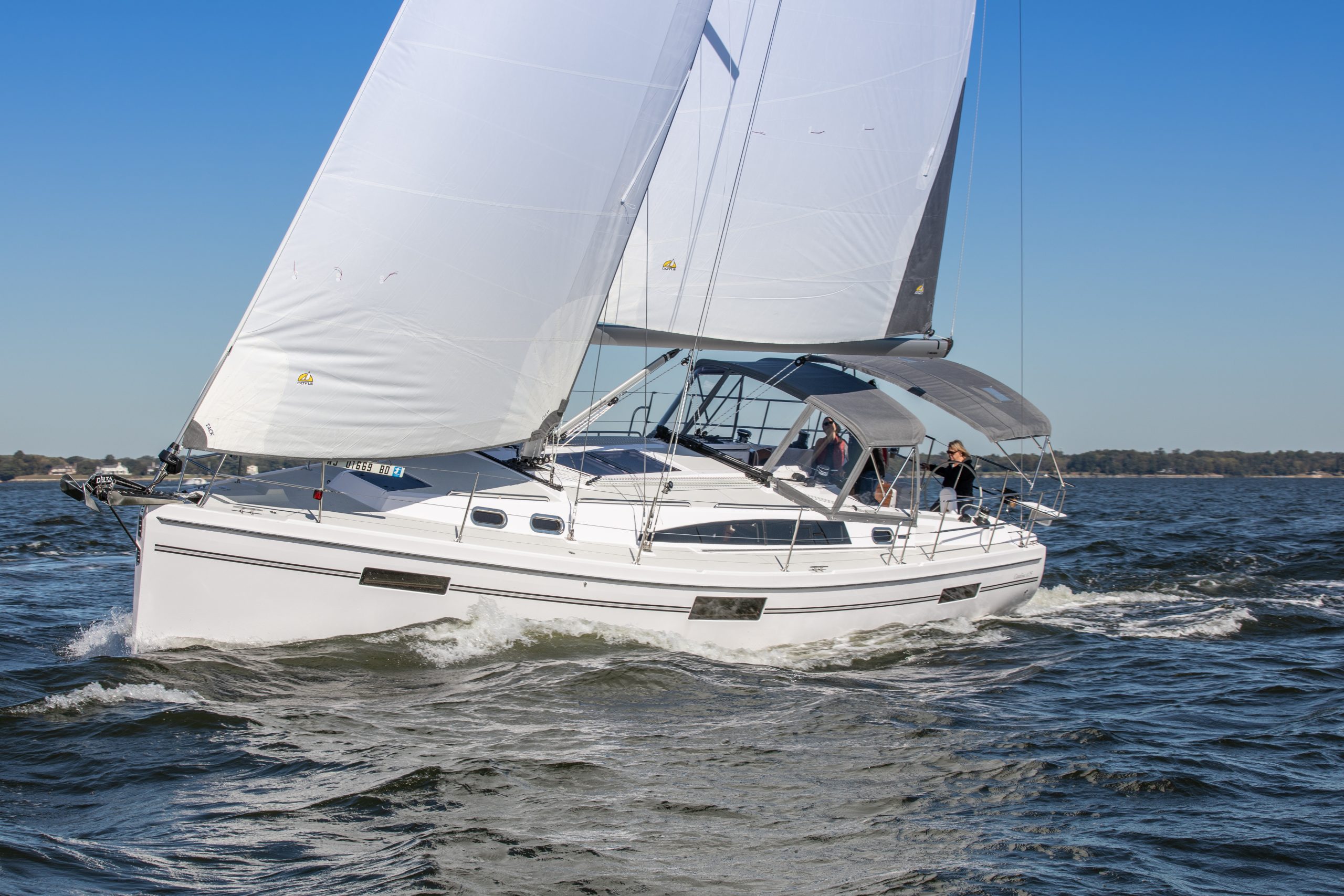
OCEAN SERIES
Find your dealer.
We have a roster of dealers across the country who represent the Catalina fleet and there’s a good chance they’re planing a show, event or open house to showcase their in-stock Catalina models.
CATALINA YACHTS STORE
CATALINA YACHTS OFFICIAL RETAIL PARTNER
Performance hardware, sails, custom apparel, mats, sheets and much more!

The official publication for thousands of Catalina Yachts sailboat owners around the world.
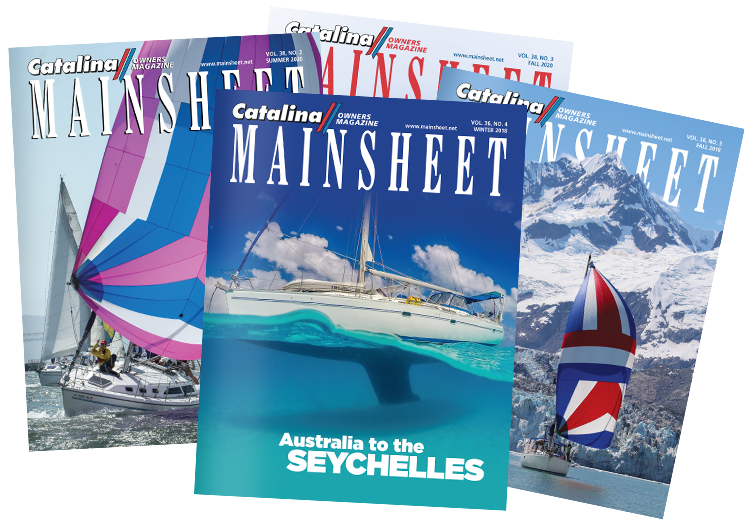
FORGING AHEAD
From the past 50 years, and to the next 50, Catalina is devoted to providing owners and dealers with quality and value that has made Catalina America’s largest sailboat builder.
Frank Butler’s vision and philosophy carries forward with Sharon Day, who worked alongside Frank for 48 years, at the helm of a veteran leadership team.
TRUE NORTH BY CATALINA
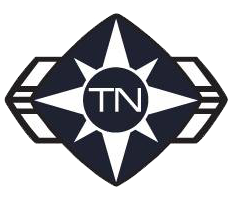
True North initiates Catalina’s entry into the growing market segment of Downeast-style powerboats and promises traditional style with great performance and Catalina value.
PROUDLY OWNED, DESIGNED & BUILT IN AMERICA
Additional resources.
- Brochure Archives
- Associations
PARTS & TECH SUPPORT
727-544-6681
7200 Bryan Dairy Rd
Largo, FL. 33777
Connect with an agent
A realtor.com coordinator will connect you with a local agent in minutes.
A local real estate agent can answer questions, give guidance, and schedule home tours.
By proceeding, you consent to receive calls and texts at the number you provided, including marketing by autodialer and prerecorded and artificial voice, and email, from Realtor.com and others Persons who may contact you include real estate professionals such as agents and brokers, mortgage professionals such as lenders and mortgage brokers, realtor.com and its affiliates, insurers or their agents, and those who may be assisting any of the foregoing. about your inquiry and other home-related matters, but not as a condition of any purchase. More You also agree to our Terms of Use, and to our Privacy Policy regarding the information relating to you. Msg/data rates may apply. This consent applies even if you are on a corporate, state or national Do Not Call list.

A Realtor.com coordinator will call you shortly
What’s next.
- A coordinator will ask a few questions about your home buying or selling needs.
- You’ll be introduced to an agent from our real estate professional network.
To connect right away, call (855) 650-5492

( Courtesy of Courtney Cooper Neese )
Ahoy, Neighbor! What It’s Really Like Living in a Floating Home—From Boating to Dinner to Strange Animal Visitors
If the water is calling and you can’t resist, you might consider trading in your ho-hum, land-based house for a floating home.
Floating homes , which get their name from being built upon wooden, concrete, or steel “floats,” are a popular lifestyle choice in several coastal U.S. cities. Unlike houseboats—which they’re often confused for—floating homes are semipermanent and moored in communities that are highly regulated
But what is life like in a home that is literally on the water? We spoke with several experts who have experience buying, selling, and living in floating houses.
Here are the eight biggest takeaways to consider before you dive into this unique way of living.
Get ready to socialize
One of the first things to know about floating-home living is that you’ll likely join a tight-knit group of neighbors.
“Hands down, it’s the community of people that makes living on a floating home so special,” says real estate broker and floating-home owner Amy Sedgwick , of Floating Homes Portland . “With floating homes, we all park in the lot and walk down the ramp, so there’s plenty of social interaction.”
As living on the water is so unusual, people tend to know one another more intimately and even make themselves available to lend a helping hand.
“If someone isn’t feeling well, there are any number of volunteers to walk their dog or stop at the store for them,” says Sedgwick. “We also enjoy yearly moorage parties and an annual float race.”
Your commute will be unique

(Courtney Cooper Needs of Seattle Afloat)
Although floating homes have permanent docking sites, quite a bit of logistics and travel still happen on the water.
“When we moved from floating home to floating home, we moved by barge,” says Courtney Cooper Neese , floating-home owner and owner of Seattle Afloat in Seattle. “When our hot tub was delivered, it came by barge.”
Beyond the big events, some of your day-to-day travel might also occur on the water, especially since getting around that way is sometimes faster.
“We take our Cobalt 28 boat to dinner,” says Cooper Neese.
You’ll have a ‘sense of calm’

We also repeatedly heard from those living the floating-home life that it offers a unique connection to nature.
“Floating-home dwellers are surprised by the physical calm that comes over them as they return home at the end of the day,” says Portland-based real estate broker and floating-home dweller Karla Divine . “Floating-home residents often find their inner artist in sunset and sunrise photography, the random sea lion tossing a salmon into the air, or an osprey returning to rebuild its nest.”
Divine has also enjoyed seeing other wildlife from her floating home, including beavers, hummingbirds, gulls, ducks, and even bald eagles.
You’ll drop stuff—off the side of your home
A less idyllic but possibly more important aspect of floating-home life is that you will almost certainly drop things in the water.
Luckily, there’s an easy solution for that.
“It’s handy to have a diver on call and a giant magnet to fish your keys out with,” says Cooper Neese. “I also have my keys on a float .”
You’re going to need a power washer
When it comes to maintaining your floating home, there’s one tool you’ll need handy above all others: a power washer .
“The main maintenance task is power washing,” says Divine. “Floating homes live on the water, so they get dirty by the end of winter and again by the end of summer. A good power washer is an important tool for keeping your home clean and repaired.”
Other critical maintenance involves regularly painting and staining your decking .
“In Oregon, which enjoys the largest community of floating homes in the United States, this kind of maintenance needs to be done in spring as soon as dry weather arrives,” says Divine.
Green living matters

When living close to the water, it’s important to understand the impact you can have on the environment—and be mindful of the best products and practices to mitigate it.
“We have normal utilities with one exception,” says Cooper Neese. “In order to get to the city sewer, we either have pumps under our docks, on our homes, or both. But dock pumps are sensitive, so we have to be mindful of what goes down the drains.”
This means no grease, cat litter, feminine hygiene products, or even detergent pods can go down the drain.
“As one old-timer said, if it didn’t come out of your body, don’t put it down the drain,” says Cooper Neese.
It’s also essential to recognize the animal populations you’ll be sharing the water with.
“Our rivers are famous for wild salmon runs and home to sturgeon and other amazing fish,” says Divine. “Floating-home people take stewardship of these rivers seriously.”
Nature can—and will—take over
It’s one thing to admire nature and another to let it take over your floating home—especially if you’re not prepared for it.
“The geese are loud during their breeding season,” says Cooper Neese. “They like to nest in our flower pots and are aggressive. If you have small children or animals, you should take care.”
The best solution Cooper Neese has found for keeping the geese at bay? Upside-down forks in the flower pots. And let’s not forget about the other water-loving species.
“There’s spider removal almost all year,” says Cooper Neese. “They love living over the water.”
There’s a season for buying a floating home
If the geese and the spiders haven’t scared you away from floating-home life, then there’s one final thing you should remember: There’s an unofficial-yet-official buying season, and it starts every spring.
“Floating-home sales season is generally from March to October,” says Divine. “People want to buy their floating home early enough to enjoy it when the weather is nice. In Oregon, that’s generally from July through October.”
Larissa Runkle (@therealtorwriter) is a real estate copywriter and journalist living in Colorado.
- Related Articles
Share this Article
Dyna-Ski Boats custom builds outboard powered water ski boats for recreational skiers and show ski clubs. We have customers all over the world including Malaysia, the Caribbean, Moscow, Russia, the Cayman Islands and Canada. This blog is used to keep readers informed about what is going on at Dyna-Ski and answers questions that are frequently asked. You can also visit www.dyna-ski.com for more information about our boats. Contact Dyna-Ski at [email protected] or call 715-854-7501.
Saturday, July 8, 2017
Used one season motors and more..

No comments:
Post a comment.
Cunard’s new ship Queen Anne arrives in Southampton
- Southampton
- Cruise ship
- Wednesday 1 May 2024 at 6:33am
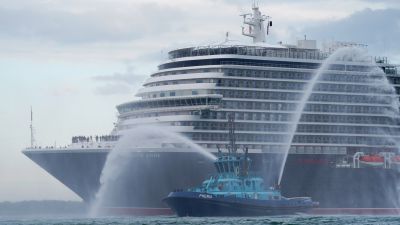
Cunard’s new ship, Queen Anne, was greeted by a water salute as she arrived in the UK for the first time.
The liner, which can carry 3,000 guests, entered her home port of Southampton on Tuesday night.
Her maiden passenger voyage will take place on Friday when she departs for Lisbon, Portugal.
The 113,000-tonne vessel sailed to the south coast after being built over five years at a cost of more than £500 million.
Cunard president Katie McAlister said: “We are immensely proud of Queen Anne.
“Not only does she reflect the Cunard distinctive style on the outside, the inside perfectly echoes the brand heritage with reimagined, elegant spaces and designs.
“We can’t wait to welcome guests on board for her maiden voyage.”
Queen Anne has become the fourth ship in Cunard’s current fleet.
The ship was being built in Fincantieri Marghera shipyard in Venice, Italy but was delayed by two years due to Covid and difficulties getting some parts due to the pandemic.
It is expected to bring a major boost to the region's economy, as she will contribute tens of millions of pounds a year.
She will be named in Liverpool in June which was the home of Cunard before they moved to Southampton in 1919.
Want a quick and expert briefing on the biggest news stories? Listen to our latest podcasts to find out What You Need To Know...
hanse electric sailboat
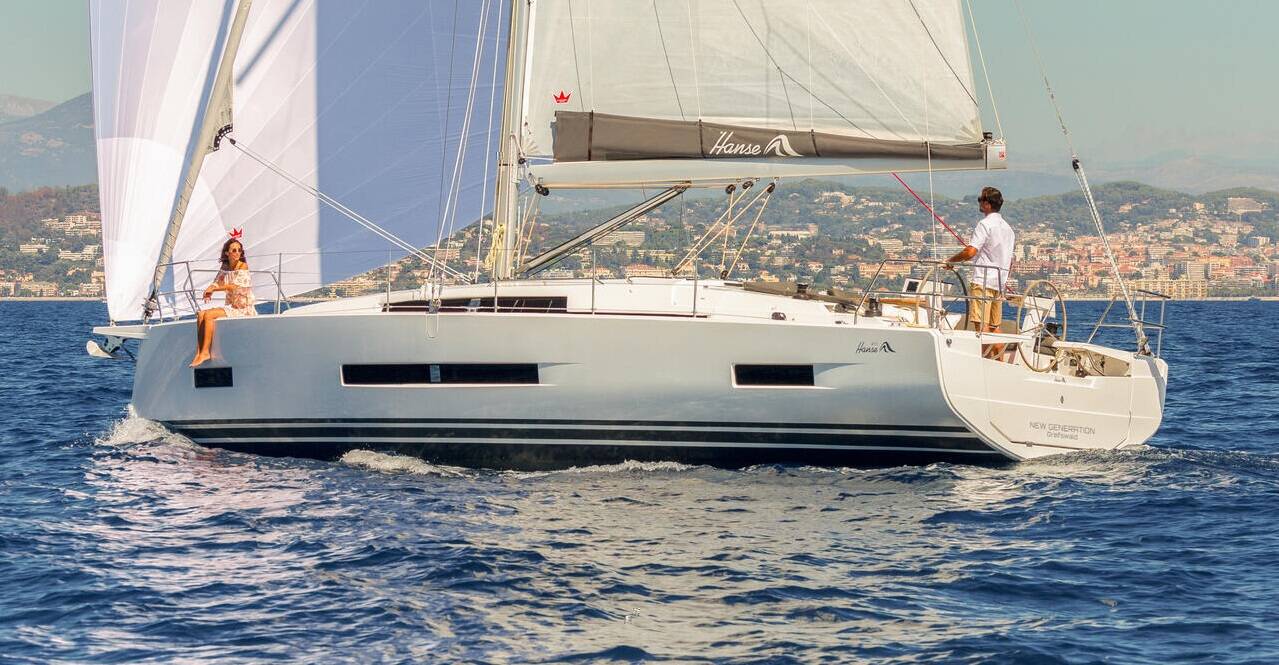
- Model Range

Design for the future. The Hanse 410.
Step into the future with the Hanse 410, where fashionable sailing harmonizes with eco-conscious values. The optimized hull design of this 41-foot yacht, featuring chines at the bow and stern, ensures a sleek waterline, providing the Hanse-typical uncompromising performance and ease while sailing. For the first time, the Hanse 410 introduces an optional electric propulsion system, boasting a remarkable range of up to 55 nautical miles. For even greater independence, a fuel cell delivers emission-free energy. Or, turn to the proven power of solar technology to keep essential appliances running on board without burning any fuel. The exclusive Sustainable Performance Sail (SPS) by Elvstrøm Sails is even made from recycled polyester, not only environmentally friendly but also fast on the water. Up to three expansive cabins and a welcoming salon, offer a genuine sanctuary with abundant space for relaxation. Cook in style on the waves! Experience a splash of gourmet in our galley, featuring ample storage, roomy workspace, and superior refrigeration. The Hanse 410 redefines elegance on the seas. With its class-first dual cockpit tables, there's an abundance of space and luxury seating, amplifying the sheer joy of a wind-driven journey.
Technical Specification
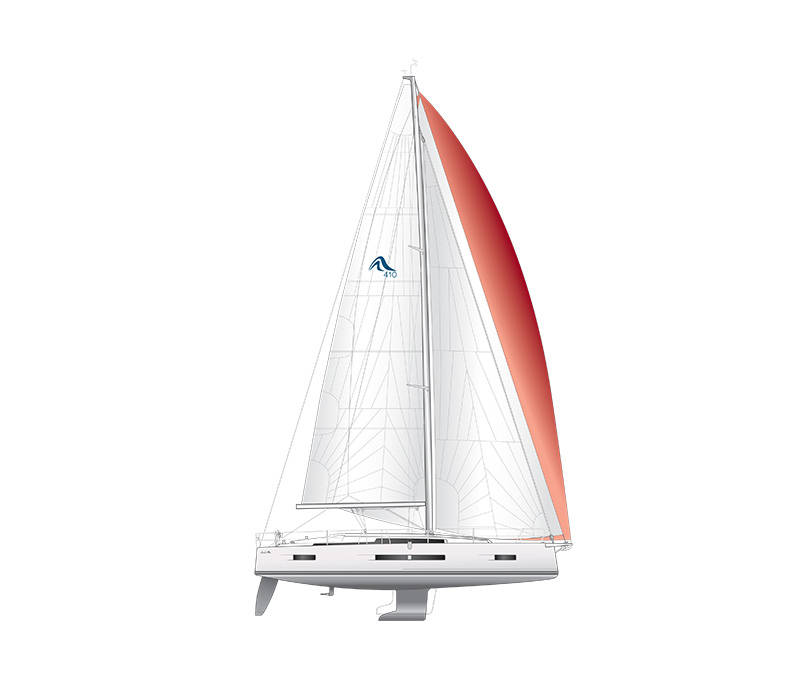
Try and Buy
Clear all doubts and experience your potentially new yacht firsthand before committing and final purchase.

Hanse Yacht World charter management program
Looking for the easiest way to your own boat? Choose our Hanse Yachting World charter management program that has already been recognized by many boat owners. Become a Hanse Yacht owner with minimal investment and enjoy the yacht's ownership without worrying about its maintenance.
If you are interested in buying yacht or need help planning your perfect vacation, contact us and our experts will gladly answer to all of your questions.
Request offer
You can find us in our headquarters:.
Address: Dražanac 2/a , 21 000 Split, CROATIA
Sales Office: +385 21 332 348
E-mail: croatia-yachting.hr
Office working hours: 8:00 – 16:00 CET
Feel free to ask us anything – our team is on your side!
For any yacht sales questions during the office hours please call our booking team in our Split headquarters on +385 21 332 348 or send us an e-mail on the address croatia-yachting.hr .
For urgent inquiries after working hours, you can contact our sales advisors individually on their mobile phones or send an e-mail and you will get a response as soon as possible:
e-mail: hanseyachts.hr
Mr. Domagoj Milisic - Sales manager
Mobile: +385 91 332 3320
Mr. Igor Karmelic - Yacht sales advisor
Mobile: +385 91 332 3322
Mr. Ivan Grabovac- Yacht sales advisor
Mobile: +385 91 332 3330
Croatia Yachting d.o.o. 2024. © All rights reserved.

E-Motion Rudder Drive, an electric engine with… the Propeller installed into the Rudder

Hanse Yachts introduces E-Motion Rudder Drive – an interesting propulsion type, with a special folding propeller….
An electric engine and a folding propeller have been installed into the rudder shaft, replacing the combination of diesel engine and sail drive. As a result, the propeller thrust is in line with the rudder position. This enables turning in the smallest circles or rotating around your own keel; it could be a perfect solution for maneuvering in narrow ports.
Making 4.5 knots with calm seas, the new Hanse 315 equipped with four lithium-ion batteries has a range of up to to 30 nautical miles – enough for all European inland waters and many coastal waters. At lower speeds, the range is significantly increased. The Rudder Drive can also be used with two batteries if a shorter range is required. The maximum speed is 6.1 knots – nearing the maximum speed of the diesel version.
The quiet Rudder Drive is also lightweight: 100 kg less than the diesel saildrive option. The Rudder Drive does not require a hole through the hull, lowering the resistance while sailing. The electric drive’s simplicity means less maintenance, as well.
E-Motion Rudder Drive: watch the video

From a standstill position, the yacht immediately starts to turn without having to pick up speed first. In addition, you enjoy all benefits of an electric engine. It will be the future?
7 Bluewater Cruising Sailboats We Love
Group beneteau: record full-year earnings in 2023, the countdown has begun for the new ice 66 rs, lagoon 60, freedom of space and panoramic views, live your passion, subscribe to our mailing list.
I think is a very good idea… I need to know if you sale this ingenio and to know the price and date of sending …Well as mucht as you can . Congratulations for that and awaiting for your news Carlos F Morante from Malaga Spain. For north wing 435
Dear Carlos, no we don’t sell it. We are a News Magazine. You have to contact Hanse Yachts (www.hanseyachts.com).
Best regards!
Nice, the space the engine takes is a lot. This would be great for smaller boats.
What provides the power? Diesel driving dc generator for the dc motor?
Yachting World
- Digital Edition

Hanse 460 review: First in a new range
- David Harding
- January 26, 2023
The Hanse 460 is the first in a new range of Hanses. From new designers, she is already a big hit, with over 200 sold and a European Yacht of the Year win to its name. David Harding reports

Product Overview
Price as reviewed:.
For some of us, sailing has always been about the functional and fundamental. We enjoy sailing for sailing’s sake. But today people want so much more from a boat and, in many respects, today’s yachts undoubtedly offer a lot more and the Hanse 460 attempts to do just that.
What you might loosely call the mainstream European builders of family cruising yachts have been following this path for some time, making each generation of designs bigger and plusher than the last. For Hanse in particular, it has been a rapid evolution from the small, basic and functional to the large and luxurious.
This latest Hanse is the first to be designed by Berret-Racoupeau. After the earliest models, which used the moulds of discontinued, slim-hulled Scandinavian designs, every Hanse has been designed by Judel/Vrolijk in what became one of boatbuilding’s most enduring and successful partnerships.
In line with modern trends, each new wave of Hanses has been higher, wider and more voluminous than the last. Founder Michael Schmidt never lost sight of the performance side, however. For all their growing girths and towering topsides, Hanse has always made boats that sail – competitively-priced, high-volume cruisers but with easy handling (self-tacking jibs were used from the early days) and better performance than many of the alternatives.
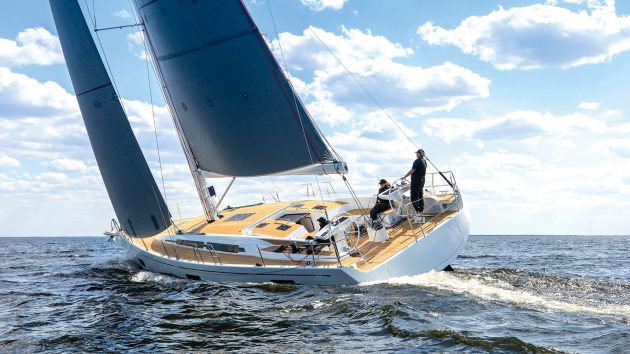
The single rudder is light and responsive on the helm. Photo: HanseYachts/Nico Krauss
The Hanse 460 is different. Very different. The first model from a new alliance with the French designers, it promptly won the European Yacht of the Year as the best Family Cruiser for 2022. A Hanse 510 version now follows.
The big question was whether Hanse had managed to do something different while retaining the qualities that its owners had traditionally sought.
At a glance, the Hanse 460 looks sleeker and sportier than earlier models; more angular, with a reverse rake to the bow and a pronounced knuckle running to about half-way aft. In Hanse tradition there are no hard-angled chines but, in this case, a pronounced soft chine towards the stern. In plan view you see full forward sections which, combined with the broad stern, generous freeboard and ample beam, hold the promise of enormous interior volume.

The 460’s generous and uncluttered cockpit. Photo: HanseYachts/Nico Krauss
At the other end, a moulded bowsprit projects the anchor clear of the stem and provides an attachment point for an outer forestay which can carry a reaching headsail. Large windows in the topsides help to break up the high freeboard.
Scale those topsides and you’re faced with an expanse of wide, flat deck and coachroof. Moulded bulwarks edge the side decks to help keep feet where they belong should you venture forward when the boat’s heeled. Otherwise what stands out is the uncluttered appearance – lines are led aft beneath separate mouldings – and the plethora of deck hatches hinged every which way, including one that opens to reveal a large bow locker.
There was certainly nothing to complain about in the performance and handling department. We slipped along very nicely on a flat sea in 12-14 knots of wind, clocking around 7.5 knots with the apparent wind at just under 30°, and tacking through around 80° by the compass.

Moulded bowsprit keeps anchor clear of the stem and provides attachment for the optional outer forestay. Photo: Andreas Lindlahr/EYOTY
Enjoyable sailing
Weather helm was slight and the load on the wheels increased relatively little if I tried bearing away with the sheets pinned in, the single rudder providing plenty of grip. Provoked in the opposite direction, she coped well when pinched mercilessly and also when thrown into tight spins, only stalling briefly.
At least in the flat water and modest breeze we encountered, the cockpit worked well. In any wind and seaway you would be pleased to have the optional second table to port as a bracing point. At the helm stations you have a comfortable perch outboard of the wheel or, for energetic downwind sailing when you might need both hands, behind it. The Jefa linkage is light and direct, giving a good feel from the rudder. On the starboard side you can wind down the bifurcated backstay when extra headstay tension is needed.

Hanse 460 is from Berret-Racoupeau. Photo: Andreas Lindlahr/EYOTY
Today’s cockpits are no longer just places from where you control the boat. Controlling the boat in itself is so much easier anyway, especially if – as most owners of the Hanse 460 will – you upgrade to electric winches, electric in-mast reefing and electric furling for the genoa on the outer forestay.
Other push-button options are for the hinge-down bathing platform and the cockpit tables (either side or both), which can be lowered to create large lounging areas. Alternatively there are fixed tables, as we had on the port side. A wet-bar can be added between the helm seats. It’s all part of making the cockpit a multi-function space in which every part can serve a variety of purposes. Cockpit stowage is in the form of a half-depth locker each side and – a first for Hanse – a dedicated liferaft locker right aft to starboard. With the electric-lowering option for the starboard table comes an extra moulded seat pod, which provides readily-accessible shallow stowage forward of the starboard helm and would be good to have for that reason alone.

Portlights and windows flood the saloon with natural light. Photo: HanseYachts/Nico Krauss
Moving about the deck and cockpit, and from one to the other, is easy in good weather. The wide open spaces let you simply stroll around – or lounge if you’re so inclined. Then again, they tend to present more of a challenge when a boat’s bouncing and heeling.
Lifestyle choices
Externally, the hull lines clearly differentiate the 460 from her earlier stablemates, but down below it’s a world apart. It’s certainly a more classy finish than we’ve seen before from Hanse; restrained in tone and a level above what we have become used to. Berret-Racoupeau is one of relatively few yacht design studios to have its own interior-design division.

Stateroom forecabin has generous stowage above and below the bed. Photo: HanseYachts/Nico Krauss
A host of interior layouts is available, from three to five cabins, up to four showers and from six to 10 berths. About the only constant is the presence of twin double cabins in the stern. Otherwise you can have different arrangements in the bow (cabins and heads) and amidships with a long or short linear galley and a bunk cabin or utility room to starboard where our boat had a chart table and heads compartment.
Details include backrests that hinge down in the saloon to provide trays and drinks-holders. You can press a button to lower the table, press another to pop up the TV from its central pod, and settle in for the evening.
Down here it’s all about sight-lines, integrating the different areas so no one feels left out, and ensuring that, as in the cockpit, every part of the layout performs multiple functions. In practice it creates a thoroughly pleasant and remarkably light environment.
If you enjoyed this….
Yachting World is the world’s leading magazine for bluewater cruisers and offshore sailors. Every month we have inspirational adventures and practical features to help you realise your sailing dreams. Build your knowledge with a subscription delivered to your door. See our latest offers and save at least 30% off the cover price.
Sometimes you come across a boat that makes you realise not only that yacht design has changed irrevocably, but also why it has changed and why it’s not going back. The Hanse 460 is unquestionably such a boat. How the crew lives aboard and moves around, both above and below decks, has clearly been thought about in the context of modern lifestyles. And this boat exudes style. If you like the fundamental design, you will be able to tailor many of the options and details to suit your tastes. A yacht like this is unlikely to slice to windward in heavy weather as comfortably as, say, a first-generation Swan 46, but most people aren’t really interested in that these days. I suspect the new Hanse will prove to be a pretty quick and competent all-rounder nonetheless. Simple sailing? The technology is not remotely simple any more. But with the Hanse 460, the sailing itself is simple and can still be a lot of fun.
JavaScript functionality for your browser has been deactivate. Please activate JavaScript so you can use all functions on this page.
- Back to overview
- Big Picture
- Press Releases
Technology cooperation for new sailing yacht drive
Rudder Drive, the new electric propulsion system for sailing yachts developed by Torqeedo together with the large-scale boat builder Hanse Yachts and rudder manufacturer Jefa, combines outstanding maneuverability and minimal weight with a powerful emission-free motor.
The core of this innovative concept is the proven and specially adapted Torqeedo Cruise 4.0 with folding propeller, designed in to the rudder blade itself. The streamlined system replaces the combustion inboard or saildrive and removes the need for a separate thruster on the new sailing yacht Hanse 315 e-motion rudder drive, which debuts at the end of October.
Outstanding maneuverability
Due to the unique rudder placement of the 4 kW (8 horsepower equivalent) Torqeedo electric motor, the motor can apply efficient, directional thrust. The Jefa rudder blade’s range of motion was extended to a total of 100 degrees. Demanding maneuvers can now be accomplished without a separate thruster. While motoring, the yacht can spin on its own axis – both forward and in reverse. While docking, the stern can easily be maneuvered into the proper position. This is highly useful in windy conditions or in narrow slips.
Exceptional endurance with minimal weight
Power generation while sailing
With integrated Torqeedo fast chargers, the emission-free version of the Hanse 315 is fully charged in just three hours. The batteries can be recharged at the dock or during sailing when the Rudder Drive’s folding propeller is used to generate power. Torqeedo is the only manufacturer of electric boat propulsion systems offering industrial engineering, complete system integration and ISO 9001 certified serial production in Germany.
World launch at the Hanseboot Hamburg
For the first time, the new propulsion system will be presented installed in the Hanse 315 e-motion rudder drive at the International Boat Show Hanseboot 2016 in Hamburg. We are looking forward to welcoming you to the Hanse Yachts booth (hall 6, booth C108) on Sunday, October 30, 2016 at 2 pm.
PDF Download
Pictures: Hanse 315 e-motion rudder drive motoring, Rudder Drive renderings
Published by Torqeedo GmbH Friedrichshafener Str. 4a 82205 Gilching Germany
Reprinting free of charge. 1 copy requested.
Next Articles
5 AUGUST 2016
12 JULY 2016
21 JUNE 2016
30 MAY 2016
Exalto Emirates LLC is Torqeedo’s new sales partner in the United Arab Emirates.
25 APRIL 2016
- BOAT OF THE YEAR
- Newsletters
- Sailboat Reviews
- Boating Safety
- Sailing Totem
- Charter Resources
- Destinations
- Galley Recipes
- Living Aboard
- Sails and Rigging
- Maintenance
- Best Marine Electronics & Technology

Nominee Spotlight: Hanse 510
- By Andrew Parkinson
- October 5, 2023
The Berret-Racoupeau-designed Hanse 460 turned heads as a 2022 Boat of the Year nominee with a fresh take on comfort and volume but with an eye better sailing performance. The second model in the new range designed by the Berret-Racoupeau team, the Hanse 510 is set to make its US premiere at the 2023 Annapolis Sailboat Show—again as a Boat of the Year contender. From what our editors saw at the model’s recent showing in Cannes, the 510 is expected to be a formidable opponent in its category during CW ’s Boat of the Year judging.
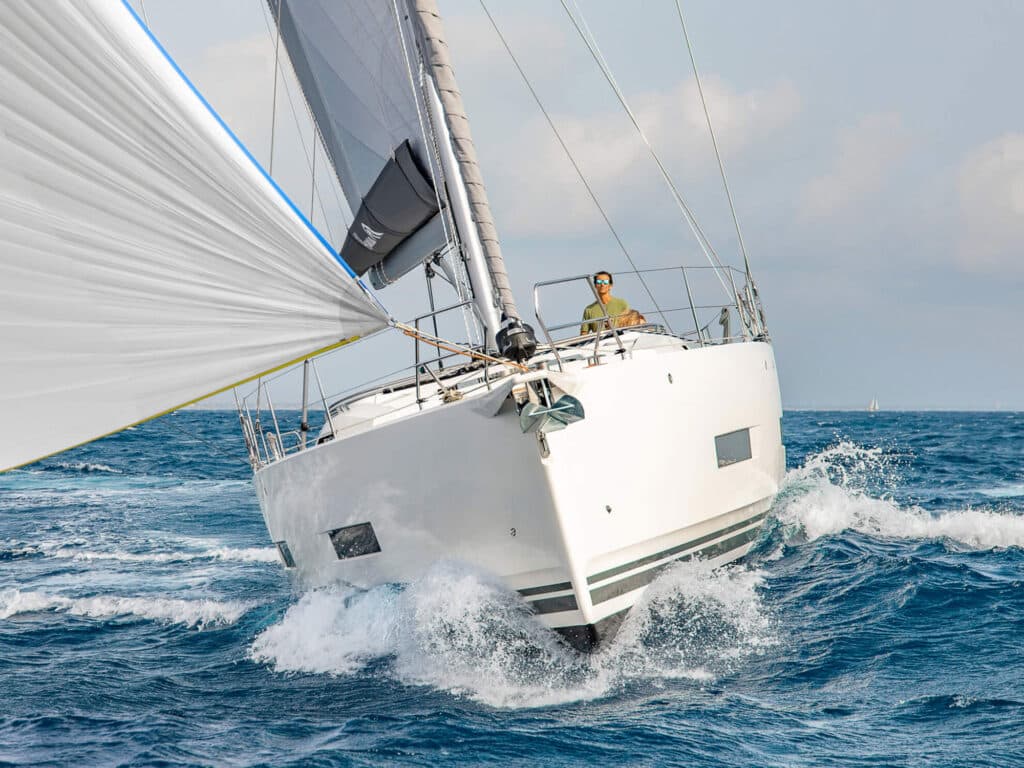
As for dockside demeanor, this new range’s calling card appears to be a marked chine on the bow and an inverted bow to optimize sailing performance. According to the designers, attention was also paid to refining the hull shape to maximize interior space. The result is an easy-on-the-eyes 51-footer that values smooth sailing and fast, comfortable cruising.
According to the builder, the Hanse 510 offers unrivalled volume in the 50-foot class, courtesy of an optimized hull design. Chines at the bow and aft further allow for a slim waterline, ensuring prime performance and easy sailing.
The 510 is equipped with a large, practical dinghy garage, capable of holding an inflated dinghy of up to 8.8 feet; and the optional, newly developed Hanse Smart Tender System makes launching that dinghy as simple as “driving a car out of the garage.” Convenience and style dominate the interior. Even the crew cabin gets in on the volume action, as it’s much more than the typical (read: small) crew sleeping space—it is a room worthy of staying a while. The options list is lengthy, and the boat can be highly customized to meet owners’ needs.
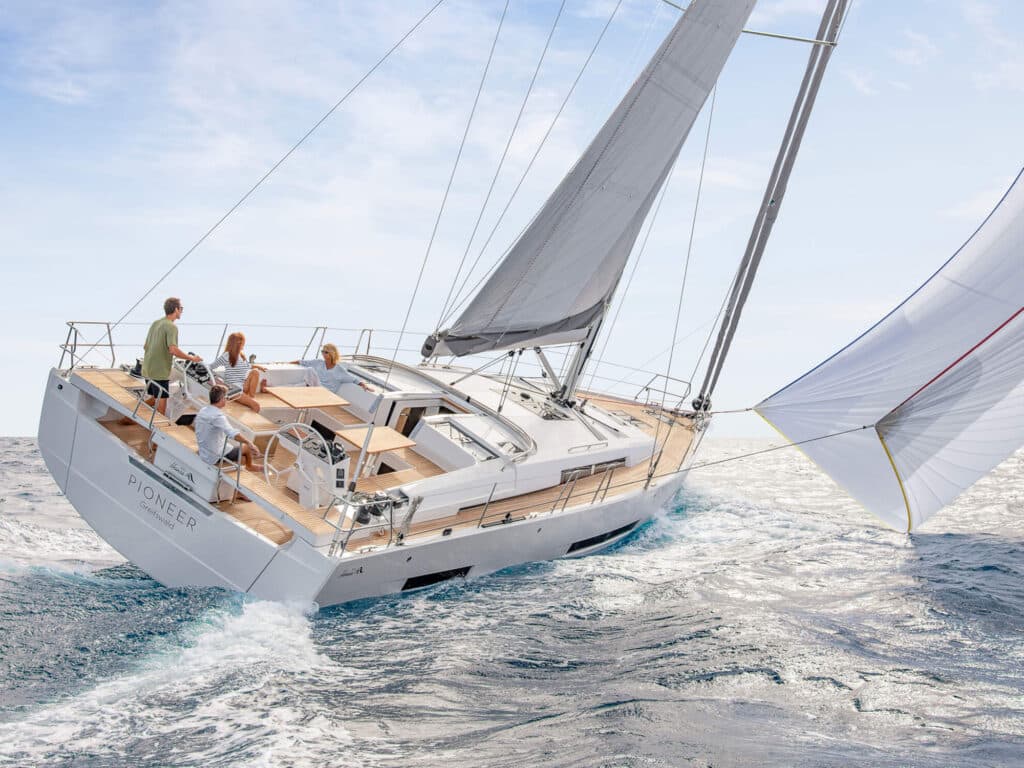
“Expectations were high after the outstandingly successful Hanse 460, which has been awarded European Yacht of the Year,” says Hanjo Runde, CEO of HanseYachts. “The new Hanse 510 is the logical and consistent further development of the new concept. With her impressive volume, tremendously dynamic lines and countless options, she is redefining the 50-foot class. It is an easy to sail and enormously spacious private retreat.”
The key talking points of the 510 are numerous. A hydrodynamic design with a slender waterline promotes better hull speed. Chines fore and aft allow for a wider hull and more interior space. The reverse, wave-piercing bow makes the yacht pitch less in strong winds, while the pronounced bow chines keep the foredeck as dry as possible. On deck, the strategically placed helm position promotes total control of the Hanse 510 in any situation, with all navigation and performance information easily accessible, as well as all lines and even the electric winches on the port side. An optional hardtop shades the entire cockpit including the steering positions, and it blends seamlessly with the boat’s silhouette. It is also available in several colors and accommodates special lighting and solar panels. A fixed windscreen is another option.
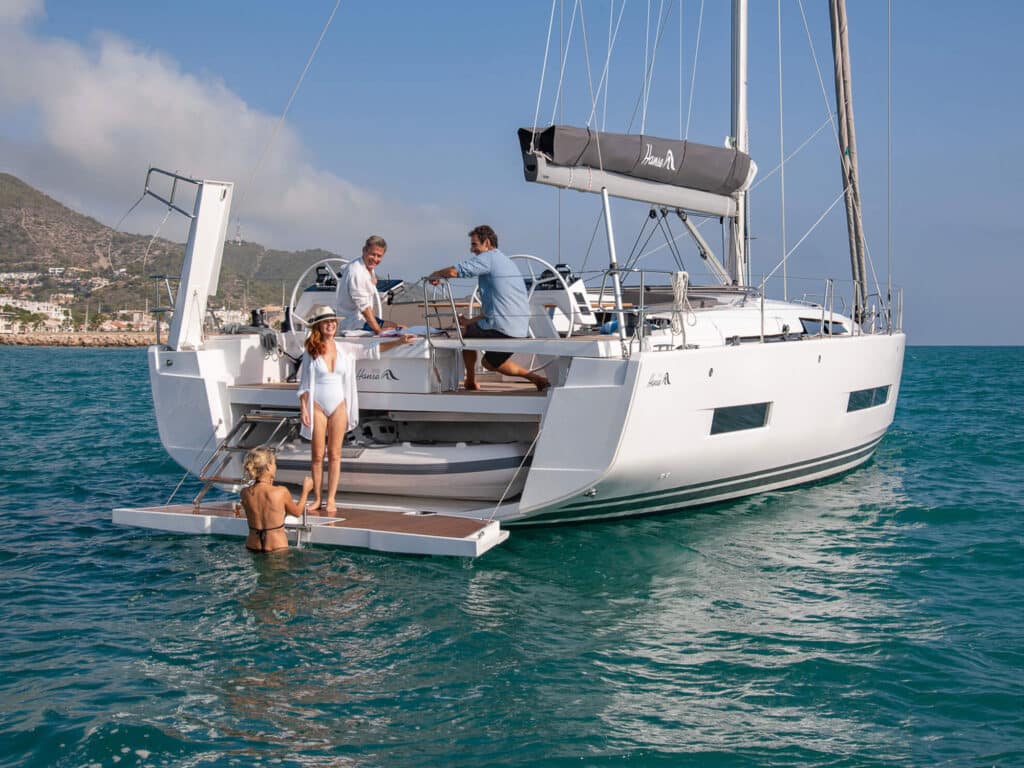
The novel dinghy garage is capable of holding a dinghy of up to 8.8 ft without having to deflate it. Combined with the optional automatic comfort stairs and the newly developed Hanse Smart Tender System, a single crew member can safely and comfortably deploy the dinghy, including engine, in minutes.
Another novelty on the Hanse 510 is the easy-to-open life raft storage space in the cockpit. Situated just in front of the companionway, it’s easily accessible and has space for standard 8-person life raft containers. An optional wet bar with grill and sink is hinged at the stern so as not to absorb precious cockpit space.
The boat comes rigged with a self-tacking jib, and all lines run back to the cockpit for simple sail handling of the 710 sq. ft. mainsail and various headsails. The jib is 570 sq. ft. and the reacher measures 1,011 sq. ft., set up using a Solent-style rig on the custom bowsprit. Air draft of the deck-stepped mast is just over 77 feet above the waterline. Optional electric furling systems and winches make light work of handling halyards and sheets for the optimum in performance, short-handed sailing. The standard boat comes with a single, 80 hp saildrive, although an upgraded, optional 110 hp diesel is also available.
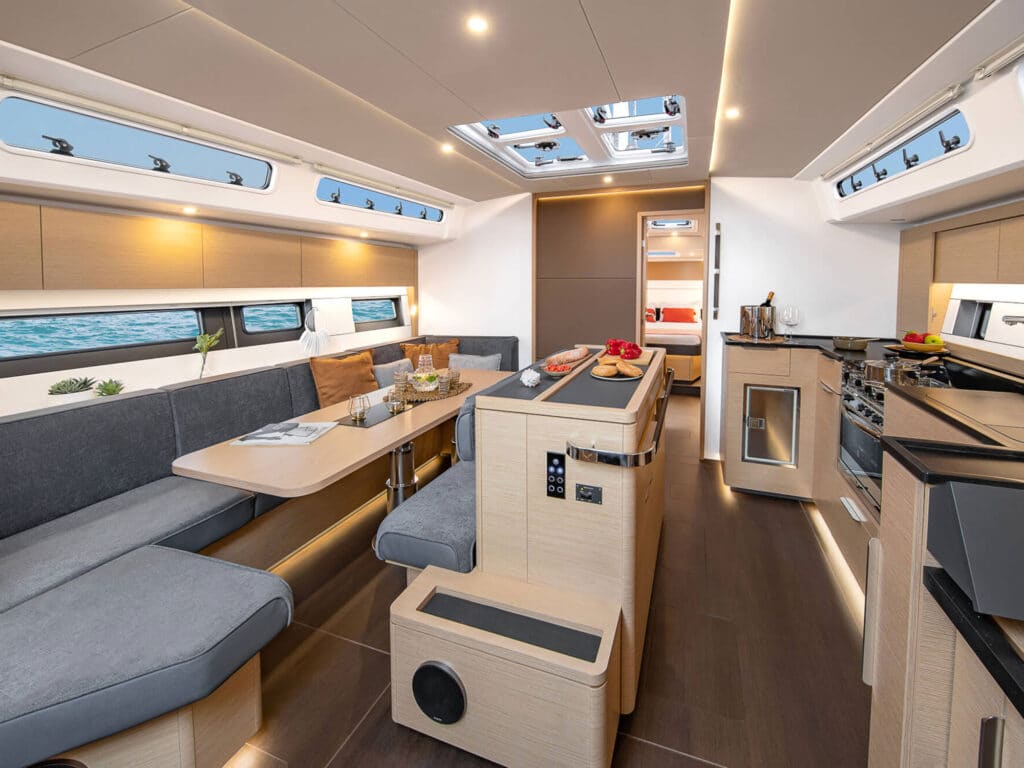
Within the interior, 14 well positioned opening hatches and eight opening windows and portholes permit maximum light and ventilation below deck. A long list of layout options are said to be available for the interior arrangement, from an “owner’s yacht” with a best-in-class sized master cabin, to a “charter yacht” with 10 berths, three bathrooms and an additional skipper cabin. The galley can be fully adapted to the owner’s needs as well: In addition to various refrigerator and freezer options, there is room for a wine cooler, dishwasher and a three-burner gas cooker plus an oven in the longitudinal pantry, which can be customized with a vast choice of colors and materials. Another option is a fully equipped navigation area with a forward-facing seat and a large salon table. The extensive options list, ranging from a washing machine in the utility room to flatscreens in the master cabin and salon, is crowned by the Flagship Package, which includes highest-end fabrics and materials, not to mention a “hidden” bar behind the folding backrest in the salon.
At its core, the Hanse 510 emphasizes a roomy cockpit, large but manageable sail plan, and overall performance that is easily managed by a couple, but perhaps what really sets the Hanse 510 apart from other sailboats in its class is the limitless level of customization the builder is willing to offer. The Hanse 510 also comes with a CE rating of A-12, so it is well suited for those who want to venture longer distances.
Hanse 510 Specifications
- More: 2024 Boat of the Year , Boat of the Year , hanse , Sailboats
- More Sailboats

Balance 442 “Lasai” Set to Debut

Sailboat Review: Tartan 455

Meet the Bali 5.8

Celebrating a Classic

Kirsten Neuschäfer Receives CCA Blue Water Medal

2024 Regata del Sol al Sol Registration Closing Soon

US Sailing Honors Bob Johnstone

Bitter End Expands Watersports Program
- Customer Service
- Privacy Policy
- Email Newsletters
- Cruising World
- Sailing World
- Salt Water Sportsman
- Sport Fishing
- Wakeboarding
The NKD Sailor
Electric Sailboats
For prospective buyers, here is a list of new sailboats that at the time of writing have an electric motor in their specifications , either in the standard configuration or as an option. (Updated 19.1.2022)
Please comment or send me an email ( [email protected] ) if you find errors or omissions.
Alva Yachts
- Ocean Sail 72 , 135 kW electric motor
- Ocean Sail 82 , 135 kW electric motor
Arcona Yachts
- Arcona 345 , Oceanvolt
- Arcona 385 , Oceanvolt
- Arcona 415 , Oceanvolt 15 kW
- Arcona 435 , Oceanvolt
- Arcona 465 , Oceanvolt
Domani Yachts
- Design S30 , Torqueedo Cruise 24V e-saildrive
- Design S32L , Torqueedo Cruise 48V e-saildrive, 4kW
Elan Yachts
- Elan E3 , Oceanvolt 8 kW.
- Elan E4 , Oceanvolt 8-10 kW.
- Elan E5 , Oceanvolt 10-15 kW.
- Elan E6 , Oceanvolt 15 kW or Oceanvolt 10 kW twin.
- Elan i40.1 , Oceanvolt 10-15 kW.
- Elan i45.1 , Oceanvolt 15 kW.
- Elan i50.1 , Oceanvolt 15 kW twin.
- Elan GT5 , Oceanvolt 15 kW or Oceanvolt 10 kW twin.
- Elan GT6 , Oceanvolt 15 kW twin.
Hanse Yachts
- Hanse 315 , Torqeedo e-motion rudder drive ,
Jeremy Rodgers Limited
- Contessa 32 new build , Beta/Hybrid-Marine ,
Salona Yachts
- Salona 33 , Oceanvolt 8 kW.
- Salona 35 , Oceanvolt 8 kW.
- Salona 38 , Oceanvolt 8 kW.
- Salona 41 , Oceanvolt 10 kW.
- Salona 46 , Oceanvolt 15 kW ( also with 2 x 10 kW ).
Spirit Yachts
- SPIRIT 44CR(E) , Oceanvolt 15 kW.
Viator Marine
- Viator Explorer 42 DS , 2 x Bellmarine DriveMaster 15kW 48V
- Viator Explorer 54 DS , 2 x ISCAD V50 50kW 48V
- WALLYNANO MKII , Oceanvolt 6 kW.
Antares Catamarans
- Antares 44 Hybrid , Hybrid Marine 40 HP Yanmar Parallel hybrid system
DNA Performance Sailing
- DNA G4 , Oceanvolt 6 kW.
HH Catamarans
- HH44 , 2 x BETA 30 + 2 x 10 kW parallel hybrid drives
- OC44 , 2 x BETA 30 + 2 x 10 kW parallel hybrid drives
- HopYacht 30 , 2 x 6 kW E-propulsion pod drive .
Independent Catamaran
- IC36 Independence , 2 x Oceanvolt 6 kW.
ITA Catamarans
- ITA 14.99 , 2 x Oceanvolt 15 kW with 1 x 15 kW generator.
Lady Hawke Catamarans
- LH 33 Comfort Eco , 2 x Oceanvolt 6 kW
Maverick Yachts
- Maverick 440 Hybrid , 2 x Oceanvolt 15 kW
Open Waters Yachts
- Open Waters ESC40 , 2 x 10 kW electric motors
- Outremer 4.zero , 2 x Oceanvolt 10 kW.
SeaQuest Catamarans
- SeaQuest 46 , 2 x Oceanvolt 15.1 kW
Slyder Catamarans
- Slyder 49 , 2 x 22 kW electric motors
- Slyder 59 , 2 x 25 kW electric motors
Sunreef Yachts
- Sunreef 50 Eco Yacht , 2 x 40 kW electric motors
- Sunreef 60 Eco Yacht , 2 x 70 kW electric motors
- Sunreef 70 Eco Yacht , 2 x 90 kW electric motors
- Sunreef 80 Eco Yacht , 2 x 160 kW electric motors
- Sunreef 100 Eco Yacht , 2 x 270 kW electric motors
Vaan Yachts
- VAAN R4 , 2 x Torqeedo FP10 10 kW saildrive (standard), 2 x Oceanvolt 15 kW (option)
- VAAN R5 , 2 x Torqeedo Deep Blue saildrive 25 kW or 2 x Oceanvolt 15 kW
- Windelo 50 Adventure (also Yachting and Sport versions), 2 x Bellmarine 20 kW electric motors.
- Windelo 54 Adventure (also Yachting and Sport versions), 2 x 24 kW Bellmarine electric motors.
The little (electric) engine that could: The Port of San Diego unveils the nation’s first all-electric tug boat
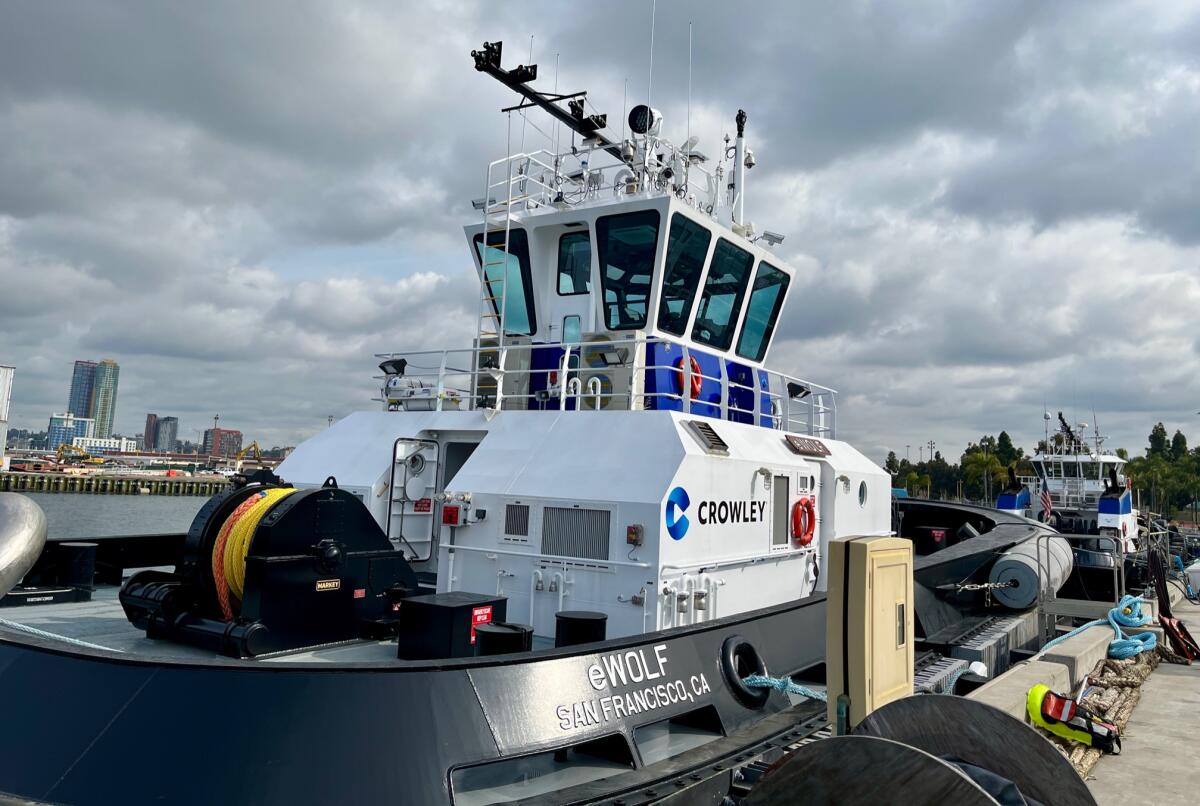
The 82-foot eWolf expects to eliminate 3,100 metric tons of carbon dioxide
- Show more sharing options
- Copy Link URL Copied!
The nation’s first all-electric tug boat has docked at the Port of San Diego and expects to begin emissions-free operations in about a month.
Operated by Crowley Maritime Corporation , the 82-foot eWolf will escort ships entering and leaving the Tenth Avenue Marine Terminal using electric power instead of diesel fuel, helping slash greenhouse gas emissions at the port and its neighbors in Barrio Logan and National City.
For the record:
1:58 p.m. March 13, 2024 This story has been updated to show the correct amount of government funding that went to the project.
“This is a big deal,” said port chairman Frank Urtasun at a news conference Monday. “This is new technology.”
Capable of speeds of up to 12 knots, the eWolf is powered by a 6.2 megawatt-hour main propulsion battery and two electric drives. The tug has thrust — also known as bollard pull in the parlance of the shipping industry — of 76.8 short tons, which is more powerful than the diesel-powered counterparts at the port.
Constructed in Alabama, the eWolf is equipped with two small generators for emergency use that allow the boat to travel longer distances at a reduced speed.
“Like an electric car, you step on the gas and it jumps,” said Paul Manzi, vice president of Crowley Shipping, based in Jacksonville, Fla. “All of the attributes that you have with an electric motor operation in a car or in an electric truck, you see here in the (eWolf) at massive scale. And it’s extremely quiet so when it pulls away from the dock you literally won’t hear any noise.”
The tug boat’s electricity will come from a charging station that is part of a microgrid facility equipped with two energy storage containers. Battery modules in each container have storage capacity of nearly 1.5 megawatt-hours.
Interconnected with the help of San Diego Gas & Electric, the charging station at the port is designed to allow the vessel to recharge quickly and reduce peak loads on the electric grid.
Operators plan to charge the eWolf overnight so it can perform its chores during daytime hours.
“This technology has individually been around for a while, but it hasn’t necessarily been integrated and optimized to all work together — and that’s kind of our role,” said Bruce Strupp, vice president at ABB Marine & Ports , the company that designed the boat’s propulsion system. “Some of the technology is our technology, some of it’s third-party technology, but we integrate it all together.”
The electric tug boat is expected to begin commercial operations at the port in mid- to late-April, depending on the completion of the charging station.

Officials at Crowley did not release the eWolf’s price tag Monday, saying only that it cost about twice as much as a conventional diesel-powered tug boat of comparable size.
But, Manzi said, the company expects the eWolf’s maintenance and operating costs will be “dramatically lower” than what’s spent on a diesel-powered tug boat because the electric model has fewer moving parts.
The entire project — the vessel as well as the charging station — received four grants that added up to $13.67 million, with two grants of $10.9 million from the San Diego Air Pollution Control District, one grant of just over $2 million from the U.S. Environmental Protection Agency and $750,000 from the federal government’s Maritime Administration.
In 2020, Gov. Gavin Newsom signed an executive order that directed state agencies to transition off-road vehicles — including tug boats — and equipment to 100 percent zero emissions by 2035.
By replacing one of the port’s diesel-powered tugs, the eWolf is expected to eliminate the consumption of about 35,000 gallons of diesel fuel per year. In its first 10 years of use, the electric tug boat is expected to reduce about 3,100 metric tons of carbon dioxide from the port and its surrounding areas such as Barrio Logan and National City.
“We’re trying to be good neighbors and trying to be able to help to reduce emissions here to help the electrification movement,” Urtasun said, adding that the port has spent about $130 million on various electrification projects.
Last year, the Port of San Diego became the first in North America to install a pair of all-electric cranes to load and off-load heavy cargo. Each 262 feet high, the cranes replaced an older crane that ran on diesel fuel. Together, the cranes expect to help the port reduce greenhouse gas emissions by 47 metric tons per year.
Get U-T Business in your inbox on Mondays
Get ready for your week with the week’s top business stories from San Diego and California, in your inbox Monday mornings.
You may occasionally receive promotional content from the San Diego Union-Tribune.

More from this Author

San Diego Community Power signs agreement for big energy storage project that could power 45,000 homes
March 21, 2024
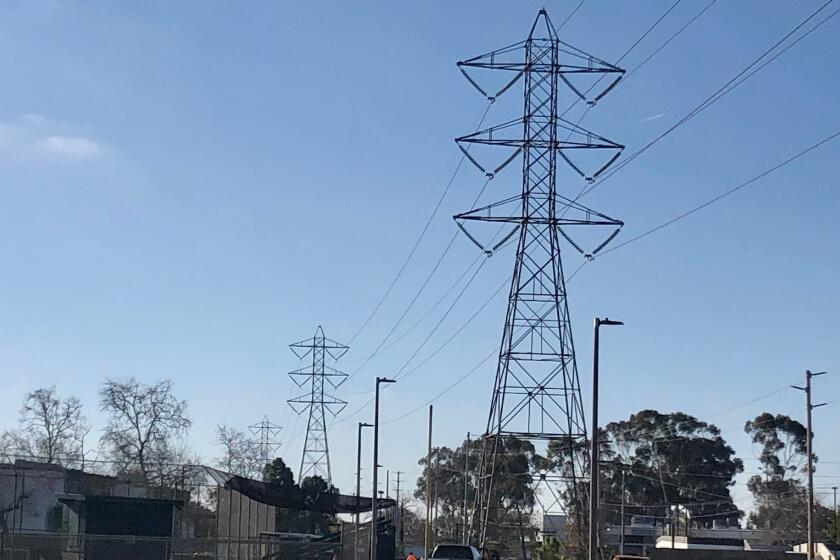
If the city of San Diego ran its own municipal utility instead of using SDG&E, how much would it cost?
March 15, 2024

Blowin’ south of the border: Sempra subsidiary will build a new wind farm in Mexico

San Diego EV charging company completes $1 million deal with the U.K.’s defense ministry
March 12, 2024
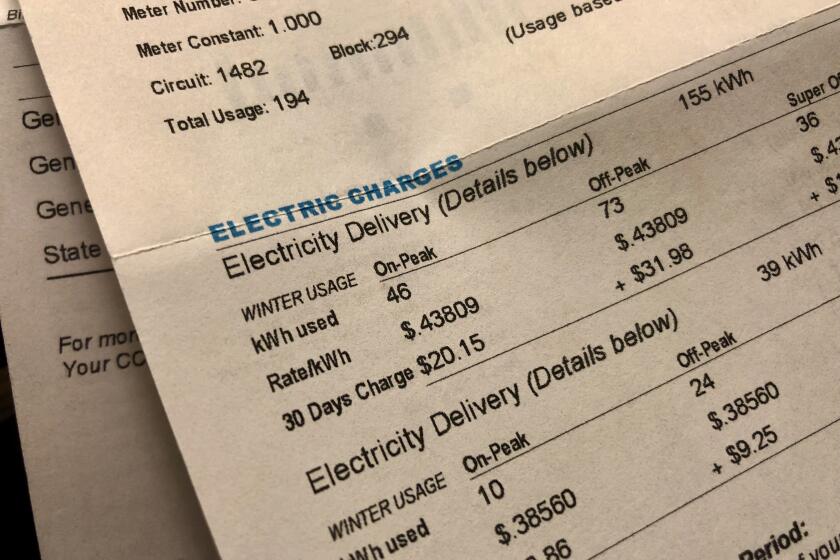
Here’s how many San Diego customers are behind on their utility bills
March 10, 2024

Biden hits the pause button on new LNG projects. It may cloud expansion plans at a Sempra project in Texas
Feb. 29, 2024
More in this section

National Business
Requiring ugly images of smoking’s harm on cigarettes won’t breach First Amendment, court says
A federal appeals court says a requirement that cigarette packs and advertising include graphic images demonstrating the effects of smoking does not violate the First Amendment

EU Commission proposes to impose tariffs on imports of grain from Russia
The European Union’s executive arm is proposing to member countries to impose tariffs on grain imports from Russia and Belarus

PIRCH, Oceanside-based luxury home appliance merchant, abruptly ‘pauses’ operations
PIRCH’s two San Diego County stores, in Solana Beach and Westfield UTC mall, announced they are now temporarily closed through the weekend, with future plans still unknown.
Antitrust lawsuits accuse major US sugar companies of conspiring to fix prices
Three antitrust lawsuits filed by food businesses in federal court in Minnesota this week accuse some of the largest U.S. sugar-producing companies of conspiring to fix prices

Need to ‘borrow’ miles from your kid to get that free flight? A big airline will let you do that
What if you don’t have enough airline miles for that free flight, but a family member does

Firing of Ohtani’s interpreter highlights how sports betting is still illegal in California
The firing of Shohei Ohtani’s interpreter by the Los Angeles Dodgers over allegations of illegal gambling and theft has highlighted an issue many outside of California don’t realize: Sports betting is still against the law in the nation’s most populous state
EJET Eco-Friendly Electric Motor & Drivetrain Yacht Tenders: New Model Announced
Boat engineering and design company EJET Electric Yacht Tenders has announced the development of its latest electric motor 9X yacht tender model.
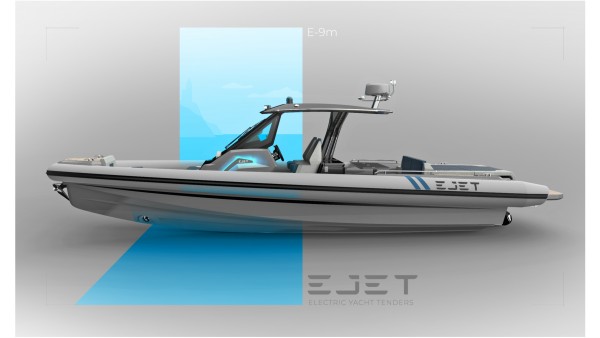
Ljubljana, Slovenia - March 21, 2024 —
Much like their highly acclaimed 4X tender, the upcoming 9X model sports EJET’s proprietary electric motor and drivetrain, going in line with founder Žiga Jarc’s mission of providing sustainable transportation options for yacht owners and guests. Both models will be available in the summer, with the 9X build slated for initial testing in July.
For more information, please visit https://ejet.co/
The announcement follows EJET’s recent appearance at the Boot Düsseldorf Boat Show. Having received the International Boat Industry’s Rising Star Award, the company revealed the development of its larger 9X model with the aim of promoting environmental responsibility within the boating industry.
Designed to be lightweight and compact without sacrificing output or speed, the new tender will be powered by a 220 kWh battery and a 300 kW motor, with an option to upgrade to 340 kW, ensuring 98% efficiency and making it suitable for sports such as water skiing. The boat’s V-shaped hull has been adjusted to accommodate EJET’s custom electric powertrain and is capable of withstanding turbulent waters and inclement weather conditions. Each boat is built with standard hydraulic steering mechanisms, along with the company’s military-grade jet system, allowing for easy maneuvering, reversing, and sudden stops in both low- and high-speed scenarios.
The 9X model will also feature a digital interface, which boaters will be able to use to select different driving modes and dynamics, view real-time GPS navigation and system data, and access the smart audio Bluetooth system. Additionally, amenities such as a hydraulic bathing platform, an electric grill, an ice maker, and a refrigerator will all be available as upgrade options for all 9X tenders.
About EJET Electric Yacht Tenders
Founded in 2016 by Žiga Jarc, EJET began with the goal of developing a zero-emissions electric yacht tender that did not compromise performance or safety. The company has since become a pioneer in electric propulsion systems and remains committed to future innovations in the boating industry. EJET tenders are currently the only products on the market with custom electric drivetrains.
EJET Electric Yacht Tenders, under the leadership of founder Žiga Jarc, is actively engaged in the development of its proprietary electric propulsion technology. The initiative is part of the company's broader commitment to innovation in high-performance, long-range powertrain technology for the marine industry. This effort underscores EJET's focus on delivering solutions characterized by their lightweight and compact design, high power output, and exceptional motor efficiency of up to 98%. With a specific emphasis on extending battery life, the company aims to set new benchmarks for what is achievable in electric propulsion within the boating sector.
“We built the company and the brand on three pillars: driver-centric experience, sustainability with clean electric power, and advanced electric propulsion technology,” says Ziga Jarc. “We cooperate with the best nautical partners to create unforgettable experiences for our customers.”
Interested parties can learn more by visiting https://ejet.co/contact-us/
Contact Info: Name: Žiga Jarc Email: Send Email Organization: EJET Electric Yacht Tenders Address: 16C Mokrška ulica, Ljubljana, Ljubljana 1000, Slovenia Phone: +386-41-688-998 Website: https://ejet.co/
Release ID: 89125030
If there are any errors, inconsistencies, or queries arising from the content contained within this press release that require attention or if you need assistance with a press release takedown, we kindly request that you inform us immediately by contacting [email protected] . Our reliable team will be available to promptly respond within 8 hours, taking proactive measures to rectify any identified issues or providing guidance on the removal process. Ensuring accurate and dependable information is our top priority.
More From Forbes
What candela’s electric hydrofoiling passenger ferry means for sustainable transportation.
- Share to Facebook
- Share to Twitter
- Share to Linkedin
The all-electric-powered Candela P-12 ferry flies over the water on hydrofoils
I would never say “I told you so,” but…now that Candela , the world’s leading producer of all-electric-powered hydrofoiling boats, has just closed the largest funding round in the company's history, I might be bold enough to say…”I’m not surprised.”
That’s because I’ve been closely following the development of this wonderfully smart company’s hydrofoiling boats since I test flew a P-7 near their small and efficient shop in Stockholm in 2021. So, I’m really not surprised they just raised over $25 million to expand production of their game-changing P-12 ferry. And since yacht building powerhouse Groupe Beneteau is a key partner in the largest fundraising round Candela has ever completed it appears Candela’s brand of tech-controled hydrofoiling is about to go global.
“Our investment perfectly aligns with Groupe Beneteau‘s ecological transition objectives, scaling up innovative solutions for more sustainable boating and unparalleled experiences,” says Bruno Thivoyon, CEO of Groupe Beneteau, the world's largest boat manufacturer (15 factories, 9 brands, and more than 8,000 yachts built annually) with a total revenue of over $1.5 billion in 2023. “Candela’s technology, enabling significantly more efficient electric vessels, will transform waterborne transport into its next sustainable phase.”
A Candela P-8 and P-12 underway near Stockholm, Sweden
“We couldn’t be more excited about having Groupe Beneteau on board,” says Gustav Hasselskog, Founder and CEO of Candela. “As the leading global boat company, their trust is a stamp of approval for our technology to transform waterborne transportation. We’re excited for the possibilities ahead."
Best High-Yield Savings Accounts Of 2024
Best 5% interest savings accounts of 2024.
The new investment round will help to scale up production to meet demand for the recently launched Candela P-12, the world’s first electric hydrofoil ferry. The P-12 is the first fast and long-range electric ferry on the market. Its efficient hydrofoil technology cuts lifetime emissions by 97.5% compared to diesel vessels, while simultaneously allowing operators to save up to 50% in operating costs. Since it generates minimal wake, the P-12 has been granted exemptions from speed limits, as for example on its maiden route in Stockholm, where it from July will cut travel times in half compared to road transport and legacy diesel vessels.
And it’s pretty obvious Hasselskog and company are on the right track. According to some projections the market for electric vessels is expected to be worth $14.2 Billion USD in 2030.
“We’ve spent years developing the technological maturity, and now we’re fit for scaling to commercial vessels. As in any industry, the fastest-scaling company will dominate the market,” says Hasselskog.
The Candela P-8 and P-12 hardly make a ripple as they fly over the water on computer-controlled ... [+] hydrofoils
Other backers in the round include longtime investors EQT Ventures , Ocean Zero LLC , and Kan Dela AB. The new investment brings total funding since Candela’s inception to over $75 million.
“EQT Ventures has steadfastly backed Candela's vision to accelerate the shift towards fossil fuel-free lakes and oceans since 2021. The launch of Candela's P-12 vessels signifies a watershed moment in sustainable transport", says Lars Jörnow, Partner at EQT Ventures.
The only question is: when will we see a P-12 ferry here in the US?

- Editorial Standards
- Reprints & Permissions
Candela’s electric ferries multiply as the startup lines up $25M in new funding
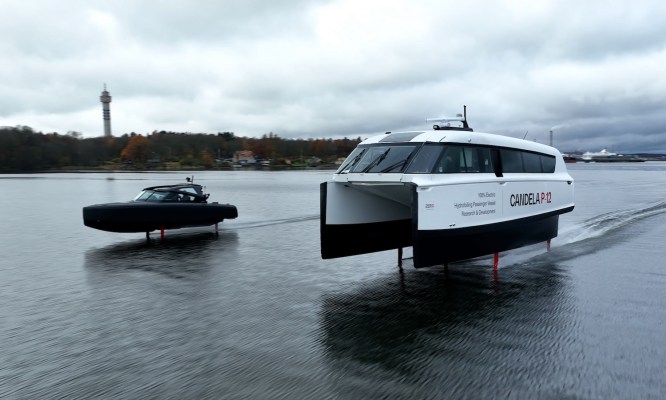
Electric boat maker Candela is approaching cruising speed with $25 million in new funding and the first commercial deployment of its new P-12 ferry in New Zealand. The company has global ambitions for its highly efficient boats and has completed and delivered dozens of them — which is a lot in this industry!
Candela has been slowly upping the size of its vessels for years, starting with the considerably smaller C-7 and C-8 (noting the length in meters) — of which, as of this week, they have now produced a total of 70. The P-12, a ferry design that can handle up to 30 passengers, made its debut late last year .
Just last week, the P-12 was given its first assignment: ferry people around New Zealand’s Lake Manapōuri , a scenic destination but also, more importantly, the site of the country’s largest hydroelectric power station. And now staff at that station can get to work via clean-running boat rather than driving, which the companies estimate will save around 240 tons of emissions per year. It’s a start, and it will help keep the lake clean and quiet.
International interest in these boats is also evident in the participation of Groupe Beneteau, a more than century-old boating company that makes thousands of vessels yearly, in the funding round. Groupe Beneteau CEO Bruno Thivoyon expressed in the press release that investing in Candela makes sense as part of the company’s “ecological transition objectives, scaling up innovative solutions for more sustainable boating.”
Many legacy boating companies are embracing electric engines and next-generation tech; I spoke with the head of another major manufacturer, Brunswick’s Dave Foulkes, at CES about it. He said that the collaborations are fruitful because the small, growing companies need the income and reach, while the larger ones need ready-to-deploy tech. Like any other industry, you have to know when to buy and when to build, and big boating companies are happy to buy — or invest.
Candela’s boats use hydrofoils with electric engines mounted on the bottom to effectively fly above the surface of the water once they get past a certain speed, vastly reducing energy consumption — historically and understandably a sticking point for electric boating. The approach does necessitate a powerful autopilot to keep it balanced, and despite their assurances, I wonder about how they’d handle log collisions, but overall the advantages seem to outweigh the drawbacks.
I drove one over the summer in Seattle (watching closely for logs, rather common in Elliott Bay) and wished they would replace the gas-chugging fast passenger ferries with P-12s. Candela isn’t the only one pursuing this market, either; Navier is also attempting to woo coastal communities with the draw of quiet, energy-efficient transit and is currently shuttling Stripe employees around the Bay Area . And while Zin Boats has been quiet for some time, they are also nailing down markets for the next version of their vessel.
The $25 million round was led, as mentioned, by Beneteau, with participation from EQT Ventures, Ocean Zero LLC, and Kan Dela AB.
Breaking rules, setting trends
- Open search box
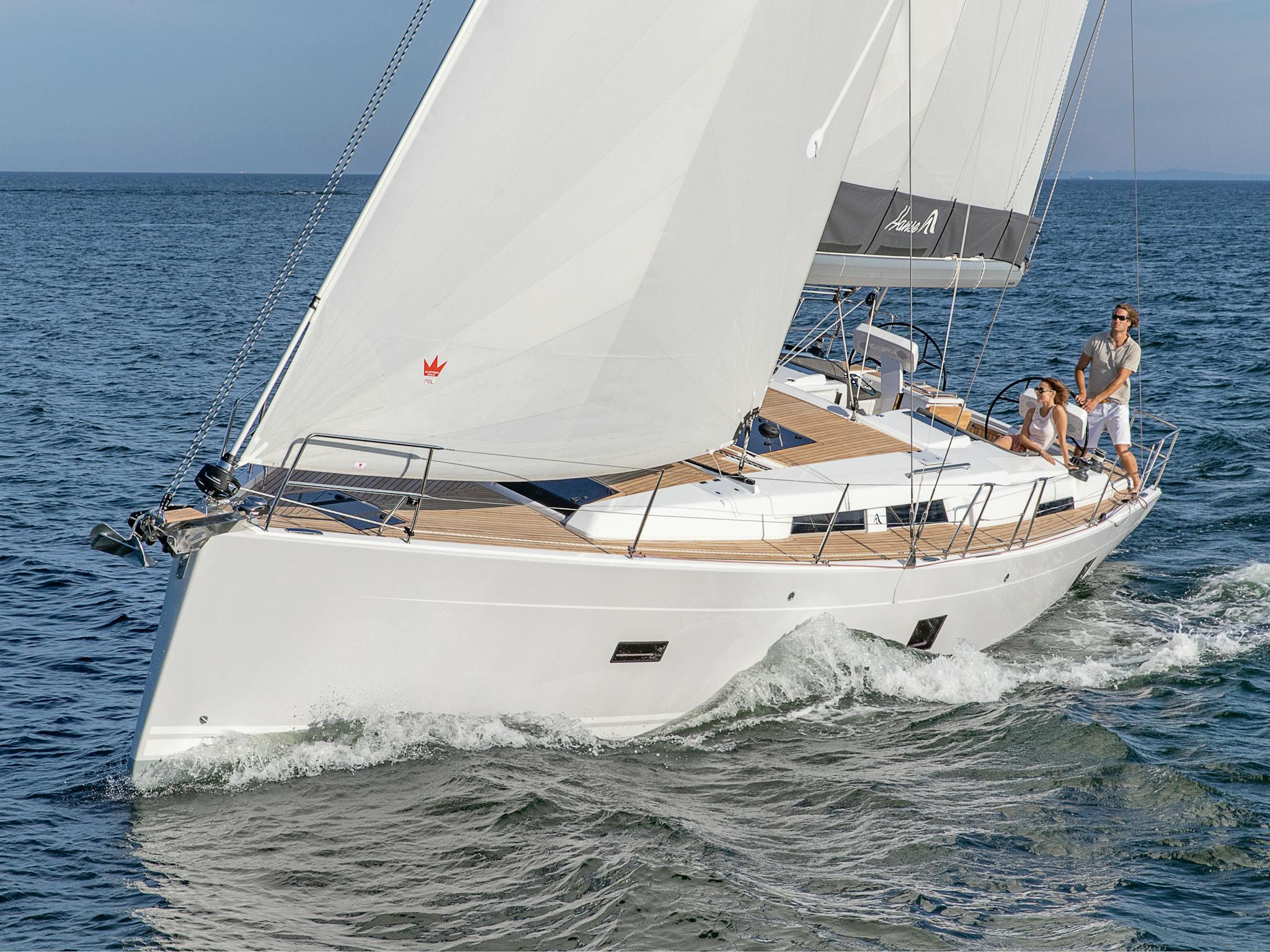
Legacy Model: Hanse 458
The new Hanse 458 is the yacht for all of those who set trends. With a pioneering design and the most thrilling performance in its class. With an exquisite interior and an exceptionally diverse range of customization options. The Hanse 458 caters to the highest demands on contemporary style and quality of life. Let yourself be amazed by excellence across 45 feet (ca. 14 m).
Exterior design
Our yachts combine excellent nautical characteristics, easy handling and breathtaking design.
Interior design
In our interiors you will find unique solutions that provide the ultimate in comfort and storage, a home-like experience and astonishing design.
The most important information about your Hanse.
Keep the most important information about your yacht at hand and read it even without the internet whenever you want to!
No documents found
Explore current Hanse models
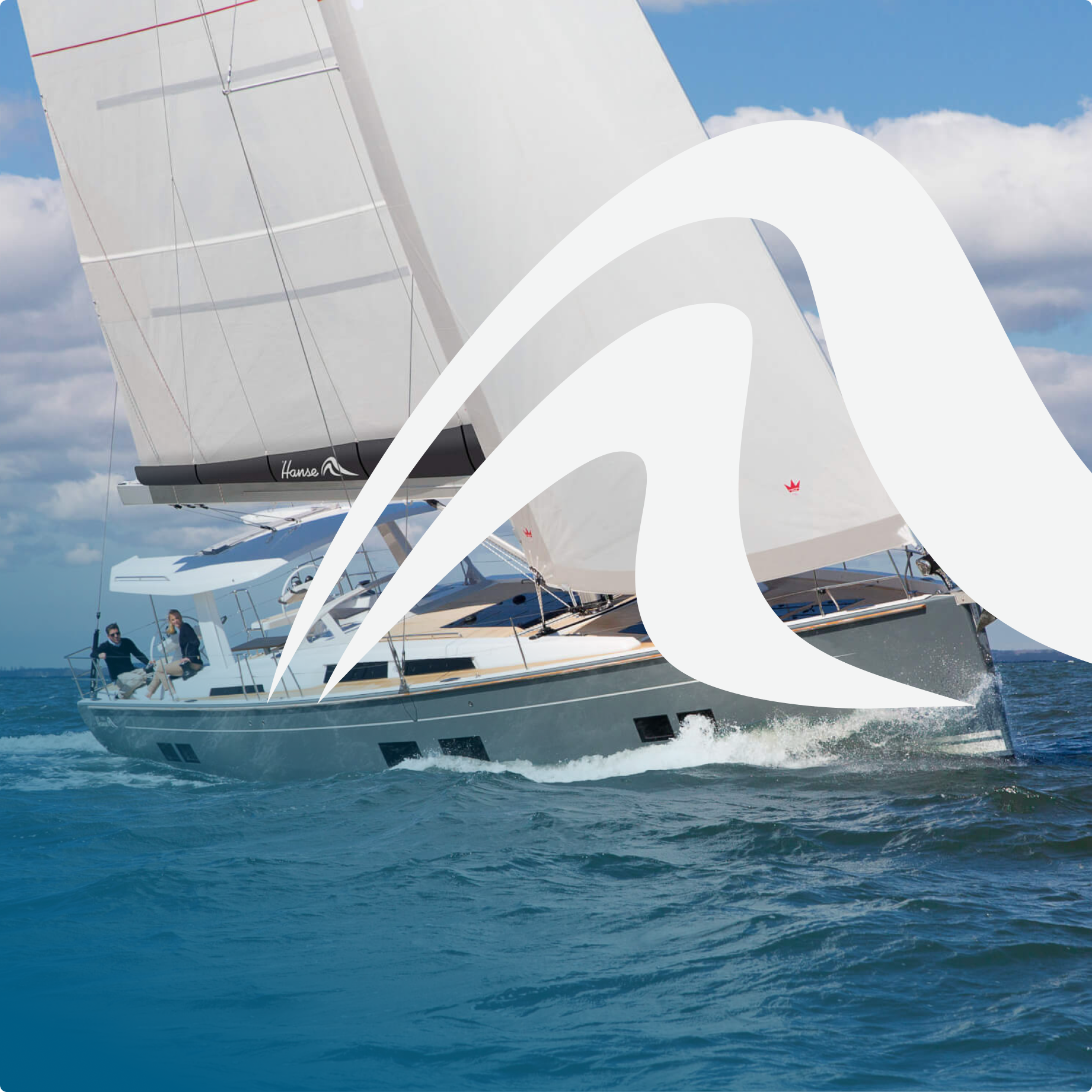
Customise your dream yacht in seconds!

Seize the moment - schedule your appointment today.

Friday 11 April 2014
Moscow metro - spirit of a city (e.p).

No comments:
Post a comment.

Turn Your Curiosity Into Discovery
Latest facts.

Facts About The Research in Epithalon Properties Overview Analysis

How To Protect Children From Junk Food Marketing
40 facts about elektrostal.
Written by Lanette Mayes
Modified & Updated: 02 Mar 2024
Reviewed by Jessica Corbett

Elektrostal is a vibrant city located in the Moscow Oblast region of Russia. With a rich history, stunning architecture, and a thriving community, Elektrostal is a city that has much to offer. Whether you are a history buff, nature enthusiast, or simply curious about different cultures, Elektrostal is sure to captivate you.
This article will provide you with 40 fascinating facts about Elektrostal, giving you a better understanding of why this city is worth exploring. From its origins as an industrial hub to its modern-day charm, we will delve into the various aspects that make Elektrostal a unique and must-visit destination.
So, join us as we uncover the hidden treasures of Elektrostal and discover what makes this city a true gem in the heart of Russia.
Key Takeaways:
- Elektrostal, known as the “Motor City of Russia,” is a vibrant and growing city with a rich industrial history, offering diverse cultural experiences and a strong commitment to environmental sustainability.
- With its convenient location near Moscow, Elektrostal provides a picturesque landscape, vibrant nightlife, and a range of recreational activities, making it an ideal destination for residents and visitors alike.
Known as the “Motor City of Russia.”
Elektrostal, a city located in the Moscow Oblast region of Russia, earned the nickname “Motor City” due to its significant involvement in the automotive industry.
Home to the Elektrostal Metallurgical Plant.
Elektrostal is renowned for its metallurgical plant, which has been producing high-quality steel and alloys since its establishment in 1916.
Boasts a rich industrial heritage.
Elektrostal has a long history of industrial development, contributing to the growth and progress of the region.
Founded in 1916.
The city of Elektrostal was founded in 1916 as a result of the construction of the Elektrostal Metallurgical Plant.
Located approximately 50 kilometers east of Moscow.
Elektrostal is situated in close proximity to the Russian capital, making it easily accessible for both residents and visitors.
Known for its vibrant cultural scene.
Elektrostal is home to several cultural institutions, including museums, theaters, and art galleries that showcase the city’s rich artistic heritage.
A popular destination for nature lovers.
Surrounded by picturesque landscapes and forests, Elektrostal offers ample opportunities for outdoor activities such as hiking, camping, and birdwatching.
Hosts the annual Elektrostal City Day celebrations.
Every year, Elektrostal organizes festive events and activities to celebrate its founding, bringing together residents and visitors in a spirit of unity and joy.
Has a population of approximately 160,000 people.
Elektrostal is home to a diverse and vibrant community of around 160,000 residents, contributing to its dynamic atmosphere.
Boasts excellent education facilities.
The city is known for its well-established educational institutions, providing quality education to students of all ages.
A center for scientific research and innovation.
Elektrostal serves as an important hub for scientific research, particularly in the fields of metallurgy, materials science, and engineering.
Surrounded by picturesque lakes.
The city is blessed with numerous beautiful lakes, offering scenic views and recreational opportunities for locals and visitors alike.
Well-connected transportation system.
Elektrostal benefits from an efficient transportation network, including highways, railways, and public transportation options, ensuring convenient travel within and beyond the city.
Famous for its traditional Russian cuisine.
Food enthusiasts can indulge in authentic Russian dishes at numerous restaurants and cafes scattered throughout Elektrostal.
Home to notable architectural landmarks.
Elektrostal boasts impressive architecture, including the Church of the Transfiguration of the Lord and the Elektrostal Palace of Culture.
Offers a wide range of recreational facilities.
Residents and visitors can enjoy various recreational activities, such as sports complexes, swimming pools, and fitness centers, enhancing the overall quality of life.
Provides a high standard of healthcare.
Elektrostal is equipped with modern medical facilities, ensuring residents have access to quality healthcare services.
Home to the Elektrostal History Museum.
The Elektrostal History Museum showcases the city’s fascinating past through exhibitions and displays.
A hub for sports enthusiasts.
Elektrostal is passionate about sports, with numerous stadiums, arenas, and sports clubs offering opportunities for athletes and spectators.
Celebrates diverse cultural festivals.
Throughout the year, Elektrostal hosts a variety of cultural festivals, celebrating different ethnicities, traditions, and art forms.
Electric power played a significant role in its early development.
Elektrostal owes its name and initial growth to the establishment of electric power stations and the utilization of electricity in the industrial sector.
Boasts a thriving economy.
The city’s strong industrial base, coupled with its strategic location near Moscow, has contributed to Elektrostal’s prosperous economic status.
Houses the Elektrostal Drama Theater.
The Elektrostal Drama Theater is a cultural centerpiece, attracting theater enthusiasts from far and wide.
Popular destination for winter sports.
Elektrostal’s proximity to ski resorts and winter sport facilities makes it a favorite destination for skiing, snowboarding, and other winter activities.
Promotes environmental sustainability.
Elektrostal prioritizes environmental protection and sustainability, implementing initiatives to reduce pollution and preserve natural resources.
Home to renowned educational institutions.
Elektrostal is known for its prestigious schools and universities, offering a wide range of academic programs to students.
Committed to cultural preservation.
The city values its cultural heritage and takes active steps to preserve and promote traditional customs, crafts, and arts.
Hosts an annual International Film Festival.
The Elektrostal International Film Festival attracts filmmakers and cinema enthusiasts from around the world, showcasing a diverse range of films.
Encourages entrepreneurship and innovation.
Elektrostal supports aspiring entrepreneurs and fosters a culture of innovation, providing opportunities for startups and business development.
Offers a range of housing options.
Elektrostal provides diverse housing options, including apartments, houses, and residential complexes, catering to different lifestyles and budgets.
Home to notable sports teams.
Elektrostal is proud of its sports legacy, with several successful sports teams competing at regional and national levels.
Boasts a vibrant nightlife scene.
Residents and visitors can enjoy a lively nightlife in Elektrostal, with numerous bars, clubs, and entertainment venues.
Promotes cultural exchange and international relations.
Elektrostal actively engages in international partnerships, cultural exchanges, and diplomatic collaborations to foster global connections.
Surrounded by beautiful nature reserves.
Nearby nature reserves, such as the Barybino Forest and Luchinskoye Lake, offer opportunities for nature enthusiasts to explore and appreciate the region’s biodiversity.
Commemorates historical events.
The city pays tribute to significant historical events through memorials, monuments, and exhibitions, ensuring the preservation of collective memory.
Promotes sports and youth development.
Elektrostal invests in sports infrastructure and programs to encourage youth participation, health, and physical fitness.
Hosts annual cultural and artistic festivals.
Throughout the year, Elektrostal celebrates its cultural diversity through festivals dedicated to music, dance, art, and theater.
Provides a picturesque landscape for photography enthusiasts.
The city’s scenic beauty, architectural landmarks, and natural surroundings make it a paradise for photographers.
Connects to Moscow via a direct train line.
The convenient train connection between Elektrostal and Moscow makes commuting between the two cities effortless.
A city with a bright future.
Elektrostal continues to grow and develop, aiming to become a model city in terms of infrastructure, sustainability, and quality of life for its residents.
In conclusion, Elektrostal is a fascinating city with a rich history and a vibrant present. From its origins as a center of steel production to its modern-day status as a hub for education and industry, Elektrostal has plenty to offer both residents and visitors. With its beautiful parks, cultural attractions, and proximity to Moscow, there is no shortage of things to see and do in this dynamic city. Whether you’re interested in exploring its historical landmarks, enjoying outdoor activities, or immersing yourself in the local culture, Elektrostal has something for everyone. So, next time you find yourself in the Moscow region, don’t miss the opportunity to discover the hidden gems of Elektrostal.
Q: What is the population of Elektrostal?
A: As of the latest data, the population of Elektrostal is approximately XXXX.
Q: How far is Elektrostal from Moscow?
A: Elektrostal is located approximately XX kilometers away from Moscow.
Q: Are there any famous landmarks in Elektrostal?
A: Yes, Elektrostal is home to several notable landmarks, including XXXX and XXXX.
Q: What industries are prominent in Elektrostal?
A: Elektrostal is known for its steel production industry and is also a center for engineering and manufacturing.
Q: Are there any universities or educational institutions in Elektrostal?
A: Yes, Elektrostal is home to XXXX University and several other educational institutions.
Q: What are some popular outdoor activities in Elektrostal?
A: Elektrostal offers several outdoor activities, such as hiking, cycling, and picnicking in its beautiful parks.
Q: Is Elektrostal well-connected in terms of transportation?
A: Yes, Elektrostal has good transportation links, including trains and buses, making it easily accessible from nearby cities.
Q: Are there any annual events or festivals in Elektrostal?
A: Yes, Elektrostal hosts various events and festivals throughout the year, including XXXX and XXXX.
Was this page helpful?
Our commitment to delivering trustworthy and engaging content is at the heart of what we do. Each fact on our site is contributed by real users like you, bringing a wealth of diverse insights and information. To ensure the highest standards of accuracy and reliability, our dedicated editors meticulously review each submission. This process guarantees that the facts we share are not only fascinating but also credible. Trust in our commitment to quality and authenticity as you explore and learn with us.
Share this Fact:
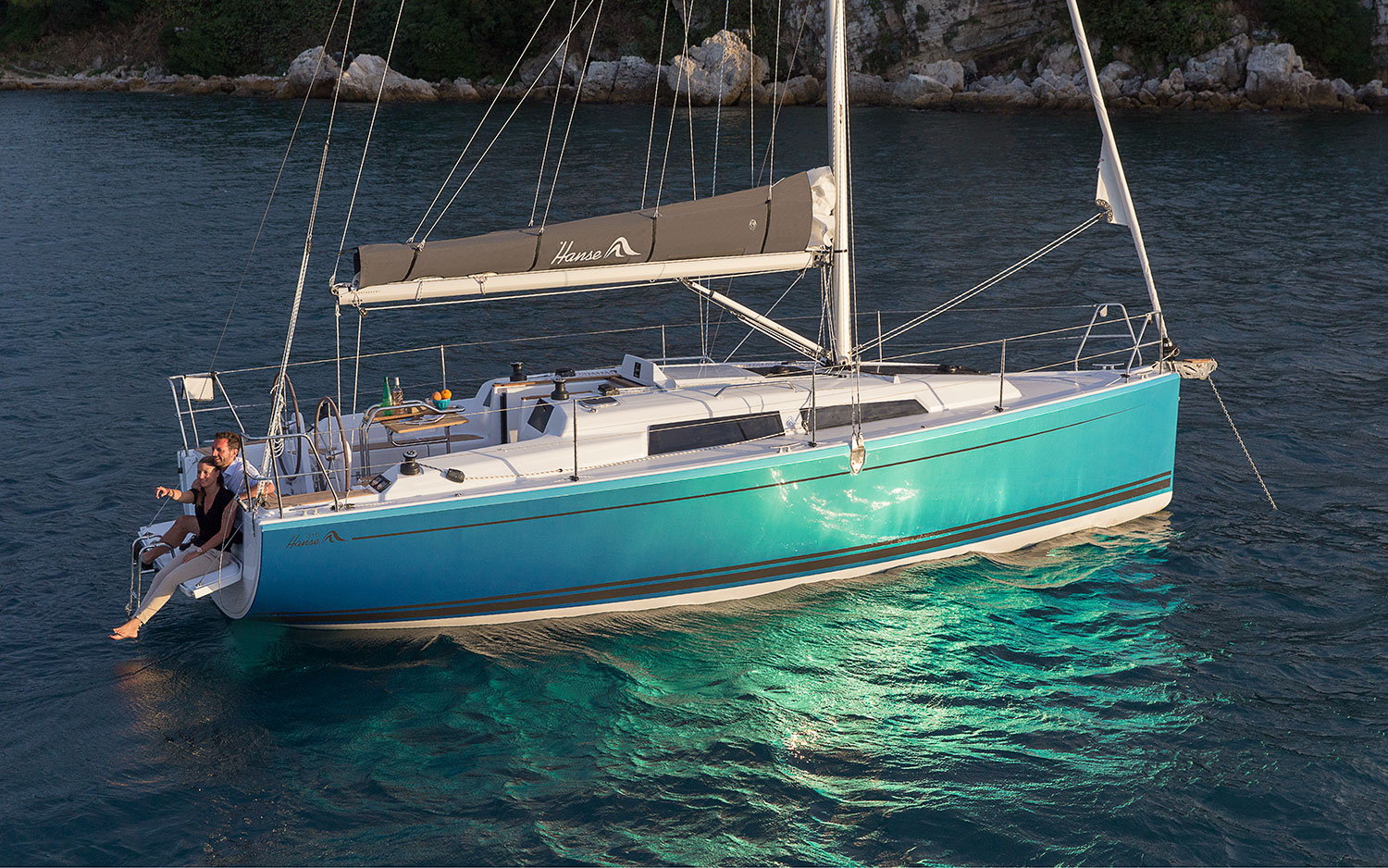
Apr 24, 2018. Hanse's E-motion electric rudder drive represents a true breakthrough in auxiliary propulsion for saiboats. When news that Hanse Yachts had launched a new form of electric-powered yacht first broke in the winter of 2016, it was widely reported. After all, Hanse is one of the world's biggest builders of sailing boats, so this ...
For the first time, the Hanse 410 offers optional electric propulsion with an enormous range of up to 55 nautical miles. This means that even without wind, most destinations can be reached in a climate-friendly way. Hanjo Runde, CEO of HanseYachts : " This innovative electric drive is an important step towards making our product range even ...
The E-MOTION RUDDER DRIVE is a revolution in Yachting.The Hanse 315 e-motion rudder drive was developed in cooperation with the partners Jefa and Torqeedo an...
Hanse 410. Step into the future. Redefining elegance on the seas, her optimized hull featuring chines at the bow and stern provides the uncompromising performance and easy sailing typical for Hanse. Optional electric propulsion and other sustainability features minimise her environmental footprint. And up to three expansive cabins and the ...
The world's third largest boatbuilder, Hanse Yachts, is perhaps the most advanced - offering its entry-level Hanse 315 with an electric rudder-drive option. The system takes up less space than ...
For the first time, the Hanse 410 introduces an optional electric propulsion system, boasting a remarkable range of up to 55 nautical miles. For even greater independence, a fuel cell delivers emission-free energy. Or, turn to the proven power of solar technology to keep essential appliances running on board without burning any fuel.
Its innovative hull shape ensures unrestricted performance. With its unprecedented 51-foot dimensions, the Hanse 510 offers the largest dinghy garage in its class. The spacious cockpit is the perfect place to relax with family and friends. From the generous owner's cabin to the salon to the comfortable crew cabin, this yacht offers exquisite ...
Oct 31, 2016. In Hanse's innovative Rudder Drive system, a Torqeedo electric motor embedded in the boat's rudder provides propulsion. The system will make its debut on the new Hanse 315 e-motion. It was developed by Hanse in conjunction with fellow German company Torqeedo, a leader in electric propulsion, and Jefa, the Danish steering ...
Hanse Yachts introduces E-Motion Rudder Drive - an interesting propulsion type, with a special folding propeller….. An electric engine and a folding propeller have been installed into the rudder shaft, replacing the combination of diesel engine and sail drive. As a result, the propeller thrust is in line with the rudder position. This enables turning in the smallest circles or rotating ...
How it works the new electric propulsion system created by Hanse Yachts and Torqeedo.
Hanse returned to Berret-Racoupeau, who also designed the 460 (a Top 10 Best Boats 2023 winner), to create the 510, and the result can leave you lingering over the lines. Starting with an aggressive, wave-piercing reverse bow, the relatively flat sheer and low deckhouse give this boat a fast, agreeably sharkish look even sitting still, despite ...
Controlling the boat in itself is so much easier anyway, especially if - as most owners of the Hanse 460 will - you upgrade to electric winches, electric in-mast reefing and electric furling ...
World launch at the Hanseboot Hamburg. For the first time, the new propulsion system will be presented installed in the Hanse 315 e-motion rudder drive at the International Boat Show Hanseboot 2016 in Hamburg. We are looking forward to welcoming you to the Hanse Yachts booth (hall 6, booth C108) on Sunday, October 30, 2016 at 2 pm. PDF Download.
Hanse 315. Voted European Yacht of the Year right after its launch, the Hanse 315 is the epitome of what makes a yacht great. With its perfect sailing characteristics and easy handling, the 31-foot entry-level model is easy to maneuver. Two staterooms, a spacious salon with L-shaped pantry and the largest cockpit in its class provide true comfort.
Hanse. Hanse is a yacht brand that currently has 310 yachts for sale on YachtWorld, including 95 new vessels and 215 used yachts, listed by experienced yacht brokers mainly in the following countries: United States, Germany, Spain, Greece and Croatia. The selection of models featured on YachtWorld spans a spectrum of sizes and lengths ...
The Berret-Racoupeau-designed Hanse 460 turned heads as a 2022 Boat of the Year nominee with a fresh take on comfort and volume but with an eye better sailing performance. The second model in the new range designed by the Berret-Racoupeau team, the Hanse 510 is set to make its US premiere at the 2023 Annapolis Sailboat Show—again as a Boat of the Year contender.
Hanse Yachts. Hanse 315, Torqeedo e-motion rudder drive, Jeremy Rodgers Limited. Contessa 32 new build, Beta/Hybrid ... (also with 2 x 10 kW). Salona 46, also known as the "almost perfect electric sailboat" in this Sailing Uma video. Picture from salonayachts.com. Spirit Yachts. SPIRIT 44CR(E), Oceanvolt 15 kW. Viator Marine. Viator ...
The nation's first all-electric tug boat has docked at the Port of San Diego and expects to begin emissions-free operations in about a month. Operated by Crowley Maritime Corporation, the 82 ...
Boat engineering and design company EJET Electric Yacht Tenders has announced the development of its latest electric motor 9X yacht tender model. Ljubljana, Slovenia - March 21, 2024 — Much like ...
Check out this Used 2024 Hanse 418 for sale in Newport, RI 02840. View this Cruisers and other Sail boats on boattrader.com. ... all while enjoying the elegance and style of the very well-designed HANSE Yachts 418. Feel right at home on the open seas with the trademark fast hull line and impressive sail plan, crafted by the world-renowned yacht ...
The all-electric-powered Candela P-12 ferry flies over the water on hydrofoils. Candela. I would never say "I told you so," but…now that Candela, the world's leading producer of all ...
Boat Review: Hanse 315. The baby of the Hanse 5 series, the 315, looks surprisingly serious at the dock. She's got an almost predatory look, even compared to any 50-footers that might be in the area—which seems funny until she gets out on the water and kicks some booty. Between her easy-sailing rig that cuts down on tacking drama and her ...
Electric boat maker Candela is approaching cruising speed with $25 million in new funding and the first commercial deployment of its new P-12 ferry in New Zealand. The company has global ambitions ...
Hanse 458. The new Hanse 458 is the yacht for all of those who set trends. With a pioneering design and the most thrilling performance in its class. With an exquisite interior and an exceptionally diverse range of customization options. The Hanse 458 caters to the highest demands on contemporary style and quality of life.
Find company research, competitor information, contact details & financial data for BETA GIDA, OOO of Elektrostal, Moscow region. Get the latest business insights from Dun & Bradstreet.
It has been over a year since first being introduced to Limerick based 4-piece Moscow Metro* through their wonderful debut double-A side containing the tracks "Spirit of a City" and "Cosmos" for free, which sounded near perfect in spite of the band only being together for a few months at the time of recording. Now fast-forward 12 months, and as a result of the initial love for the band, they ...
Known as the "Motor City of Russia." Elektrostal, a city located in the Moscow Oblast region of Russia, earned the nickname "Motor City" due to its significant involvement in the automotive industry.. Home to the Elektrostal Metallurgical Plant. Elektrostal is renowned for its metallurgical plant, which has been producing high-quality steel and alloys since its establishment in 1916.
Local band Moscow Metro (featuring Barry McNulty, Sean Corcoran, Dylan Casey & Alan Holmes) will perform on the Cosby Stage at 12.55pm on Saturday at the Electric Picnic.
- Election 2024
- Entertainment
- Newsletters
- Photography
- Personal Finance
- AP Investigations
- AP Buyline Personal Finance
- AP Buyline Shopping
- Press Releases
- Israel-Hamas War
- Russia-Ukraine War
- Global elections
- Asia Pacific
- Latin America
- Middle East
- Election Results
- Delegate Tracker
- AP & Elections
- Auto Racing
- 2024 Paris Olympic Games
- Movie reviews
- Book reviews
- Personal finance
- Financial Markets
- Business Highlights
- Financial wellness
- Artificial Intelligence
- Social Media
The world’s largest 3D printer is at a university in Maine. It just unveiled an even bigger one
University of Maine, which boasts the world’s largest 3D printer, developed one even bigger that may one day create entire neighborhoods. The thermoplastic polymer printer was dubbed the “Factory of the Future 1.0.”
The BioHome3D is seen Tuesday, April 23, 2024, at the University of Maine, in Orono, Maine. The 600-square-foot single-family home was made by UMaine’s original 3D printer in 2019. (AP Photo/Robert F. Bukaty)
- Copy Link copied
The world’s largest 3D printer is seen Tuesday, April 23, 2024, at the University of Maine, in Orono, Maine. (AP Photo/Robert F. Bukaty)
The inside of the University of Maine’s first 3D printed home is visible on Oct. 12, 2023, in Orono, Maine. The printer that created the house can cut construction time and labor. An even larger printer unveiled on Tuesday, April 23, 2024, may one day create entire neighborhoods. (AP Photo/Kevin Bennett)
Habib Dasher, director of UMaine’s Advanced Structures & Composite Center, speaks at the unveiling of the world’s largest 3D printer, Tuesday, April 23, 2024, at the University of Maine, in Orono, Maine. (AP Photo/Robert F. Bukaty)
A bed sits inside the University of Maine’s first 3D printed home on Oct. 12, 2023, in Orono, Maine. The printer that created the house can cut construction time and labor. An even larger printer unveiled on Tuesday, April 23, 2024, may one day create entire neighborhoods. (AP Photo/Kevin Bennett)
A cross section of an exterior wall of a house is being printed on a 3D printer at the University of Maine’s Advanced Structures & Composite Center on Oct. 12, 2023, in Orono, Maine. An even larger printer unveiled on Tuesday, April 23, 2024, may one day create entire neighborhoods. (AP Photo/Kevin Bennett)
The University of Maine’s first 3D printed home sits on Oct. 12, 2023, in Orono, Maine. The printer that created the house can cut construction time and labor. An even larger printer unveiled on Tuesday, April 23, 2024, may one day create entire neighborhoods. (AP Photo/Kevin Bennett)
ORONO, Maine (AP) — The world’s largest 3D printer has created a house that can cut construction time and labor. An even larger printer unveiled on Tuesday may one day create entire neighborhoods.
The machine revealed Tuesday at the University of Maine is four times larger than the first one — commissioned less than five years ago — and capable of printing ever mightier objects. That includes scaling up its 3D-printed home technology using bio-based materials to eventually demonstrate how printed neighborhoods can offer an avenue to affordable housing to address homelessness in the region.
Thermoplastic polymers are extruded from a printer dubbed the “Factory of the Future 1.0,” said Habib Dagher, director of UMaine’s Advanced Structures & Composite Center, where both of the current printers are located. It combines robotics operations with new sensors, high-performance computing and artificial intelligence, Dagher said.
And there could be even larger printers in the future after the University of Maine breaks ground this summer on a new building.
“We’re learning from this to design the next one,” he said.
Those attending the event included representatives from departments of defense, energy and housing, as well as other stakeholders who plan to utilize the new technologies made available by the printer. Heidi Shyu, undersecretary of defense for research and engineering, said the printer exceeded her expectations and “stands as a beacon of innovation.”
Shrouded by a black curtain, the printer was on and whirring behind the speakers during the event. At the end, the curtain opened revealing the printer was working on a test project for a future boat.
The printer’s frame fills up the large building in which it’s housed on the UMaine campus, and can print objects 96 feet long by 32 feet wide by 18 feet high (29 meters by 10 meters by 5.5 meters).
It has a voracious appetite, consuming as much as 500 pounds (227 kilograms) of material per hour.
The original printer, christened in 2019, was certified by Guinness World Records as the world’s largest polymer 3D printer, the university said. It was used to create a 600-square-foot, single-family home made of wood fiber and bio-resin materials that are recyclable. Dubbed “BioHome3D,” it showed an ability to quickly produce homes. To meet the growing demand for housing, Maine alone will need another 80,000 homes over the next six years, according to MaineHousing.
Dagher said there’s a shortage of both affordable housing and workers to build homes. The university wants to show how homes can be constructed nearly entirely by a printer with a lower carbon footprint. The buildings and construction sector accounts for roughly 37% of global greenhouse gas emissions, largely due to the production and use of materials such as cement, steel and aluminum that have a significant carbon footprint, according to the United Nations Environment Programme.
Such printed buildings can be recycled, which is unique compared to current construction. “You can basically deconstruct it, you can grind it up if you wish, the 3D printed parts, and reprint with them, do it again,” Dagher said before the event.
“It’s not about building a cheap house or a biohome,” he added, referring to the first 3D-printed house made entirely with bio-based materials. “We wanted to build a house that people would say, ‘Wow, I really want to live there.’”
The Army Corps of Engineers provided most of the funding for the new printer, which cost several million dollars, said Dannel Malloy, chancellor of the University of Maine System. It was built by the university in collaboration with Ingersoll Machine Tools Inc. for construction of the printer and Somatex for the supporting structure, officials said.
Looking ahead, researchers plan to tinker with the material consumed by the machine, including more bio-based feedstocks from wood residuals that are abundant in Maine, the nation’s most heavily forested state.
But it can be used for a variety of other creations and already has been used for a range of things, from boats to defense department structures. In the past, the university showed off a 25-foot boat created by the first printer. Upcoming projects with the new printer include a 50-foot boat and houses to serve homeless people, Dagher said.
As for the original 3D printer, it isn’t going away. The two printers can be used in concert to streamline manufacturing by working on the same project — or even part if necessary — and there will be even more of them working together in the future, officials said.
McDermott reported from Providence, Rhode Island.
This story has been corrected to indicate that one of the university’s partners was Ingersoll Machine Tools Inc., not Ingersoll Rand.


IMAGES
VIDEO
COMMENTS
A used fiberglass boat in decent condition can be found for a third to half the cost of parts and materials for a comparable home-built boat. For example, the 21ft gaff-rigged cutter I'm currently building will end up costing between $33,000 and $35,000, fully outfitted—several thousand dollars more than the new prices of a couple of ...
Sailboats that you can build from home will likely be a small boat under 20 feet. These could be from many different boat suppliers such as B&B Yachts, Brooks Boat Designs, and Chase Small Craft. Boat plans will vary based on your budget and how much time you have on your hands. Based on my previous experience, building your own boat will take ...
affiliate links Cabin Cruiser, Free Sailboat Plans Petrel You can build this 16ft boat as a day sailer or an overnighter with cabin. Petrel is a Free Sailboat Plan that fulfils the greatest possible variety of uses in one model, offering the builder either an open-cockpit racing craft with comfortable accommodation for day sailing or a snug cabin model with accommodation for overnight trips to ...
Boat plans. Hartley Boats has the widest range of boat plans for sail boats, power boats, catamarans and trimarans, dinghys and small craft, canoes and kayaks, surfboards and surf skis, vintage power boats, self steering capabilities and trailers. Established in 1938, more than 100,000 boats have now been built by enthusiasts from our plans.
Westhaven 32. $ 285.00 - $ 300.00 (USD) Build your own sail boat yatch from 9 feet to 63 feet in length. Fully featured wooden boat plans for home construction in Plywood, Steel and Fibre Glass.
Skerry. Sailing Dinghies. Faering Cruiser. Kayak-Canoe Sailrig. Pacific Proas. Independence R/C Model. Our collection of sailboat kit designs from 8 to 31 feet. Strong, lightweight okoume plywood means strong, lightweight sailing craft. Most of our sailboats can be cartopped, all of them sail beautifully, and all of them are easy to build.
The sailboat hull can be constructed in a step-by-step process. Here is how you can construct a strong and durable sailboat hull: Step 1. Create the hull mold: Start by building a robust and long-lasting frame that accurately represents the shape and size of the hull. Step 2.
A wooden sailboat can cost around $1,000 to build. (Source: Instructables) The boat is typically built from 4×8 sheets of plywood and measures 8 feet in length. (Source: Instructables) Various tools such as a pull-saw, table saw, router, sander, and drill are needed for building a wooden sailboat. (Source: Instructables)
Plywood yacht for self-construction, complete process of assembling the yacht hull in 30 min.DIY boat.More information about the yacht can be found on our we...
Tartan 30 SR 150% Furling Genoa Sail Kit. Tartan 30 SR Main Sail Kit. Catalina 22 MK II Asymmetrical Cruising Spinnaker Sail Kit. Catalina 22 MK II 135% Furling Genoa Sail Kit. Catalina 22 MK II 110% Jib Sail Kit. Catalina 22 MK II 150% Genoa Sail Kit. Catalina 22 MK II Main Sail Kit. Sandpiper 565 Main Sail Kit.
Step 1: Cutting Out the Parts... First, you'll need boat building plans. I purchased some very nice ones from a popular boat building website because I had a specific style in mind to build, a "pram". It's a Norwegian design with lots of buoyancy in the bow and building a pointy boat is a little more difficult.
If you want to build a boat, we have what you need. Chesapeake Light Craft is your source for boat kits, kayak kits, boat plans, and boatbuilding materials. Our original, award-winning boat designs include kayaks, canoes, rowing boats, dinghies, and sailboats. More than 40,000 CLC boats have been built from kits and plans. Our designs are built ...
Late in 2015, just as James Oakley was finishing the hull of his home-built aluminium speedboat, he was diagnosed with…. Around the world in a 5.8m boat! Meet the sailor preparing to race a Class Globe 5.80. British sailor Adam Waugh is currently building his 5.8m boat at his home in Northumberland before taking part in the….
Here's the whole story, in words and pictures. How to Build a Boat: Part 1: The All-Important Preparation. Part 2: How to Build a Boat Hull in Western Red Cedar. Part 3: Sheathing the Hull in Woven Glass Rovings. Part 4: Cutting and Installing the Plywood Bulkheads. Part 5: Building the Interior Structure.
Build CROW, a unique 15' 8" Camp Cruising Sailboat built from cheap ply and lumber from the local building supply, made a very cool boat! Visit RoyDesignedTh...
Every year, thousands of amateurs much like yourself build their own boats the proven Glen-L way. Many builders save 50% or more over the price of a factory-built boat. It's easier than you might think, and it can be a rewarding experience. Industry experts. 60+ Years. Established in 1953. 300+ Models.
A simple 14' rowboat, for example, can go for well over a grand. Believe it or not, this 48 foot ketch is built of cement—and it's currently for sale, on YachtWorld. 9. Ferrocement. If you want to build a boat over 20 feet, as counter-intuitive as it might seem, cement actually makes a pretty good material.
From the past 50 years, and to the next 50, Catalina is devoted to providing owners and dealers with quality and value that has made Catalina America's largest sailboat builder. Frank Butler's vision and philosophy carries forward with Sharon Day, who worked alongside Frank for 48 years, at the helm of a veteran leadership team. Catalina ...
Home built preowned sailboats for sale by owner. Home built used sailboats for sale by owner.
On the Moscow Millionaire Fair 2007 the very last wooden Riva boat manufactured for sale after more then 150 years of traditional boat building was exhibited on our stand. This Riva Aquarama Special hull#783 is a milestone in the boating industry as it marked the end of a unique sculpture, built with passion and instantly becoming a Myth.
Floating homes, which get their name from being built upon wooden, concrete, or steel "floats," are a popular lifestyle choice in several coastal U.S. cities. Unlike houseboats—which they ...
All Dyna-Ski pylons are pinned into a base bracket that is fastened to the floor. On some Dyna-Ski boats the base bracket has two mounting positions or heights for the pylon. 42" and 83" pylon s. Dyna-Ski offers a machined adapter to mount a Barefoot International/Fly High pylon extension to the Dyna-Ski Pylon. Below is the adapter on a pylon.
Dyna-Ski 17.6 Open Bow with 150 Evinrude. In addition to Dyna-Ski Boats the boat shop also builds Recon Fishing Boats. Like Dyna-Ski Boats Recon Fishing Boats are pretty much all made to order although Recon uses a dealer network to sell their boats. Dyna-Ski prefers to sell our custom made to order boats directly as it saves the customer money.
The 113,000-tonne vessel sailed to the south coast after being built over five years at a cost of more than £500 million. Tug boats sprayed water as the ship arrived Credit: Andrew Matthews/PA
The second model in the new range designed by the Berret-Racoupeau team, the Hanse 510 is set to make its US premiere at the 2023 Annapolis Sailboat Show—again as a Boat of the Year contender.... Hanse Yachts. Hanse 315, Torqeedo e-motion rudder drive, Jeremy Rodgers Limited. Contessa 32 new build, Beta/Hybrid ... (also with 2 x 10 kW).
Dagher said there's a shortage of both affordable housing and workers to build homes. The university wants to show how homes can be constructed nearly entirely by a printer with a lower carbon footprint. ... Upcoming projects with the new printer include a 50-foot boat and houses to serve homeless people, Dagher said. As for the original 3D ...